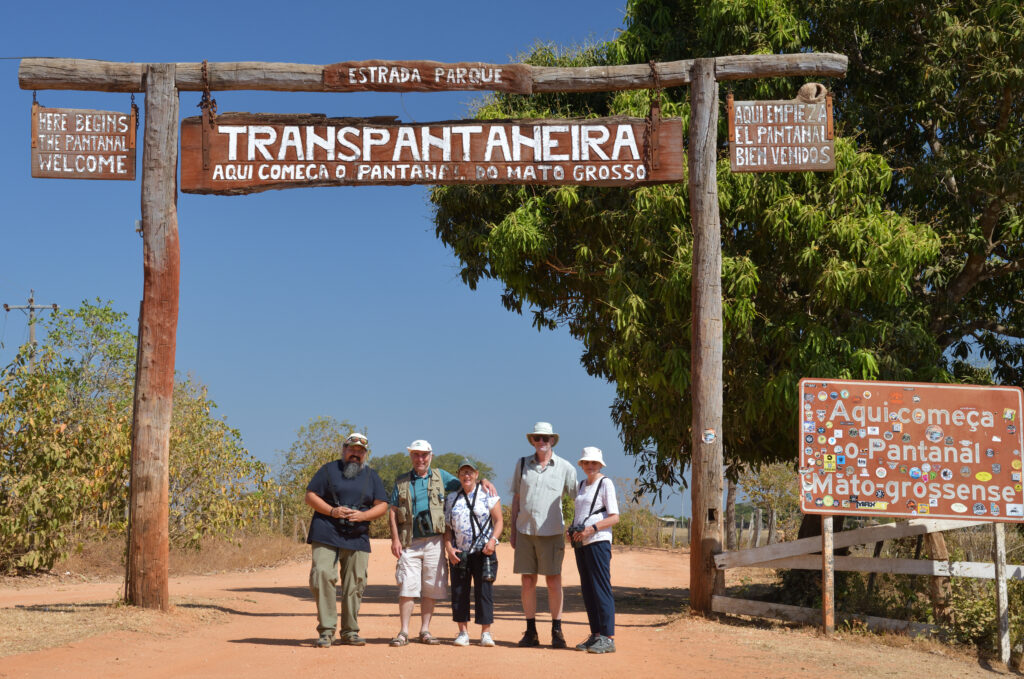
Twenty three hours, give or take a minute, after leaving home, we land at Cuiabá airport at 8.45am under a lovely clear blue sky and meet Marco, our local guide for the Pantanal part of the trip. An hour later the first bird for the list is Turkey Vulture, followed shortly after by Swallow-tailed Kite, Southern Crested Caracara and Black Vulture, and then our first Greater Rheas, large flightless birds, and Capybara, the world’s largest rodent, on the road south to Poconé, which is the gateway to the Pantanal. After a meat feast of a lunch here, in the popular Pousada Pantaneira, the tarmac soon runs out. This is the famous Transpantaneira dirt road heading south into the Pantanal wetlands, which are largely dry at this time of year except for isolated pools. It’s hard to believe that this parched dusty landscape will become inundated in the wet season. Early sightings along the road include a tree full of Wood Storks, as well as birds along the roadside wires like Guira Cuckoo, Tropical Kingbird and Great Kiskadee.
Beyond a large ranch-style Transpantaneira sign across the top of the dirt road, the first stop produces a bewildering diversity of birdlife, and with so much to see it’s hard to keep up with the sightings which include Great, Snowy and Cattle Egrets, Buff-necked, Bare-faced and Green Ibises, Little Blue, Cocoi, Capped and Striated Herons, Roseate Spoonbill, Wood Stork, Wattled Jacana, Grey-cowled Wood Rail, Southern Lapwing, Snail Kite, Roadside Hawk, Large-billed and Yellow-billed Terns, Ringed Kingfisher, Yellowish Pipit, Rufous Hornero, Yellow-chinned Spinetail, Black-backed Water Tyrant, White-headed Marsh Tyrant and Saffron Finch, and all in just a few minutes!
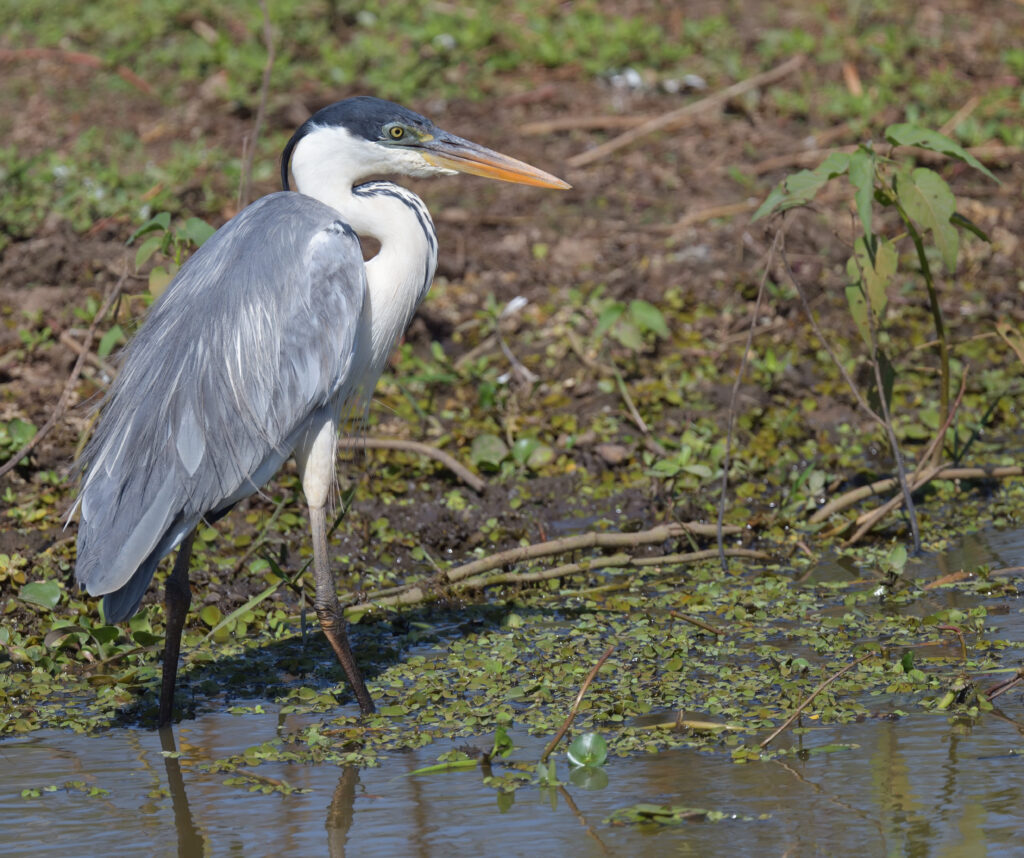

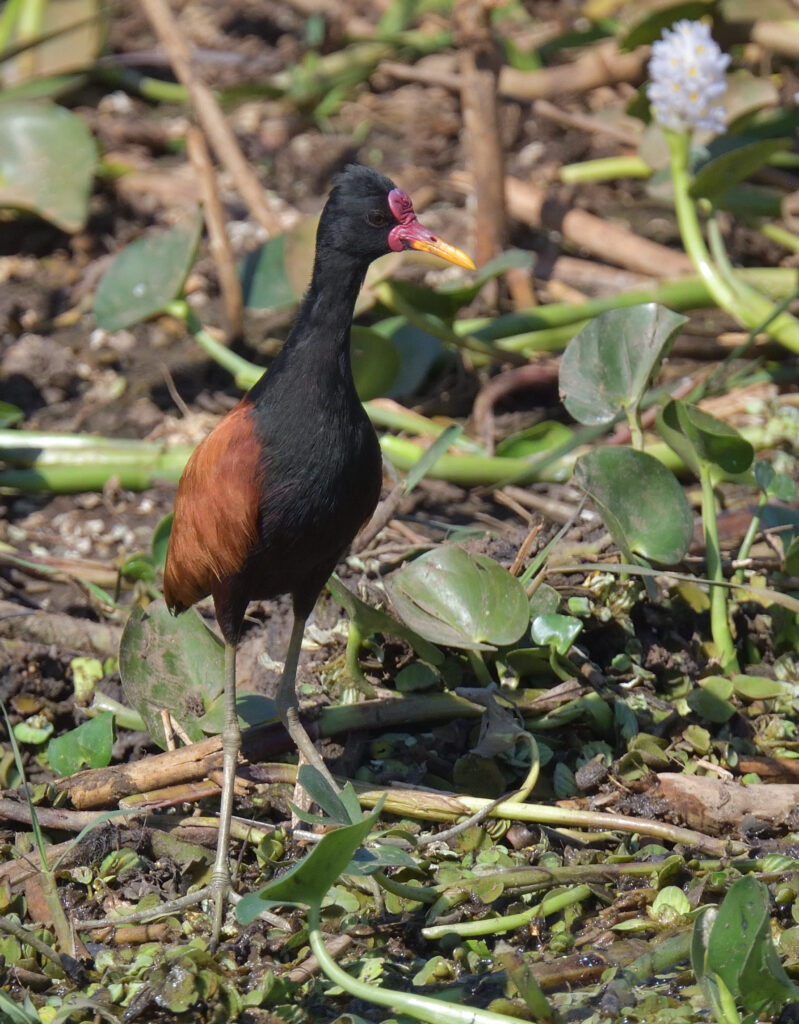
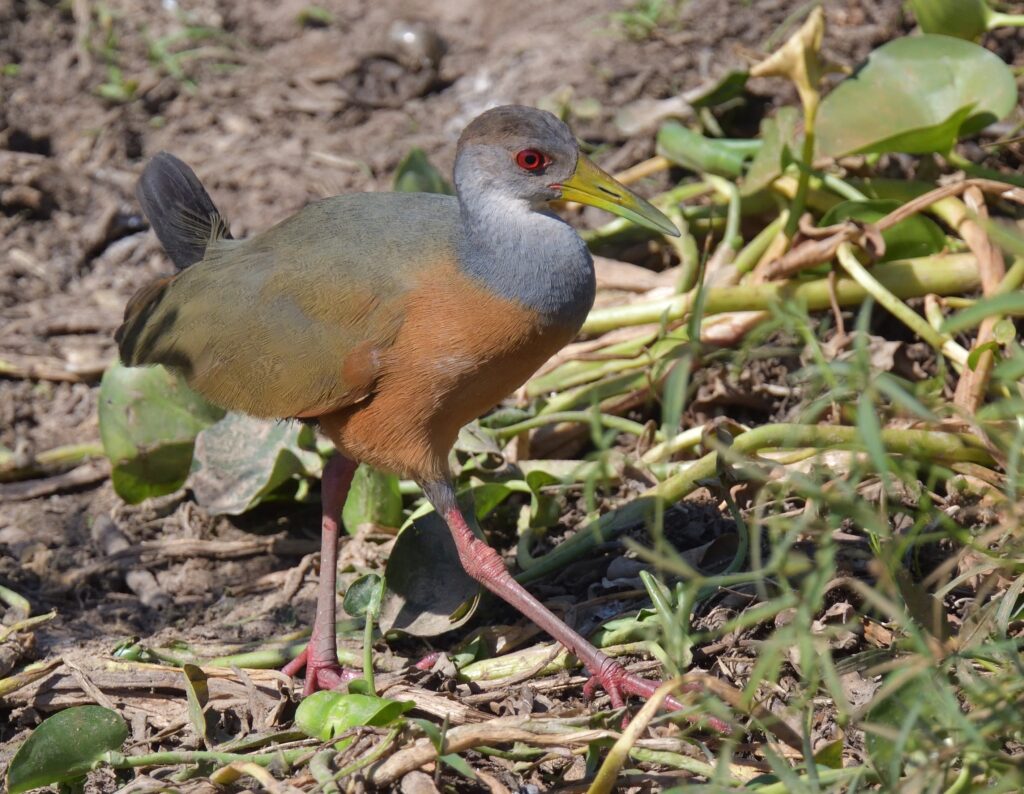
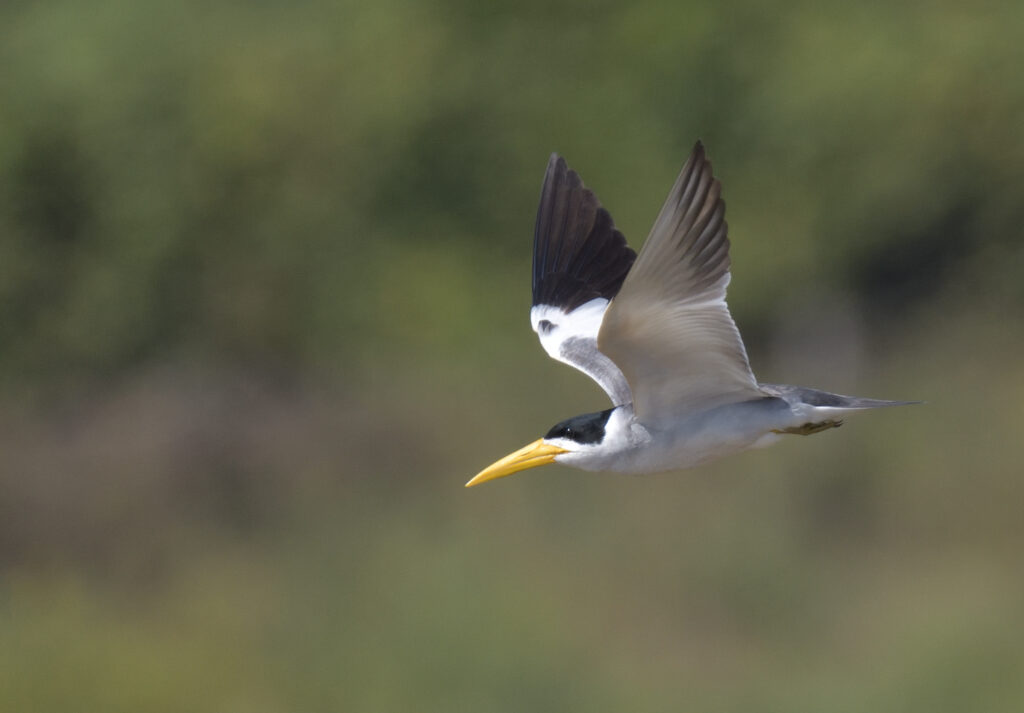
At the next stop, we find a couple of massive Jabiru Storks, the world’s largest stork, as well as Rufescent Tiger Heron, Lesser Yellow-headed Vulture, Smooth-billed Ani, White-winged Swallow, a Giant Cowbird on the back of a Capybara and hundreds of Nacunda Nighthawks flying in broad daylight! Further on, more new sightings include Limpkin, Savanna Hawk, Monk Parakeet and a female Vermillion Flycatcher.
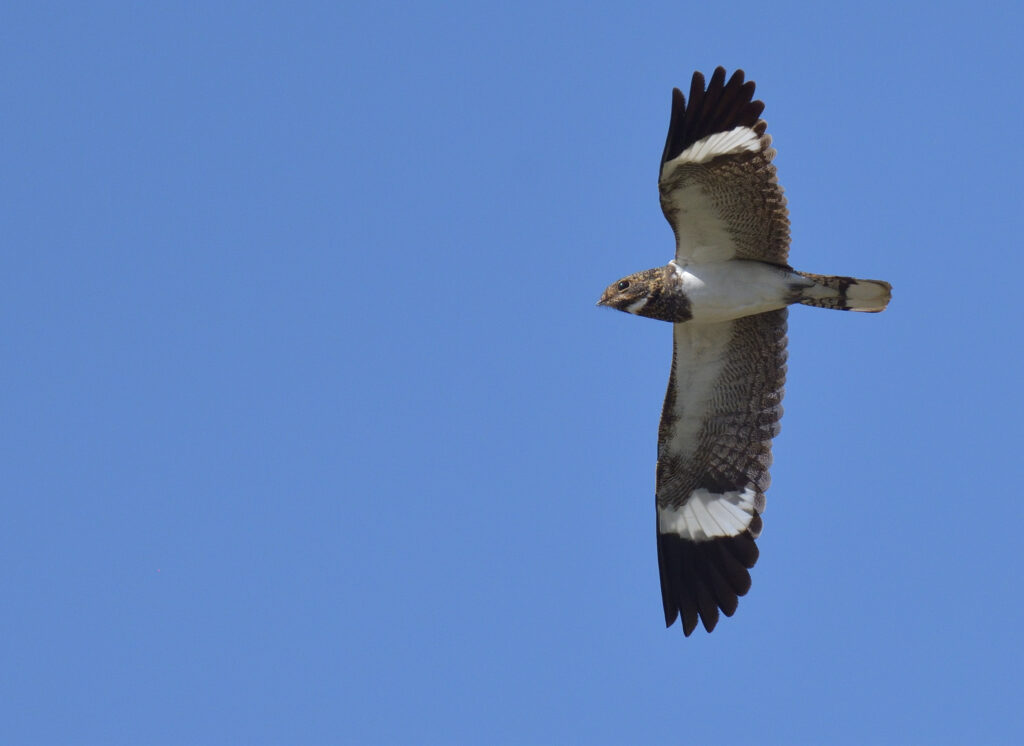
By mid-afternoon, 33km along the dirt road, we turn off at a sign for Pousada Pouso Alegre, onto a narrower dirt track where we get close views of Chaco Chachalaca, Chestnut-bellied Guan and Bare-faced Currasow on the way to our first lodge. At 4.10pm, we set off ‘safari-style’ in an open-sided jeep, but within 100 yards of the lodge we have to stop for a pair of Toco Toucans, delicately tossing back small, grounded fruits with their impressive long yellow bills, as well as a Thrush-like Wren. Two minutes later at a small pool, we find another Jabiru as well as a couple of gaping Yacare Caiman, a Sunbittern and two Plumbeous Ibises, making four different ibises today! Other birds along the drive include Green Kingfisher, a couple of Great Black Hawks and plenty of Ruddy Ground Doves.
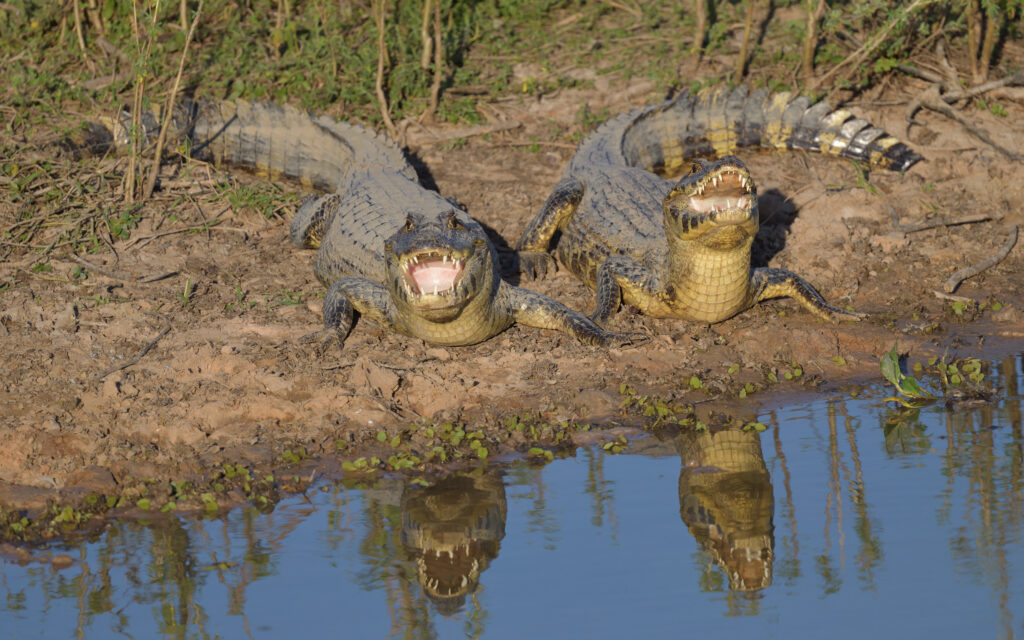
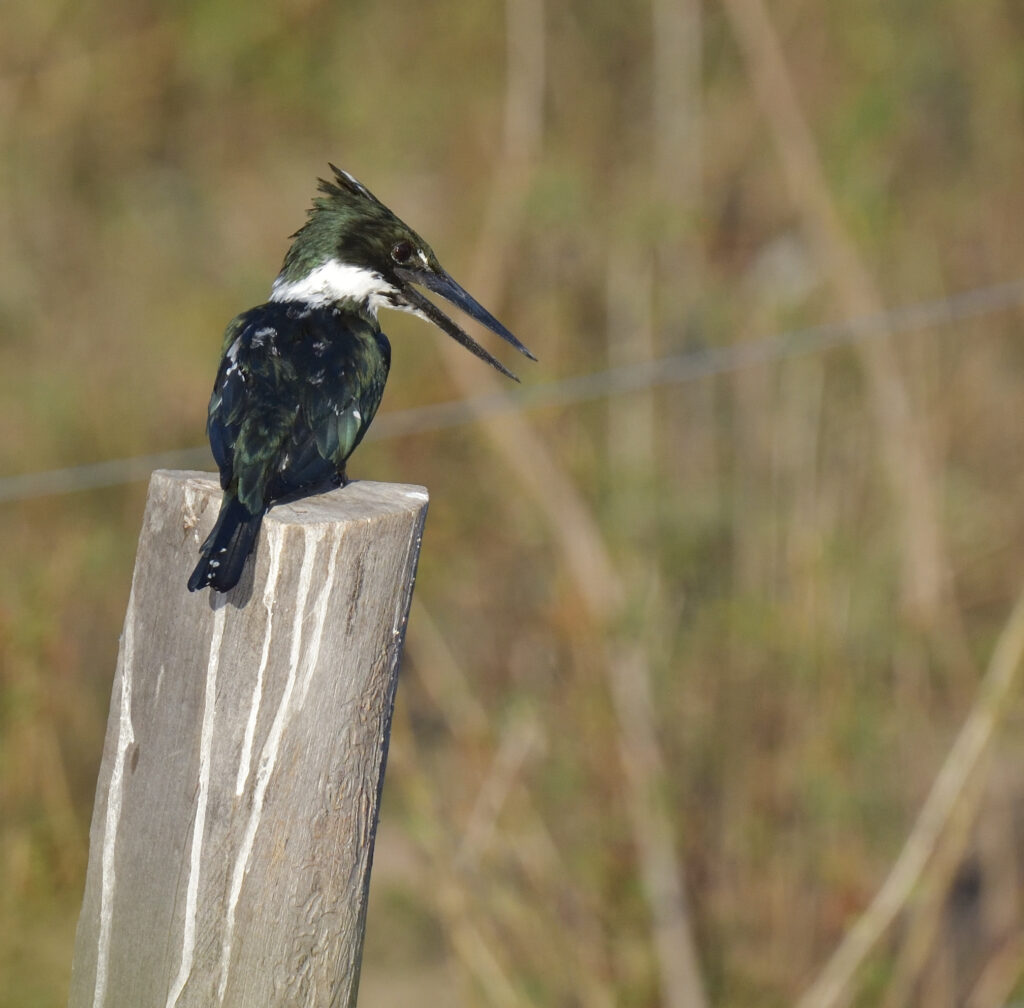
At 4.50pm, we reach a small waterhole attracting a steady stream of visitors beginning with a couple of normally elusive Undulated Tinamous and a Tayra, a large but lithe member of the weasel family. Further impressive sightings quickly follow including Sunbittern, White-throated Piping Guan, a pair of Bare-faced Currasows, Yellow-collared Macaw, White-tipped Dove, Purplish Jay and Silver-beaked Tanager, as well as an Azara’s Agouti and a couple of Crab-eating Foxes which saunter past us at less than ten yards! On the drive back to the lodge, after dark, hundreds of caiman eyes in the adjacent pools shine pink in the headlights and so we must have seen thousands of these crocodilians by the end of the day, as well as 67 different birds! Not a bad start for a traveling day.

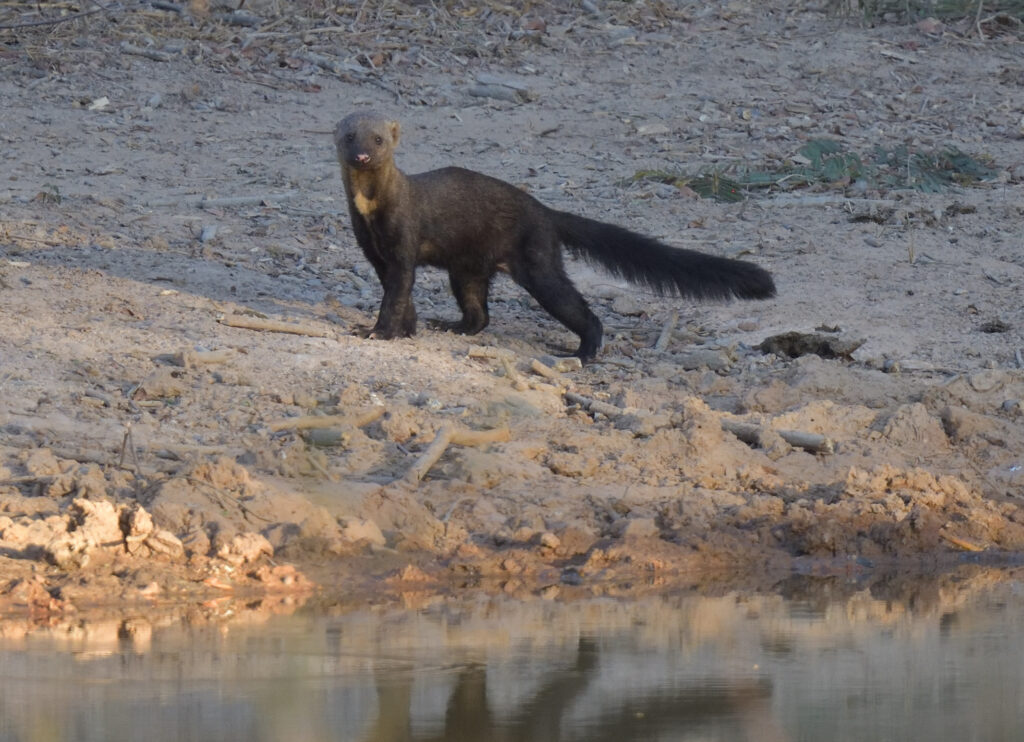
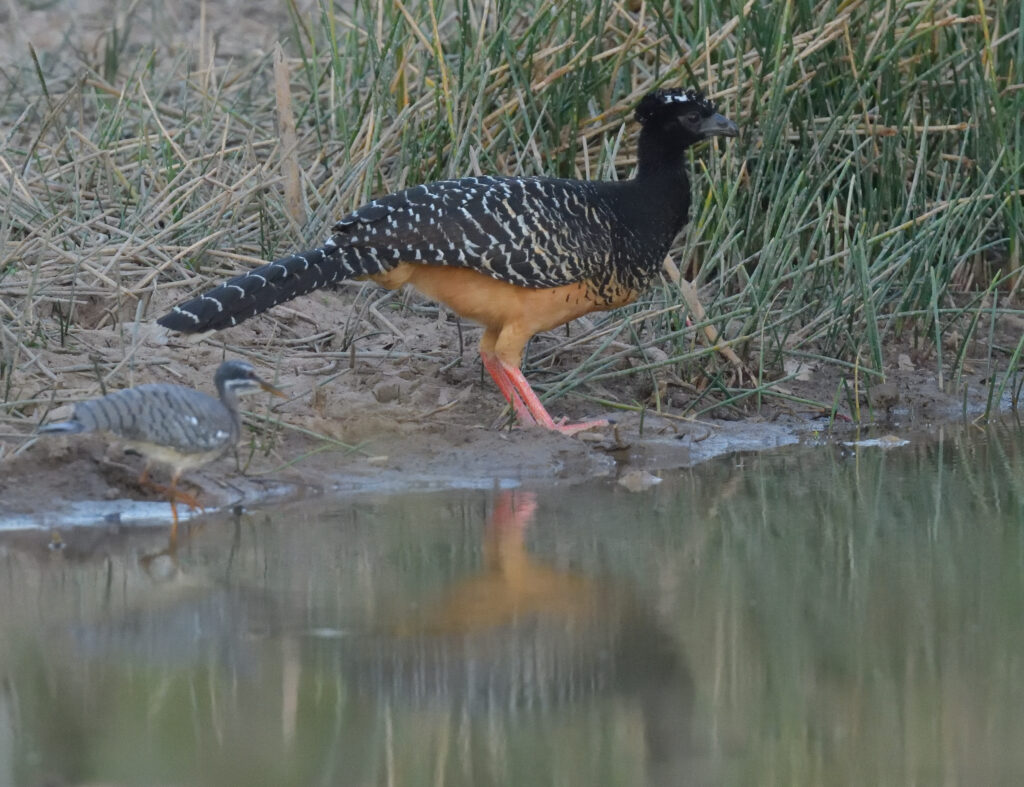
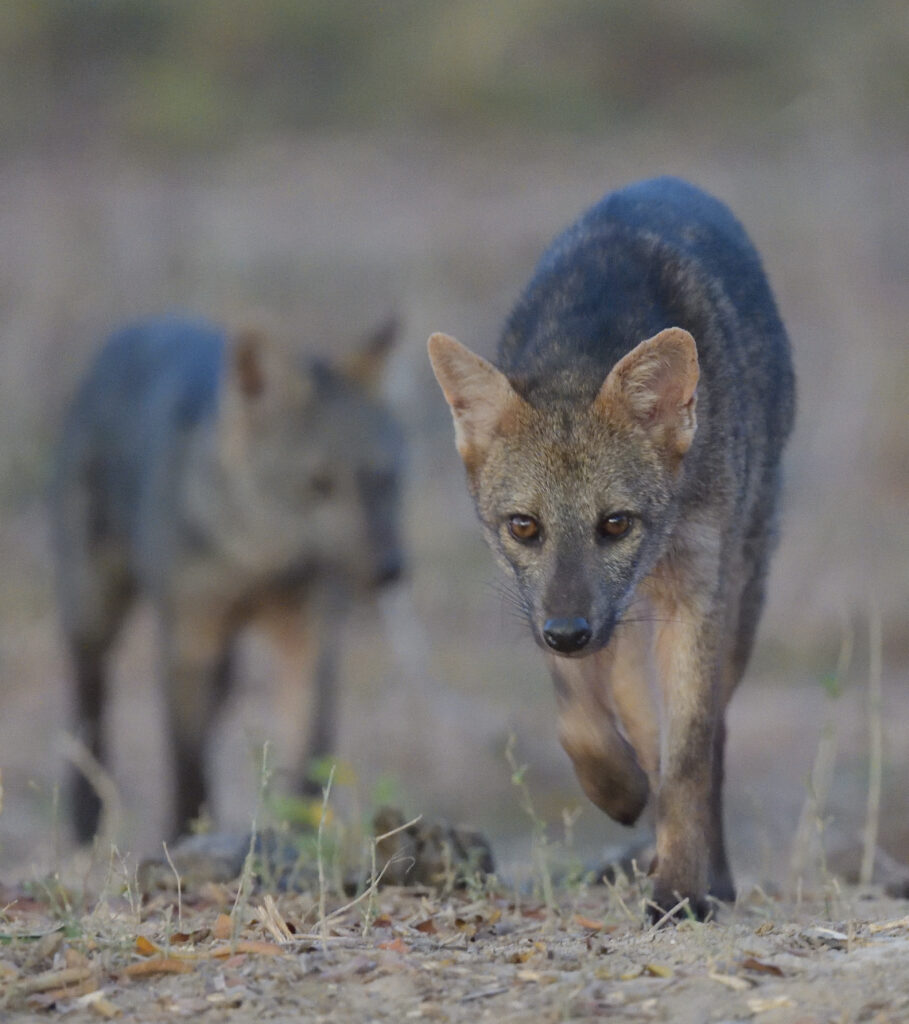
It’s cool at first light this morning, ideal for a pre-breakfast stroll from the lodge at 6am, with plenty of life right on the ‘doorstep’, such as Bare-faced Currasows, Rufous Horneros, Narrow-billed and Great Rufous Woodcreepers, Cattle Tyrant and Rufous-bellied Thrush, which is the national bird of Brazil. By 6.15am, we have barely gone 200 yards as there is so much to see! A large tree near the lodge, covered in red blooms is a hive of activity, with numerous feeding birds including Glittering-throated Emerald, Black-fronted Nunbird, Rusty-margined Flycatcher, Orange-backed Troupial and Variable Oriole, as well as a troop of Hooded Capuchin Monkeys.
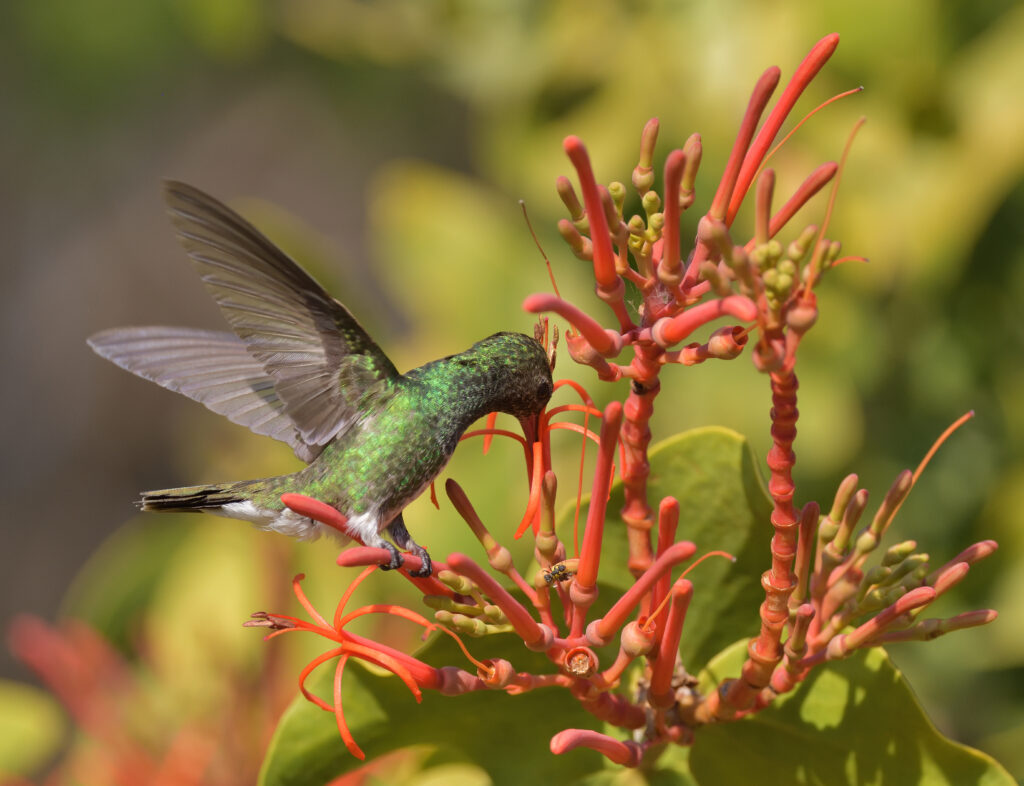
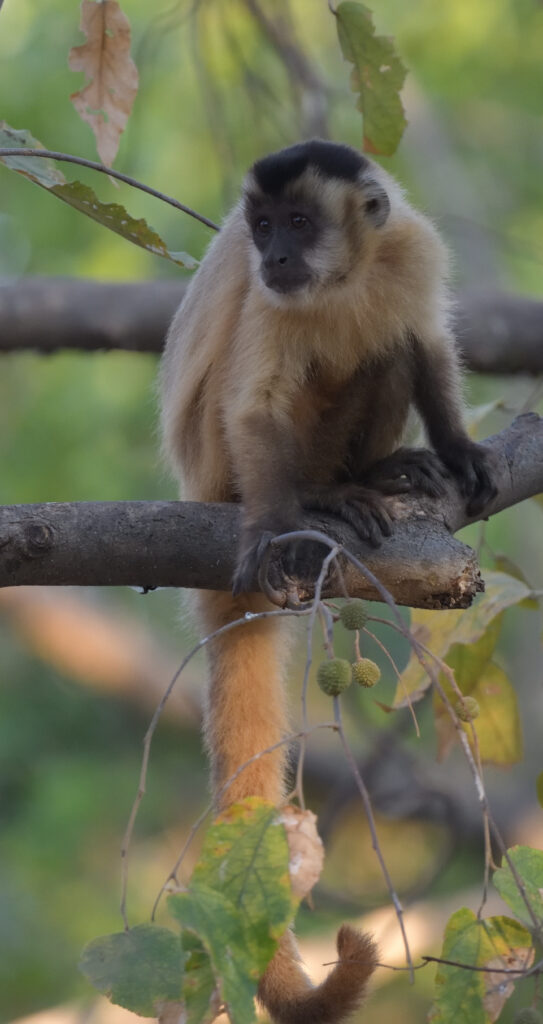
At 6.30am, the trees behind the lodge suddenly fill with birds as it’s feeding time, courtesy of the kitchen. The chaotic feeding frenzy involves hundreds of birds and in the next mesmerising thirty minutes or so we record an astonishing 22 species including Bare-faced Currasow, Chestnut-bellied Guan, Chaco Chachalaca, White-tipped and Scaled Doves, Ruddy Ground Dove, Picazuro Pigeon, Chestnut-eared Araçari, Toco Toucan, Great Kiskadee, Purplish Jay, Red-crested and Yellow-billed Cardinals, Greyish Saltator, Saffron Finch, Crested Oropendola, Shiny, Bay-winged and Giant Cowbirds, Chopi Blackbird, Chalk-browed Mockingbird and even a pair of Hyacinth Macaws, all competing with each other, and with Azara’s Agoutis, South American Coatis and Hooded Capuchins! What a remarkable spectacle, before we break away for our own breakfast inside the lodge at 7.30am.
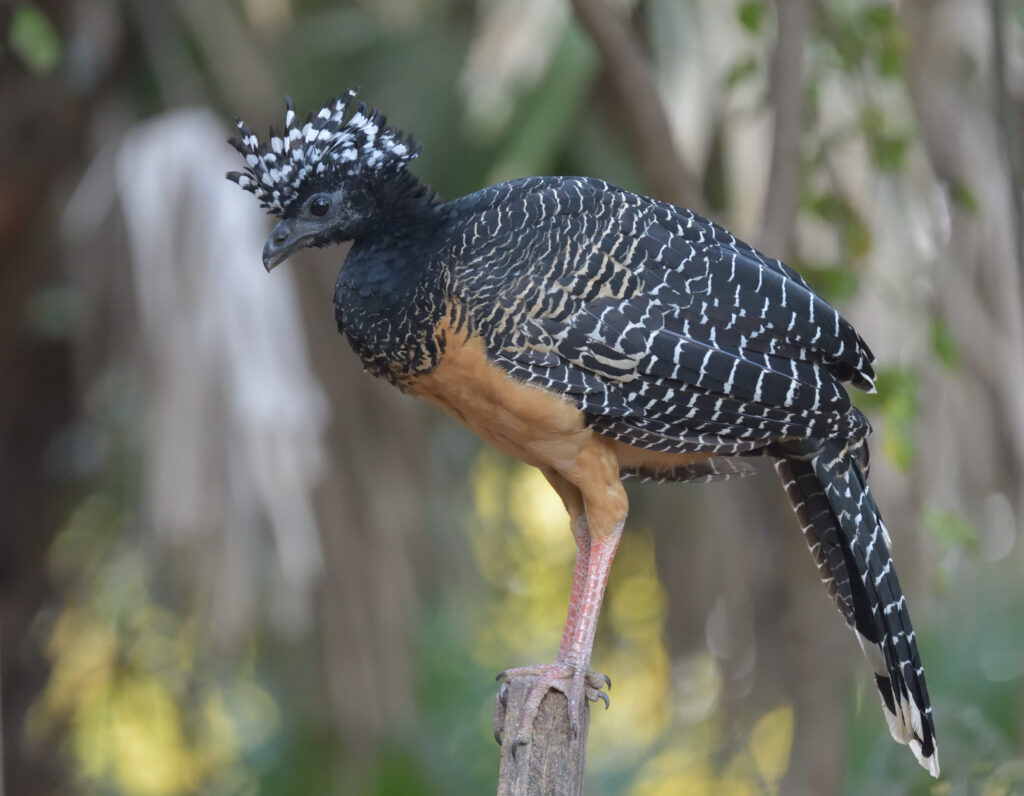
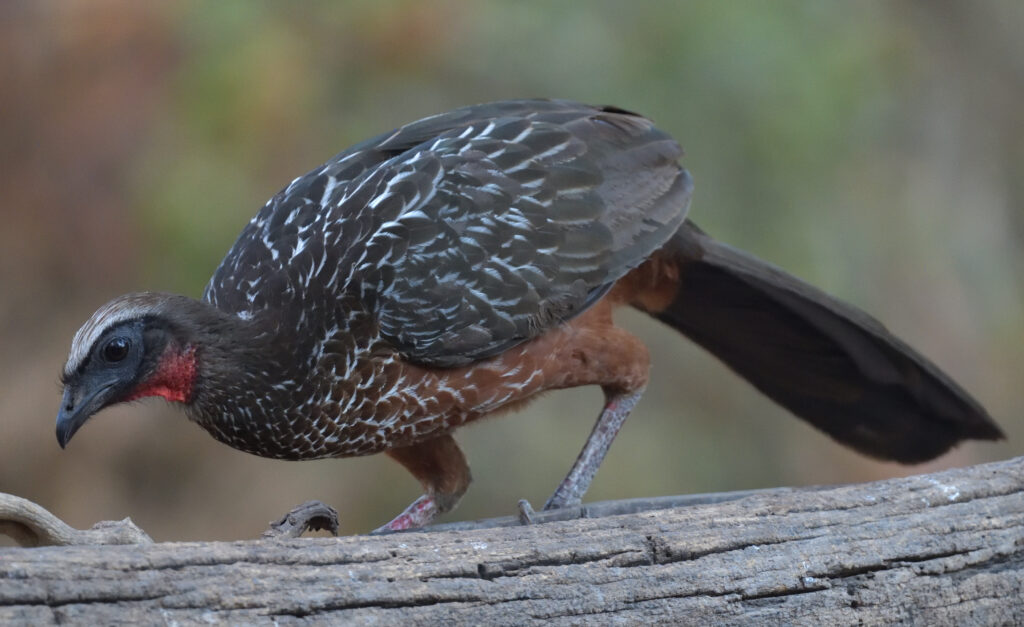
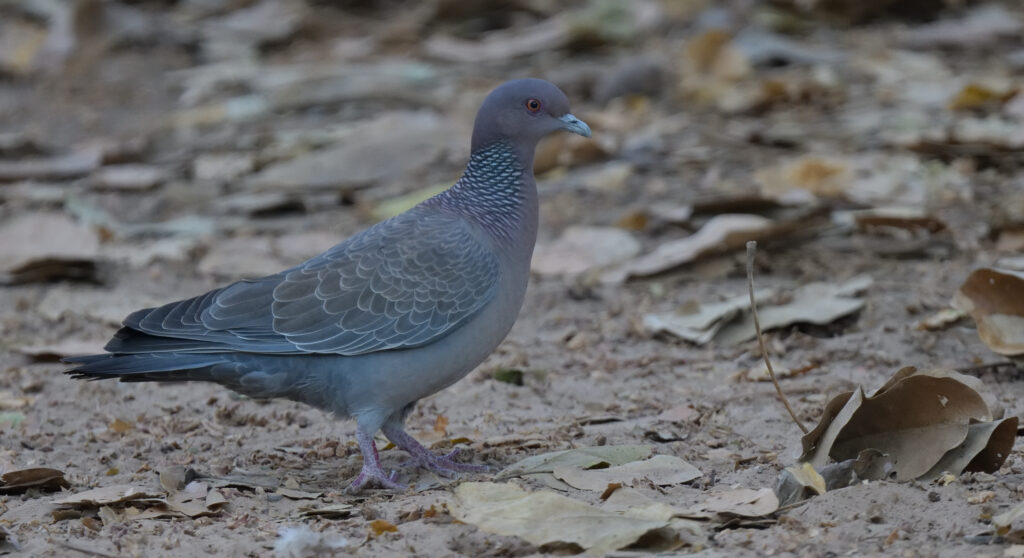
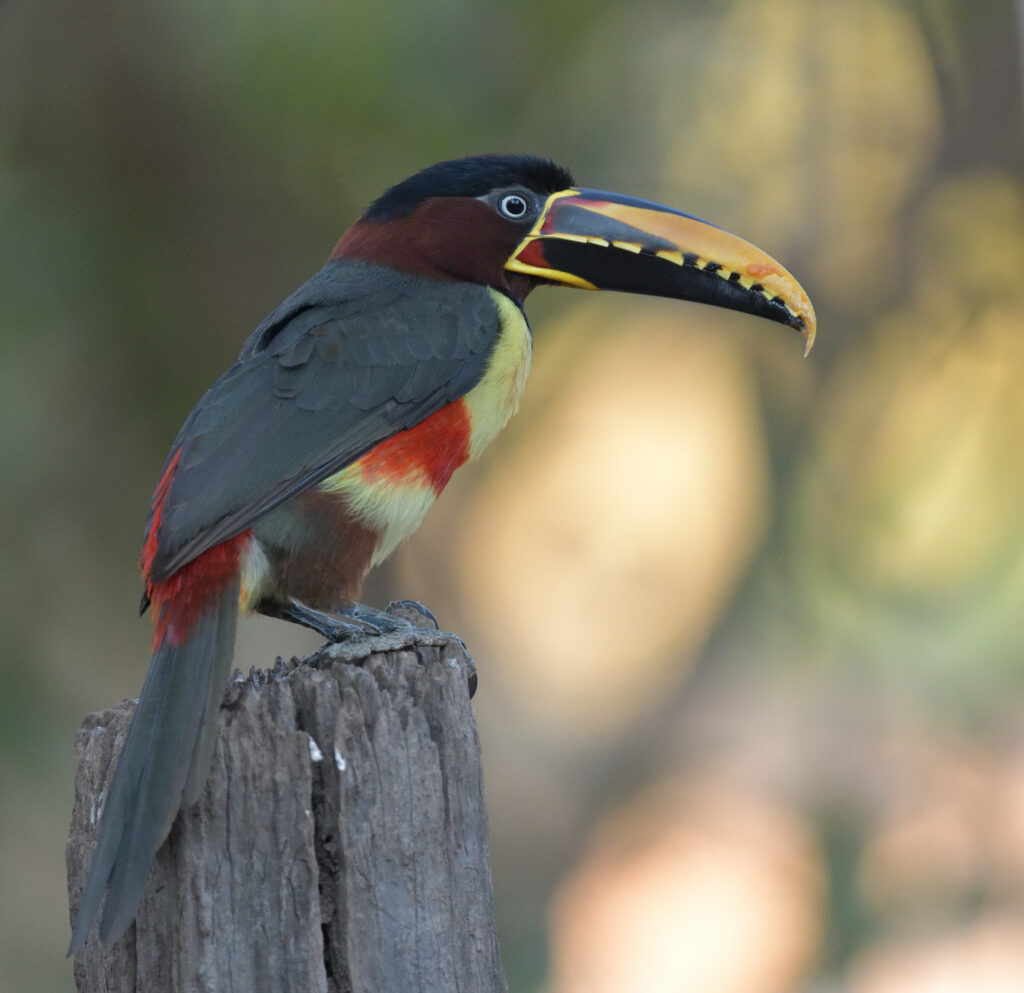
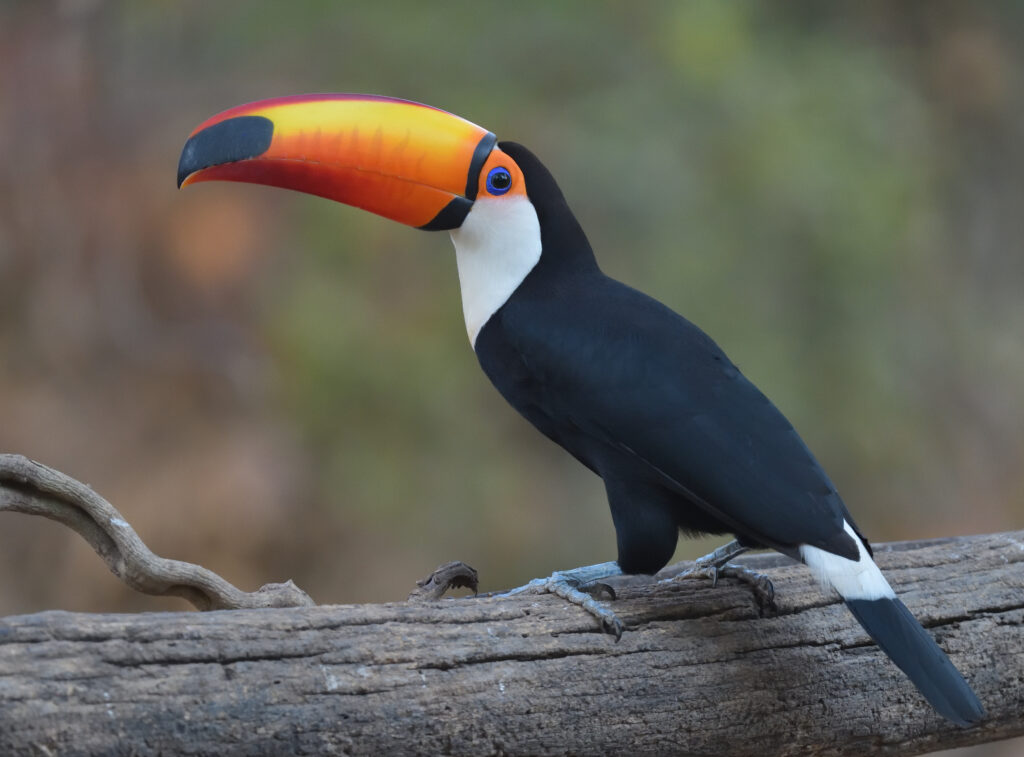
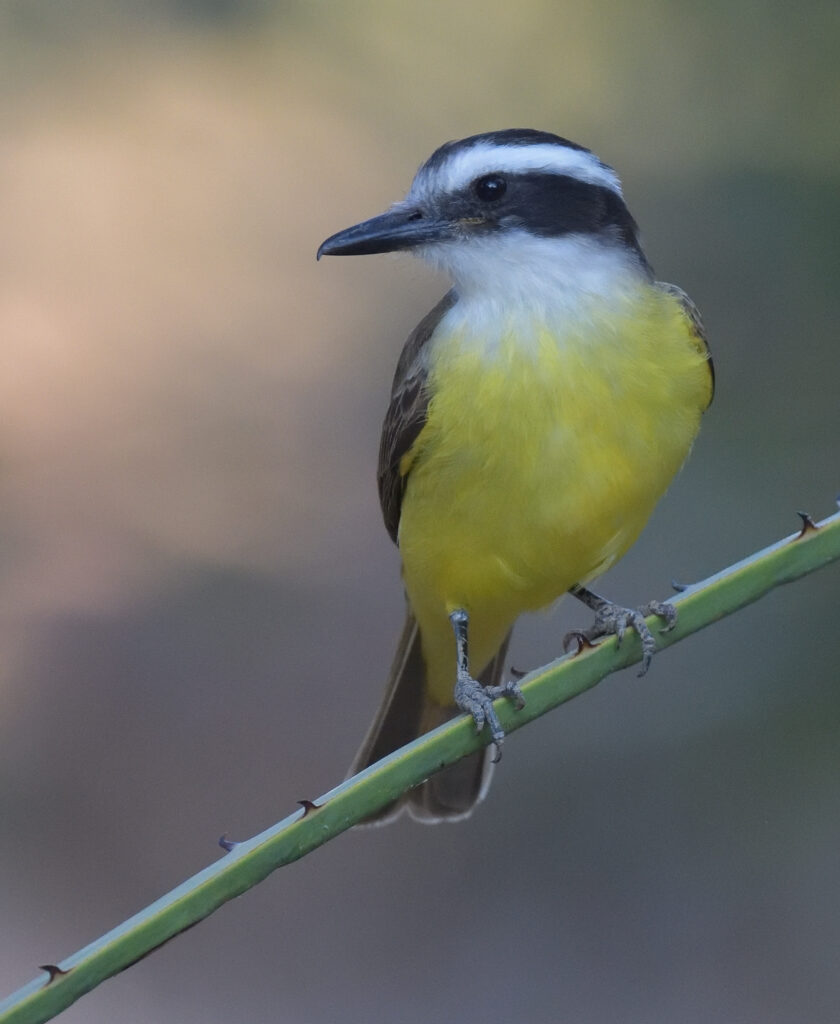
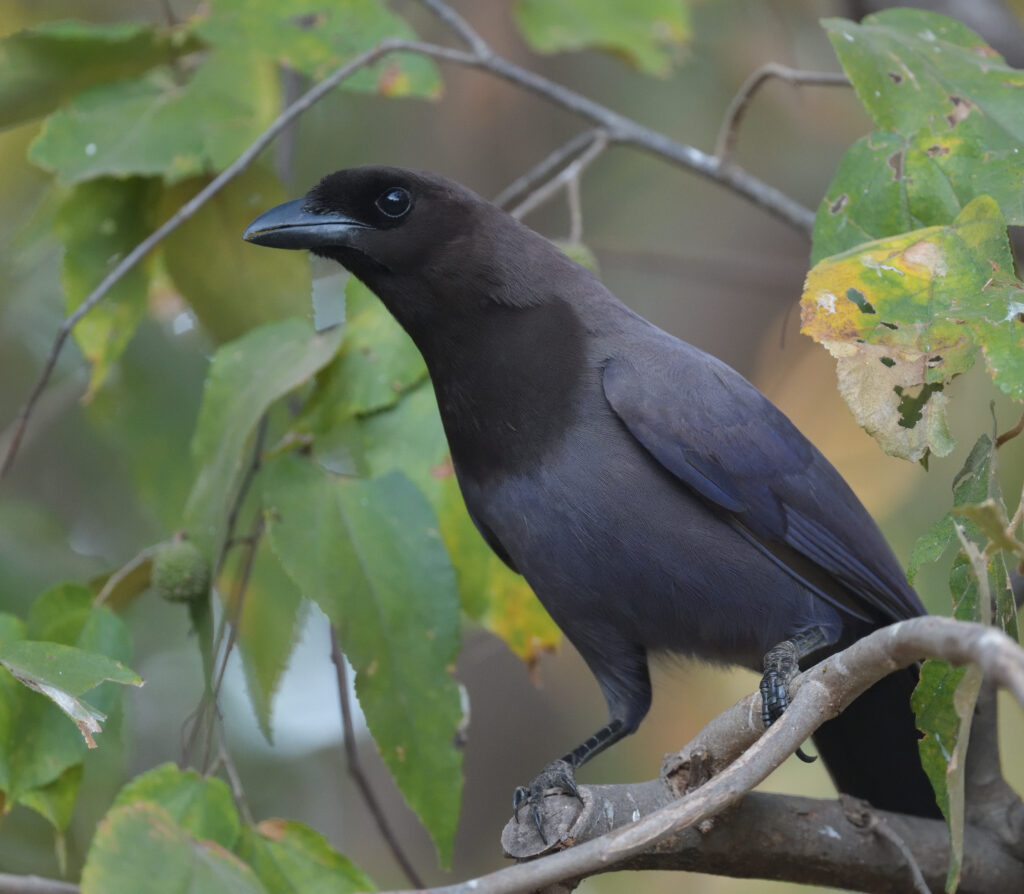
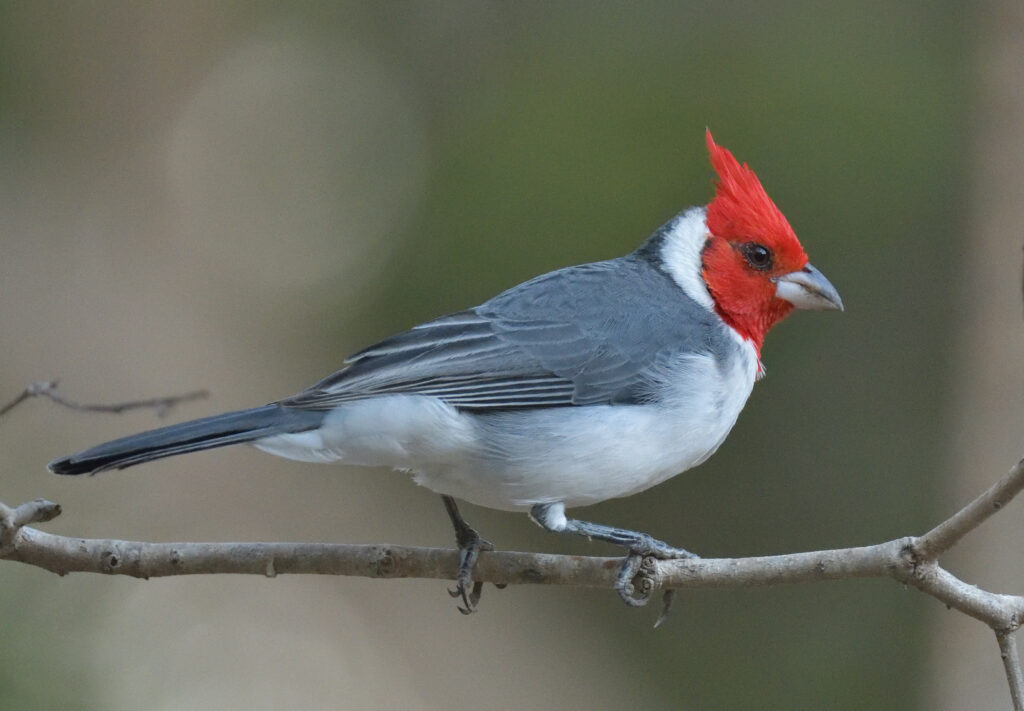
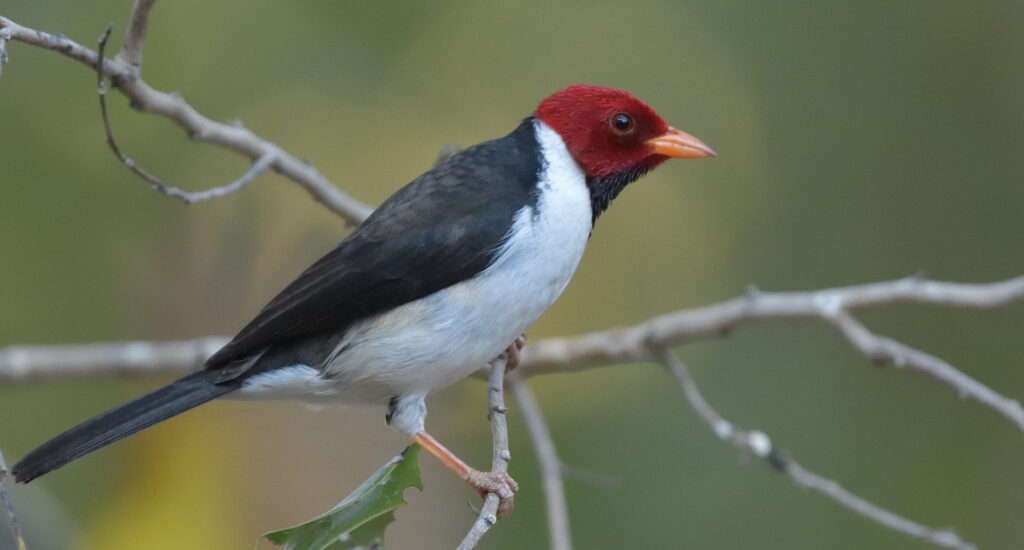
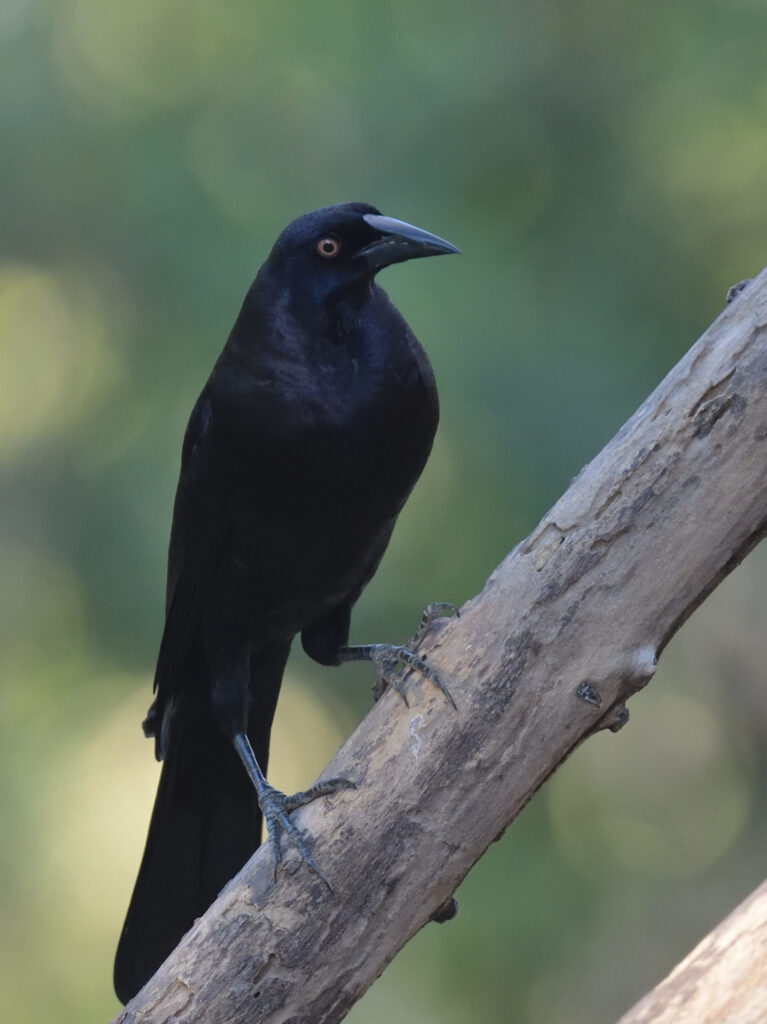
At 8am we resume the stroll, this time delayed by more sightings outside the rooms, such as a family of six Greater Rheas, a couple of handsome Whistling Herons, a male Pale-crested Woodpecker and a male Great Antshrike, plus Scaled Pigeon and Chopi Blackbird. Walking on, determined to cover some ground, we find more of the ‘usual suspects’ like Jabiru, Great and Snowy Egrets, Sunbittern, Plumbeous and Green Ibises, plus new birds like Turquoise-fronted Parrot, White-lored Spinetail, Tropical Parula, Short-crested Flycatcher and a male Crimson-crested Woodpecker.
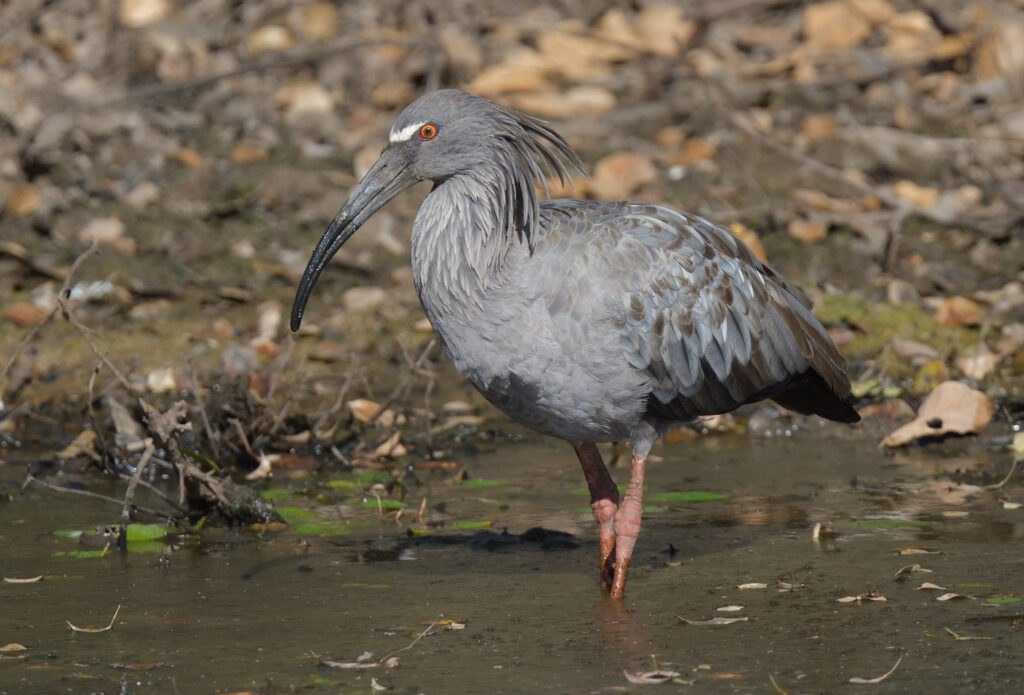
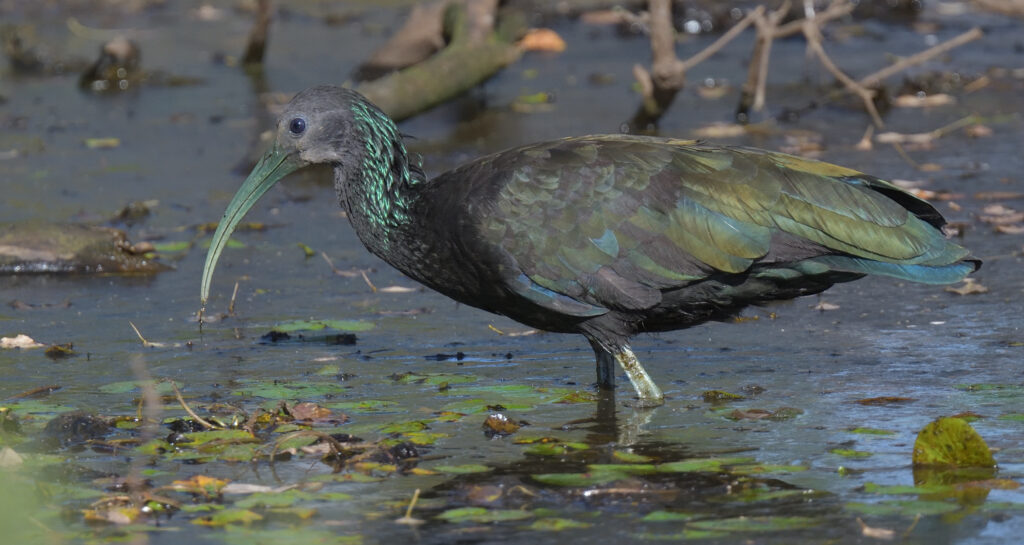
Back at the lodge, we set off in the jeep at 10.05am on a ‘safari’, spotting birds like Savanna and Roadside Hawks, Lesser Yellow-headed Vulture, Jabirus, Wood Storks, Roseate Spoonbills, Southern Lapwings, Buff-necked Ibises and dozens more Nacunda Nighthawks, on the ground and in flight. On the drive back to the lodge, we spot two Red Brocket Deer and a group of ten Capybara, including a tiny one, as well as Tapir and Jaguar prints in the sandy track, both fresh from the night before and barely a mile from the lodge!
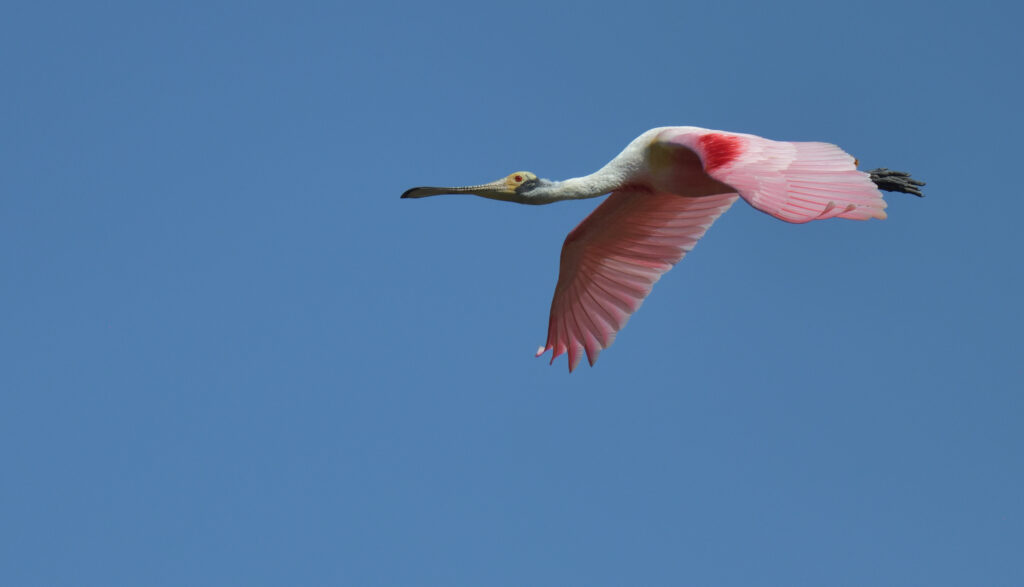
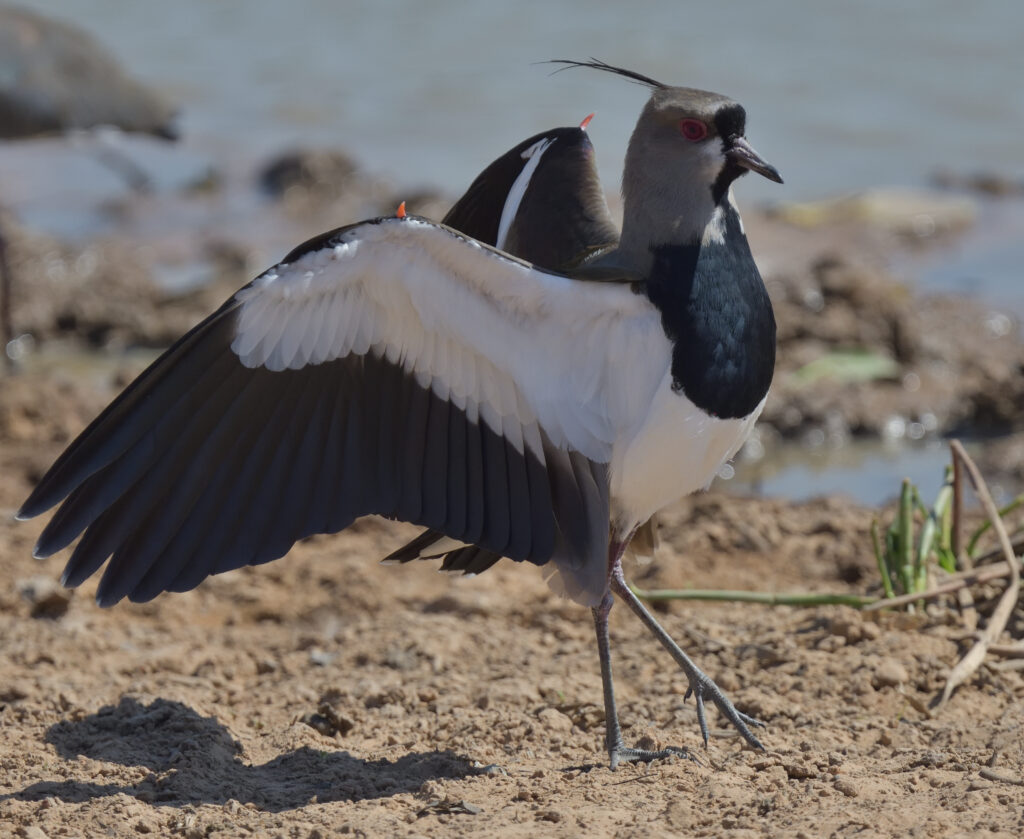
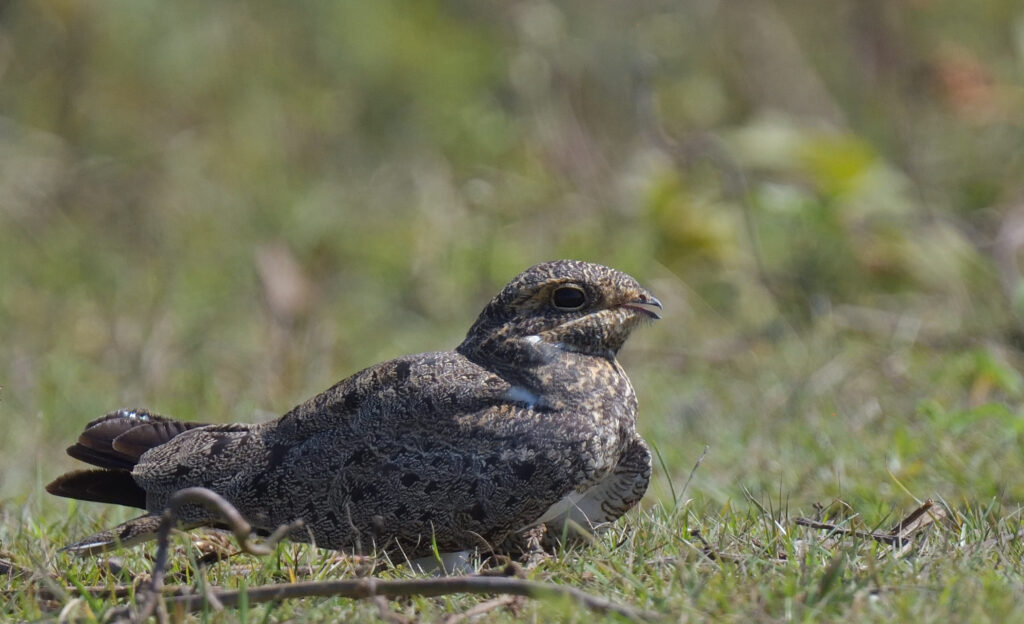
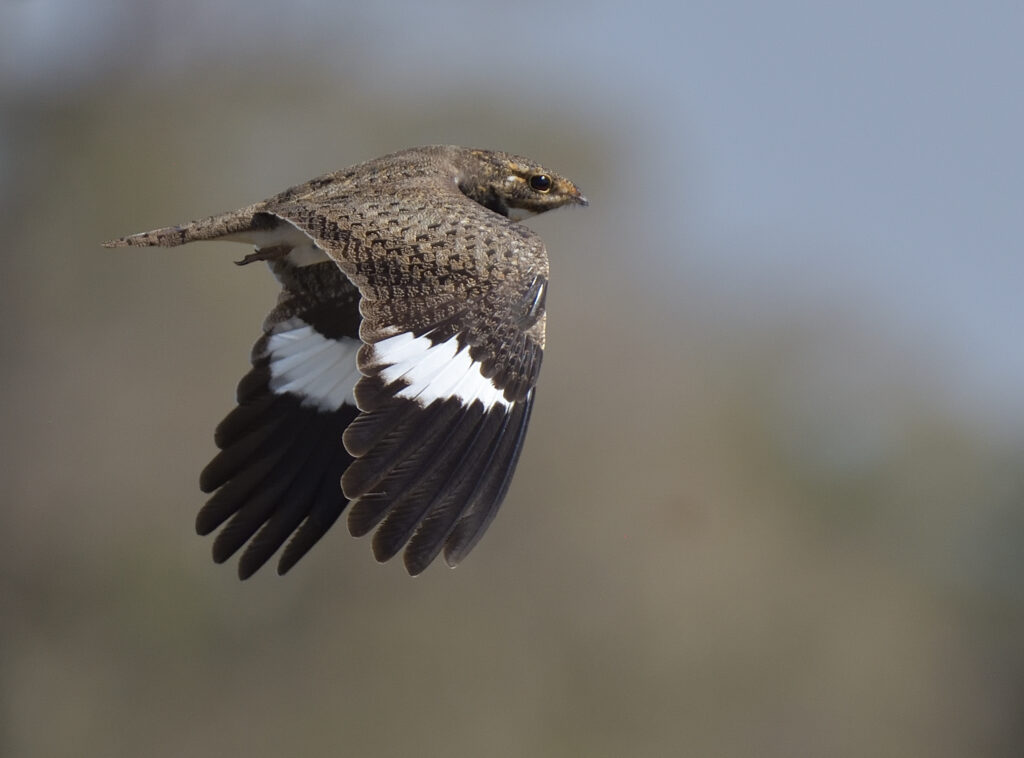
During a break from the afternoon heat, a sizeable Black-and-white Tegu Lizard crawls past our rooms, and at 4pm we set off in the jeep for another safari, where, not far from the lodge, American Pygmy Kingfisher, Sayaca Tanager and Solitary Cacique are new for the list. At the first waterhole, Red-throated Piping Guan is also new, and at a second waterhole, visitors include Undulated Tinamou, Grey-cowled Wood Rail, Chaco Chachalaca, Picazuro Pigeon, White-tipped Dove, Toco Toucan, Purplish Jay, Lesser and Great Kiskadees, Creamy-bellied Thrush, several Azara’s Agoutis and a couple of Red Brocket Deer, as well as Brown-crested Flycatcher, Rufous-tailed Jacamar and White-wedged Piculet, a tiny member of the woodpecker family, in the adjacent shrubs.

Once the red glow of the sunset drains away, we spot Common Pauraque and the eyeshine of a Common Potoo, which even perches long enough for a quick view in the scope! On the drive back to the lodge, we also spot three Crab-eating Foxes and then a Brazilian Tapir appears on the track ahead, with a youngster in tow! Having crossed the track, mother and baby then proceed to drink from a roadside pool, completely unperturbed by their audience! Further on, we even spot a third Tapir at the side of the track! Feeling very pleased with ourselves, a little further on, Marco shouts “Ocelot”, and incredibly, this beautifully marked cat is sitting at the side of the track munching on a freshly caught frog, although it is less confiding than the Tapirs and quickly slinks away into the darkness. Wow, what a day that was.
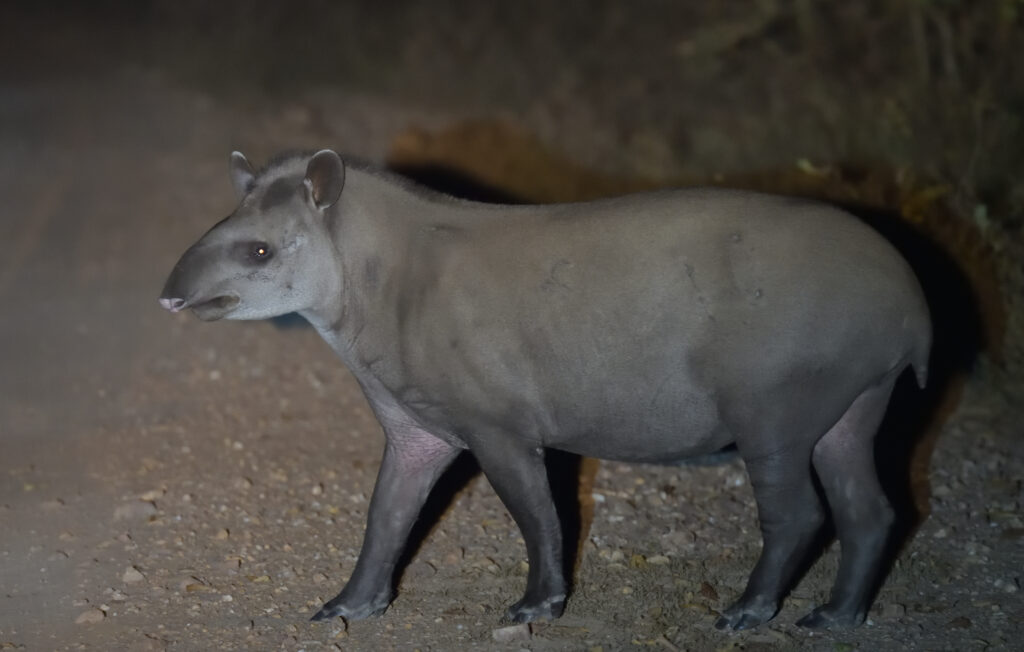
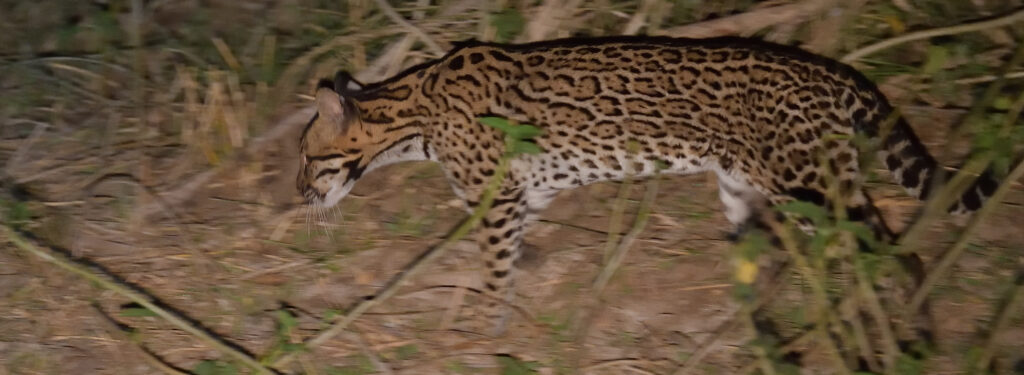
We get a wakeup call at 5am this morning from the ‘noisy neighbour’ chachalacas! Stepping out at 6am, the Great Rufous Woodcreepers are right outside the rooms again, along with Bare-faced Currasows, no more than three yards away! In the next half an hour, we find birds like Red-throated Piping Guan, Thrush-like Wren, Cattle Tyrant, Vermillion Flycatcher and both Little and Green-barred Woodpeckers, plus Savanna Hawk and the resident pair of Whistling Herons.
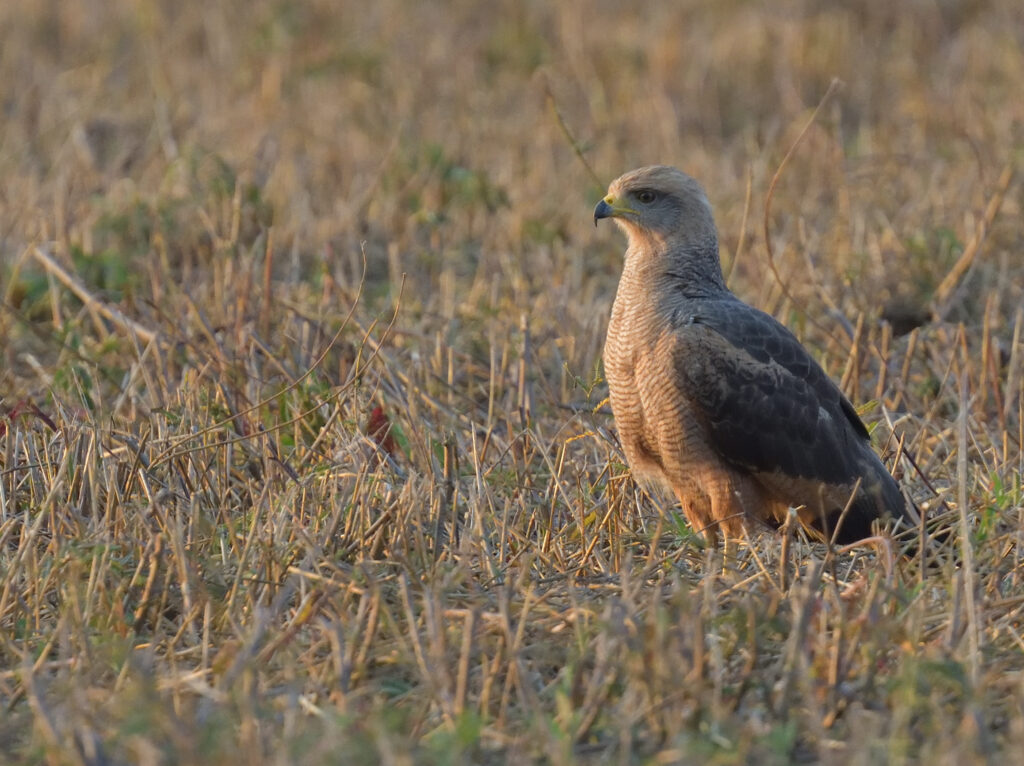
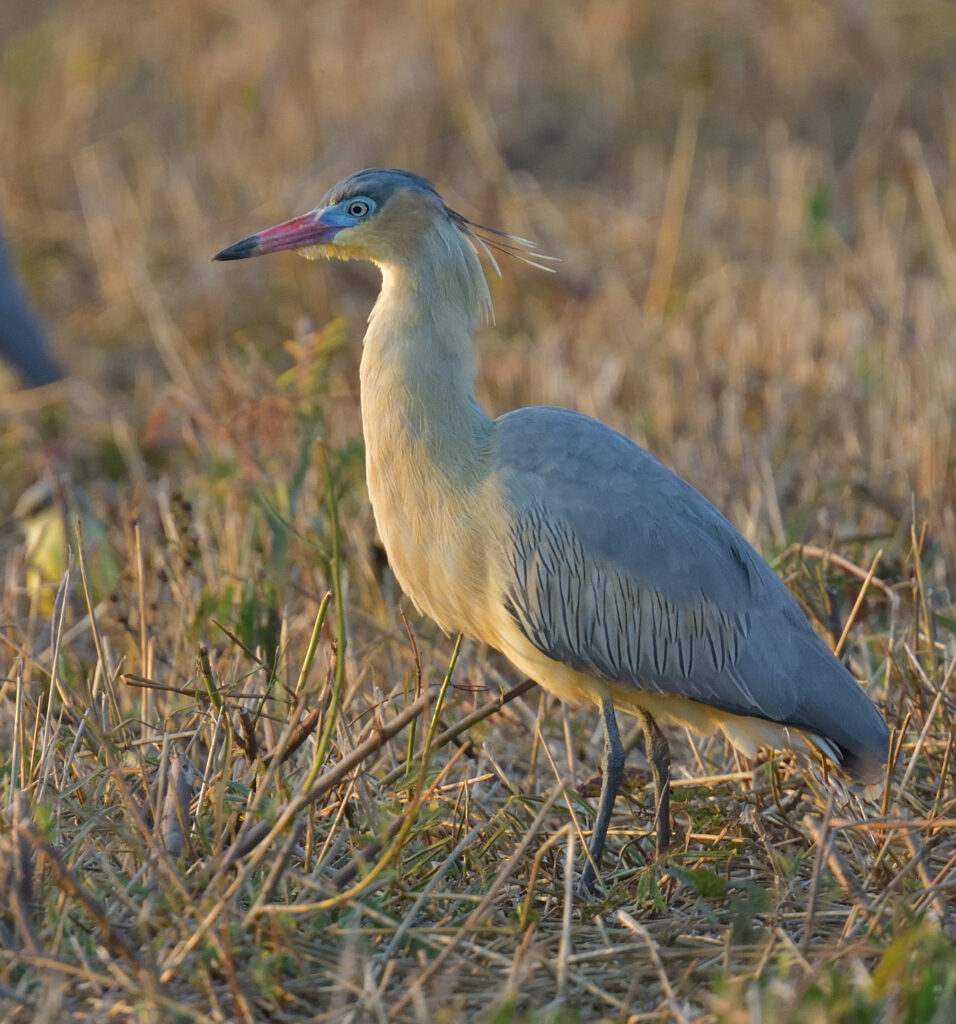
Next, we revisit the daily feeding frenzy behind the kitchen.
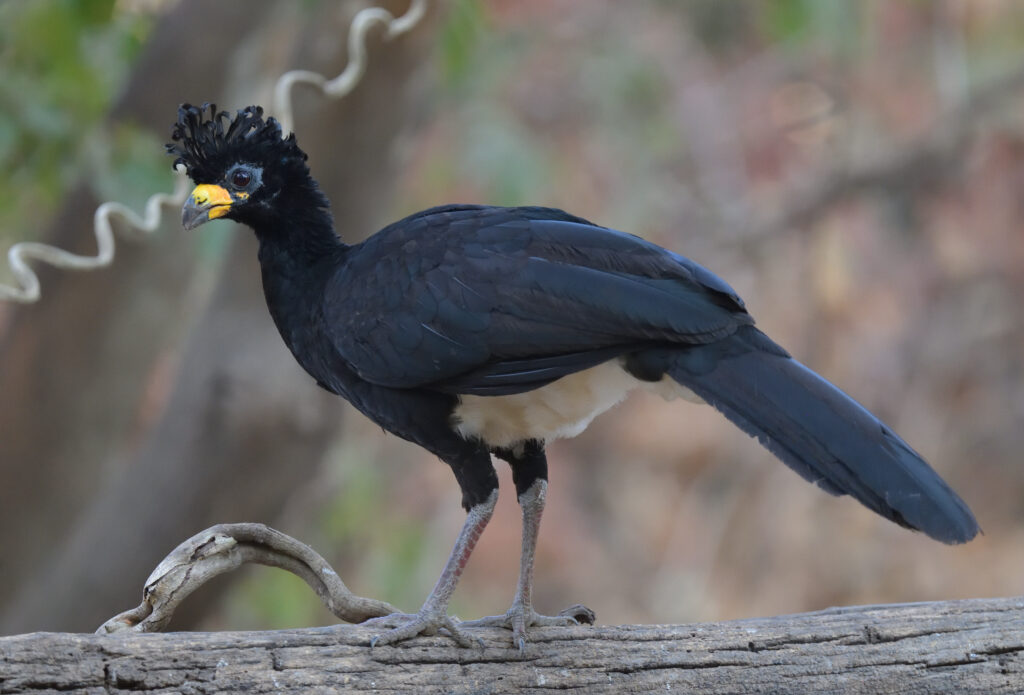
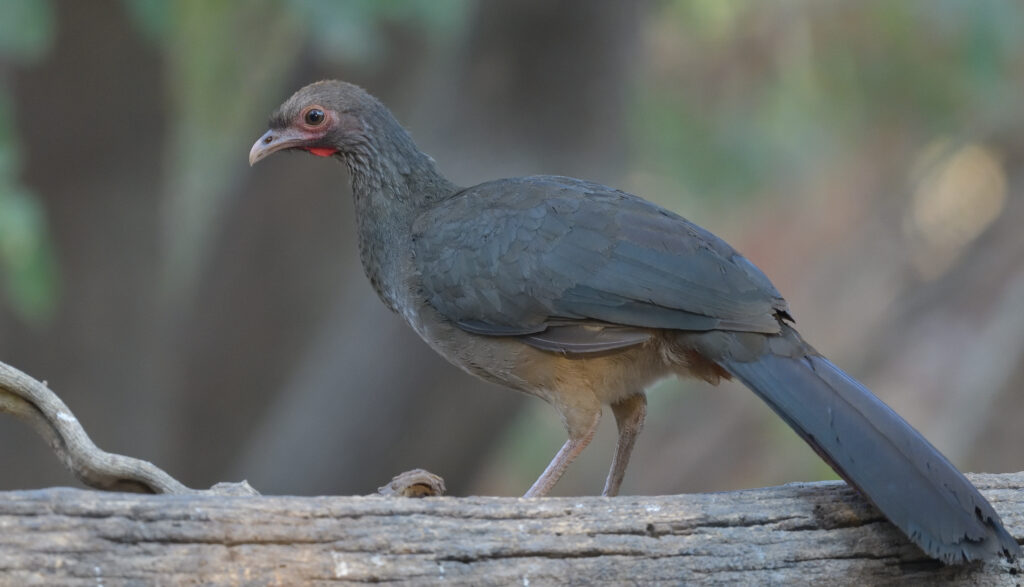
After breakfast, another stroll produces new birds like Rufous Casiornis, Greater Thornbird, Striped Cuckoo, White-bellied Seedeater and a very vocal Flavescent Warbler.

Sadly, it’s now time to leave this wonderful place and continue our journey south along the Transpantaneira. Along the way we get close views of a Marsh Deer stag by bridge 19 and then stop for a five foot long Green Iguana almost in the middle of the road! 48km along the Transpantaneira, we call in to the Pantanal Mato Grosso Hotel for lunch, where we also find new birds in the grounds like White Woodpecker, Unicoloured Blackbird, Yellow-chevroned, Blue-crowned and Black-hooded Parakeets, a tiny roosting Ferruginous Pygmy Owl and the scarce Cinnamon-throated Hermit.
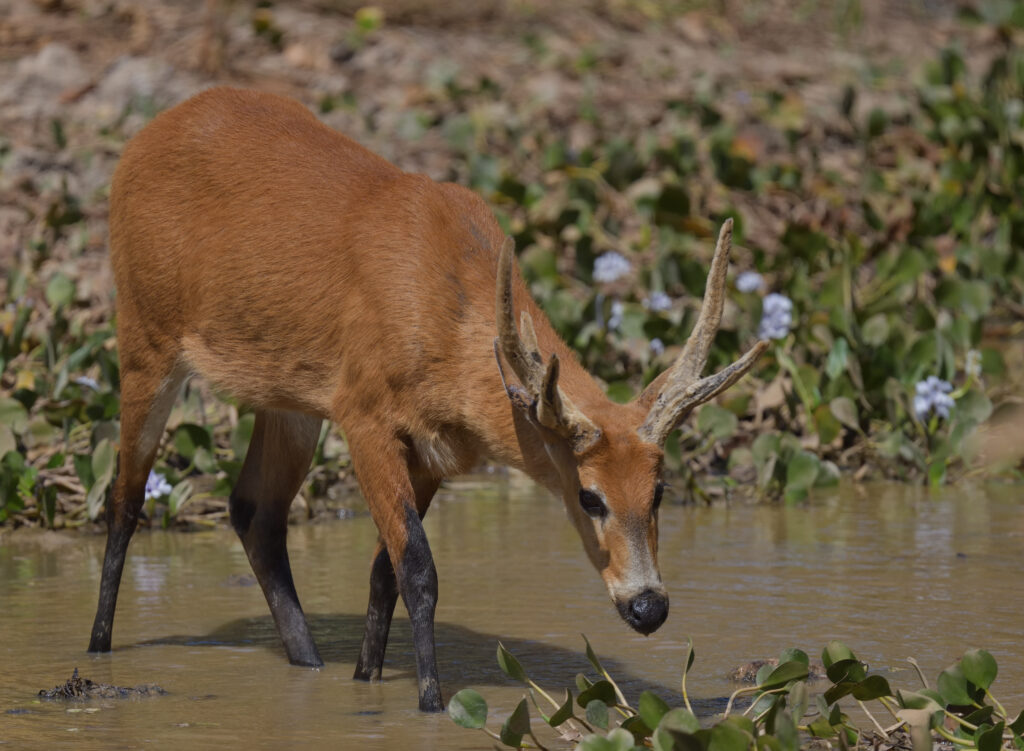
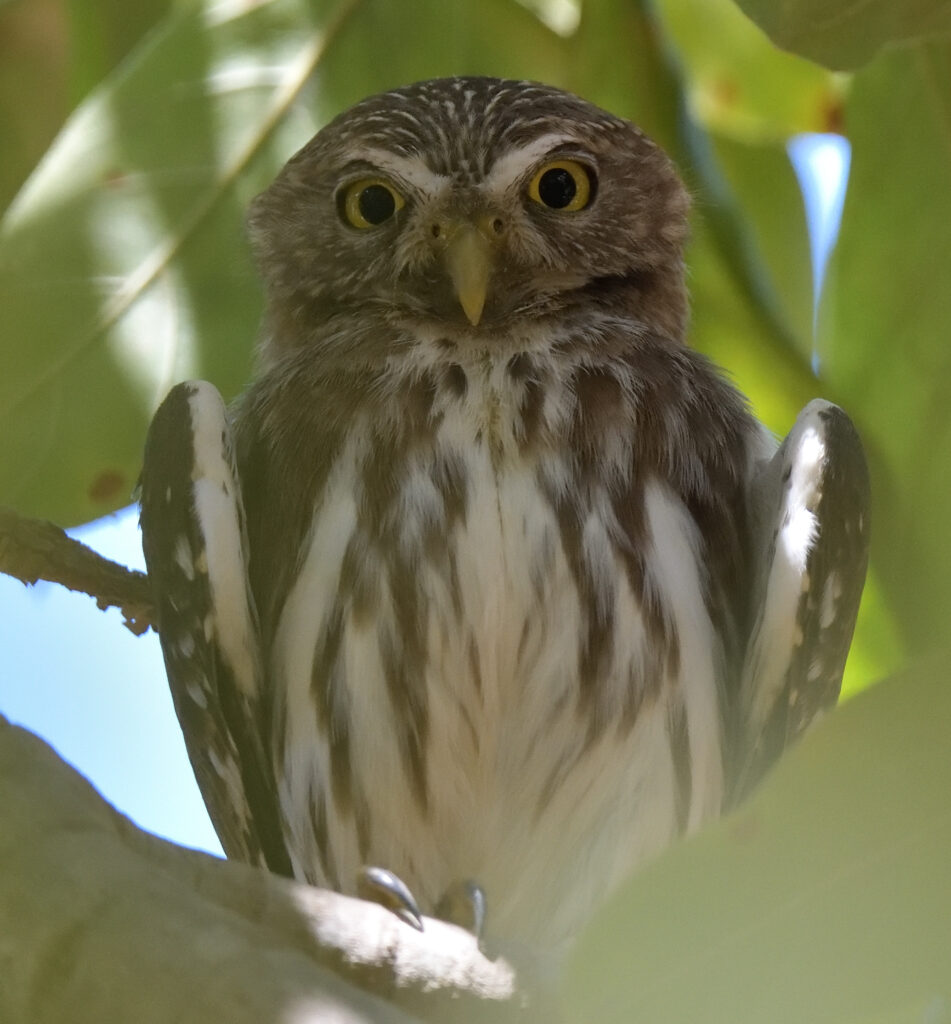

Moving on down the Transpantaneira to Porto Jofre, across 122 bridges, we spot new birds like Southern Screamer, Black-collared Hawk, Muscovy Duck and Brown-chested Martin. Journey’s end is the Santa Rosa Hotel on the bank of the Rio São Lourenço, where a short stroll before dinner produces Toco Toucan, Rufous-tailed Jacamar, Epaulet Oriole, a female Great Antshrike and a Black Skimmer low over the river, with a Capybara grazing on the hotel lawn!
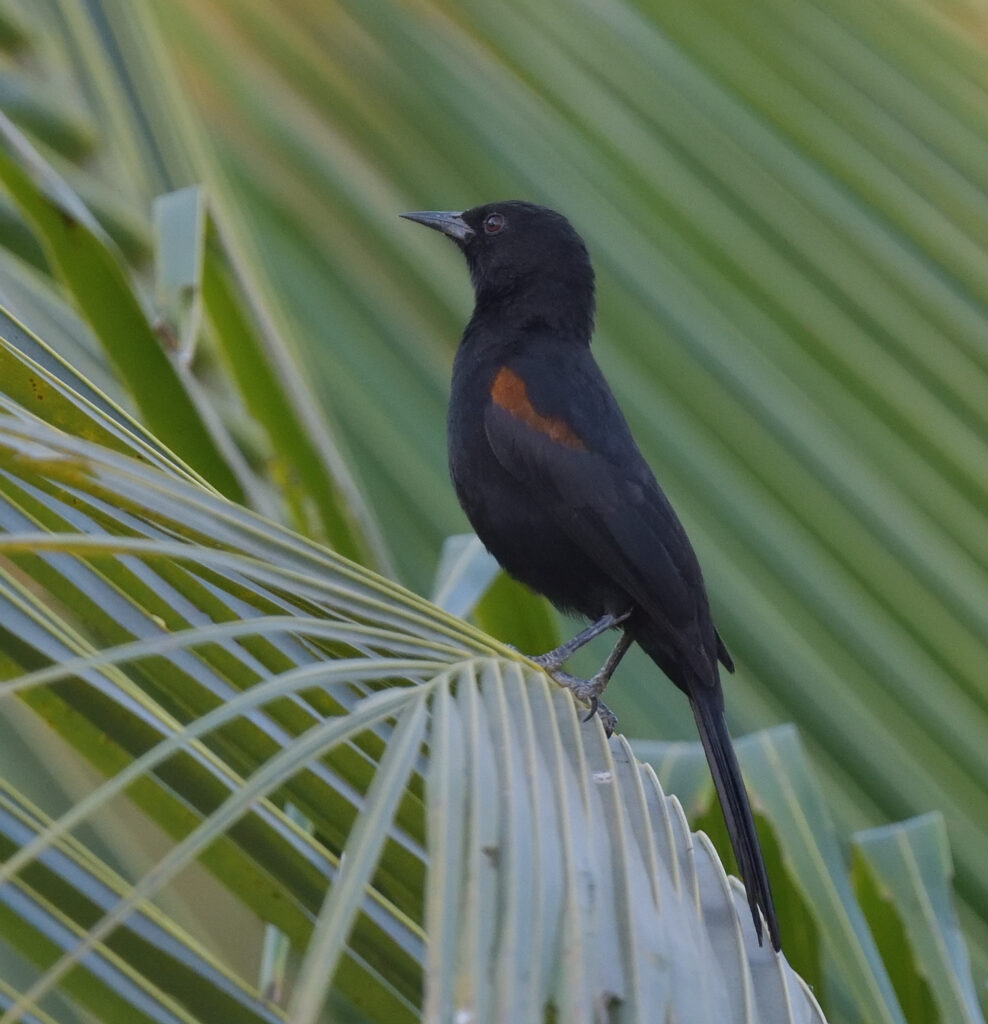

This morning marks the first day of ‘Operation Jaguar’ and so we set off upstream along the Rio São Lourenço at 6.20am with a Yellow-billed Cardinal on the edge of boat! Along the river, a stream of new birds for the list includes Anhinga, Peach-fronted Parakeet, Southern Rough-winged Swallow, Cinereous-breasted Spinetail, Yellow-browed Tyrant and a very obliging pair of Pied Lapwings, while the Roadside Hawk should be renamed Riverside Hawk as we see several perched along the riverbank.
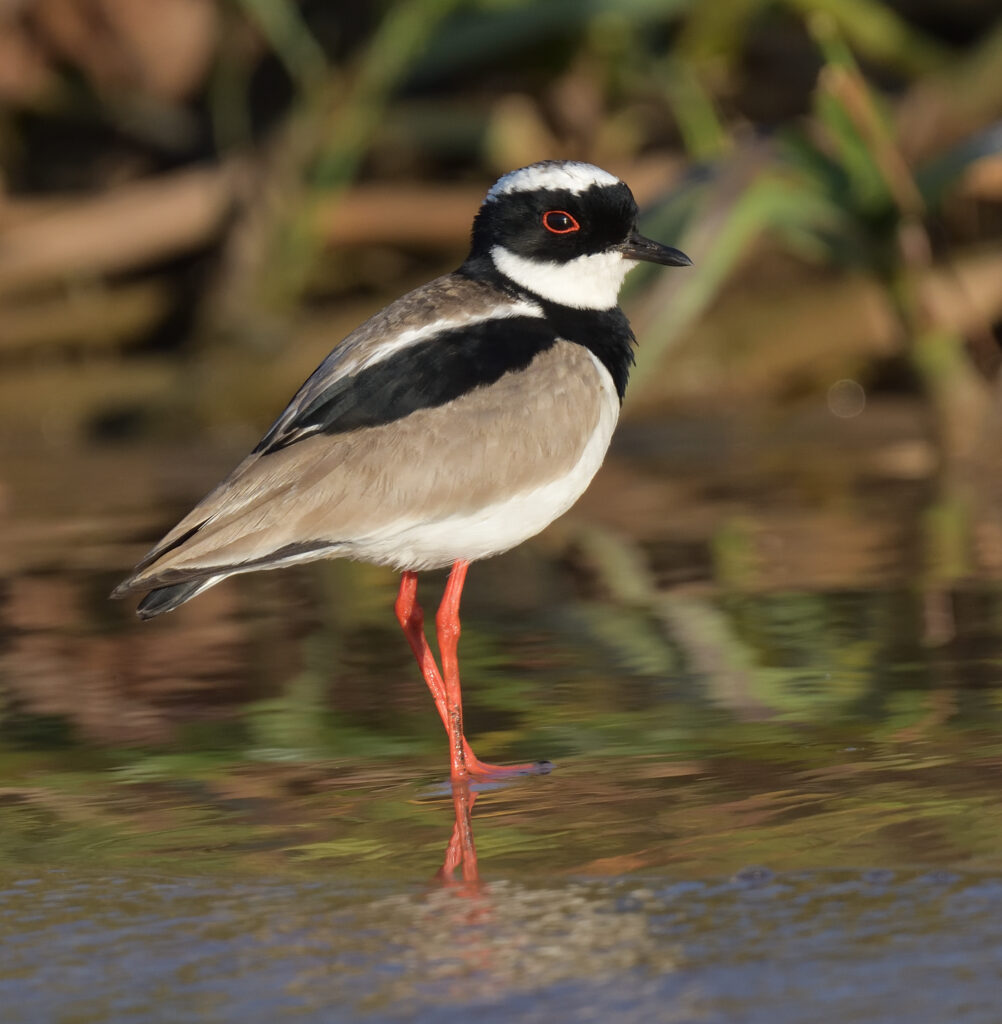
With so many miles of densely vegetated riverbanks to search for our elusive quarry, it seems an impossible task to find such a ‘needle in a haystack’, but at 7.48am there it is, a magnificent full grown female Jaguar sitting on a small sandy beach! Apparently, this is Marcela! Looking much bulkier than any Leopard, she slowly works her way along the riverbank as we shadow her for the next 25 minutes, while taking plenty of shots. She moves with such stealth, while totally focused, edging ever closer to something in the water without even giving us a second glance, before disappearing into the vegetation. Wow, what a memorable wildlife encounter with South America’s iconic apex predator.
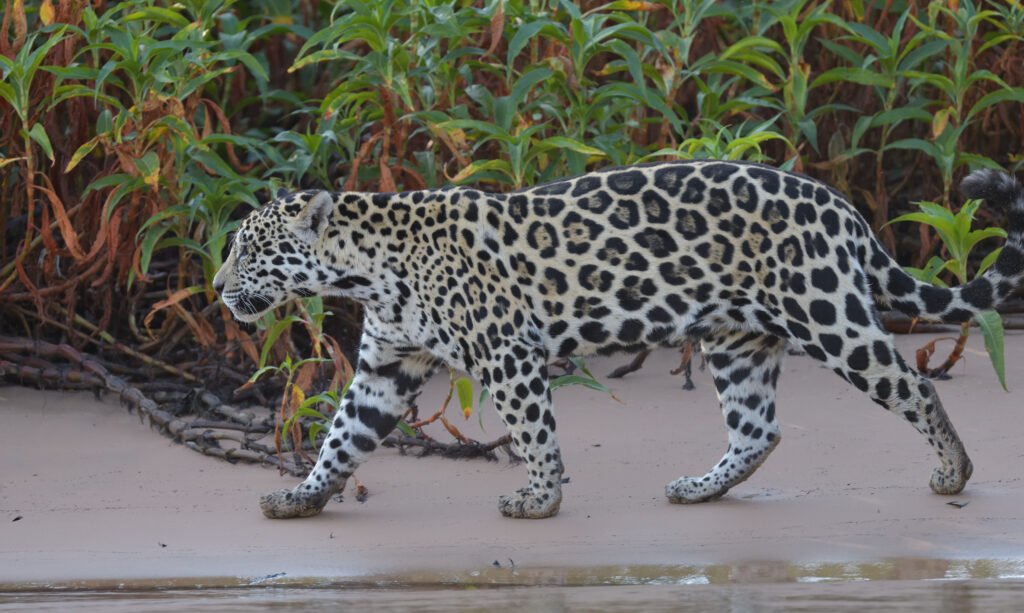
Moving on, notable sightings include Black Skimmers and Yellow-billed Terns on a sandbank, an aerial tussle between Southern Screamers, a pair of mutual-preening Yellow-collared Macaws, a four foot Green Iguana and close views of Rufescent Tiger Heron, Boat-billed Heron, Anhinga, Neotropic Cormorant, Wattled Jacana, Black-collared Hawk, Ringed Kingfisher, Black-capped Donacobius, Black-backed Water Tyrant and Rufous-tailed Jacamar. On the way back to the hotel for lunch, our last notable sighting is a family of four Giant Otters trying to get comfy for a snooze amid tree roots on a sandy patch of riverbank.
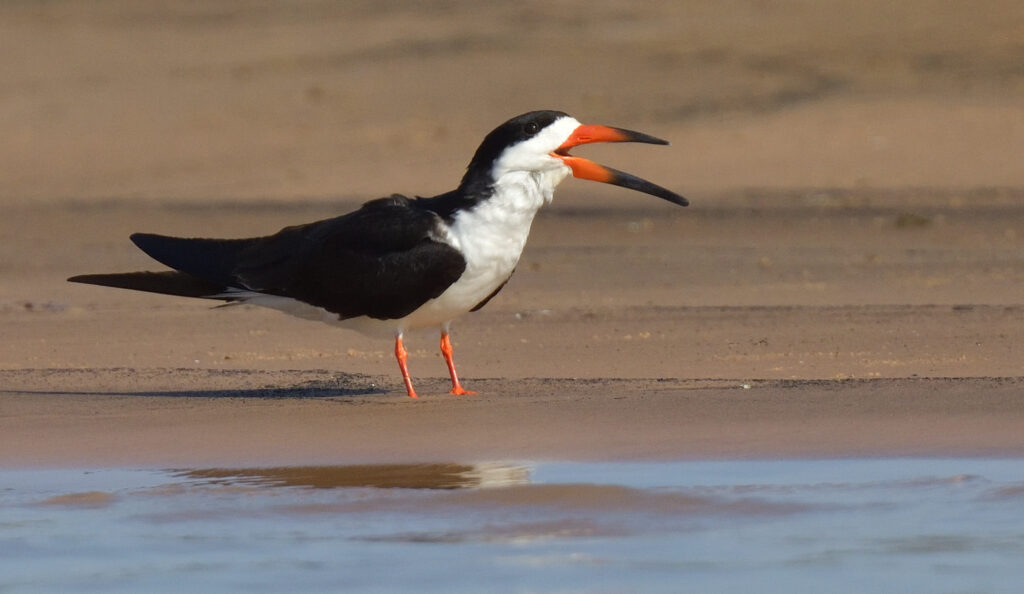
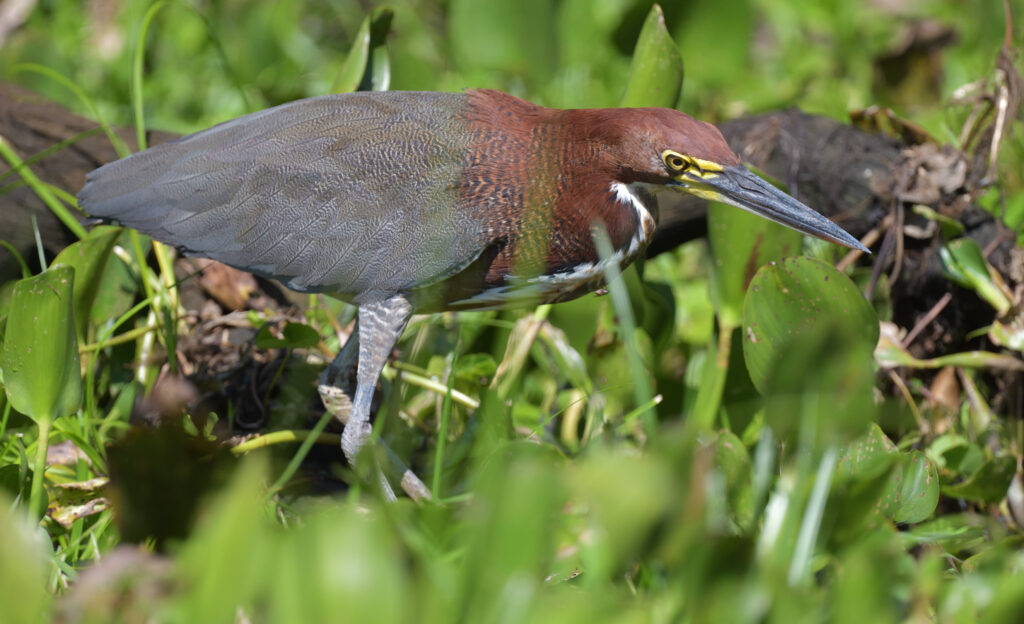
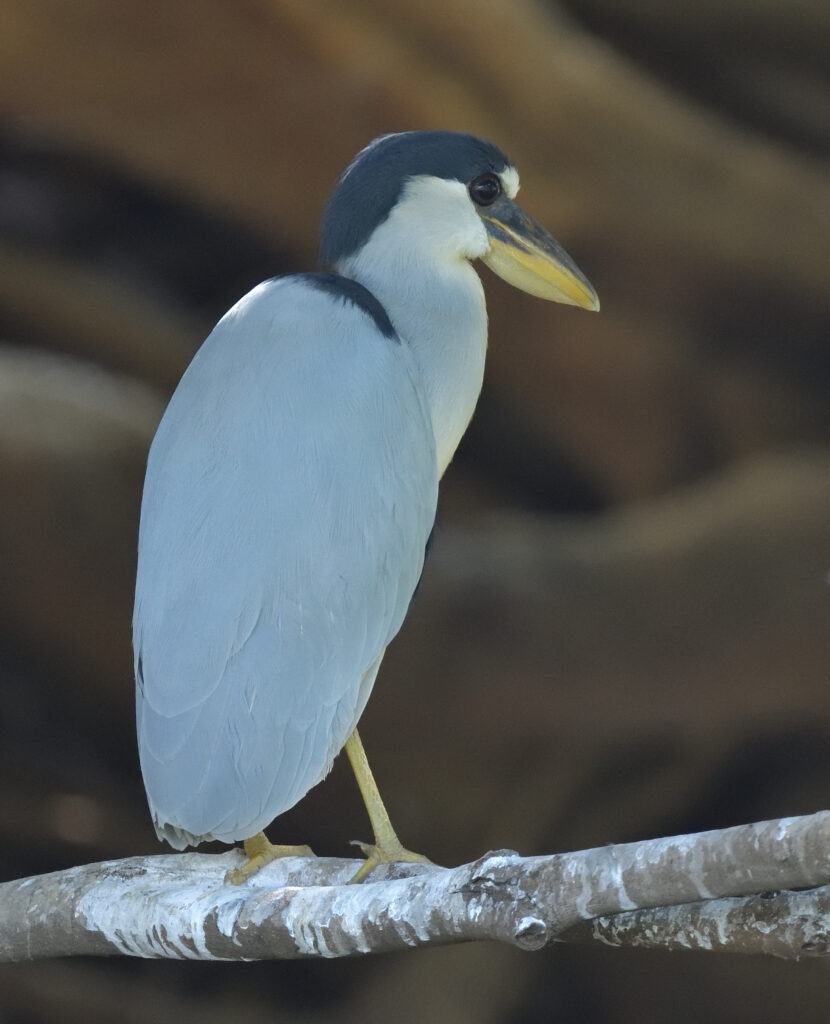
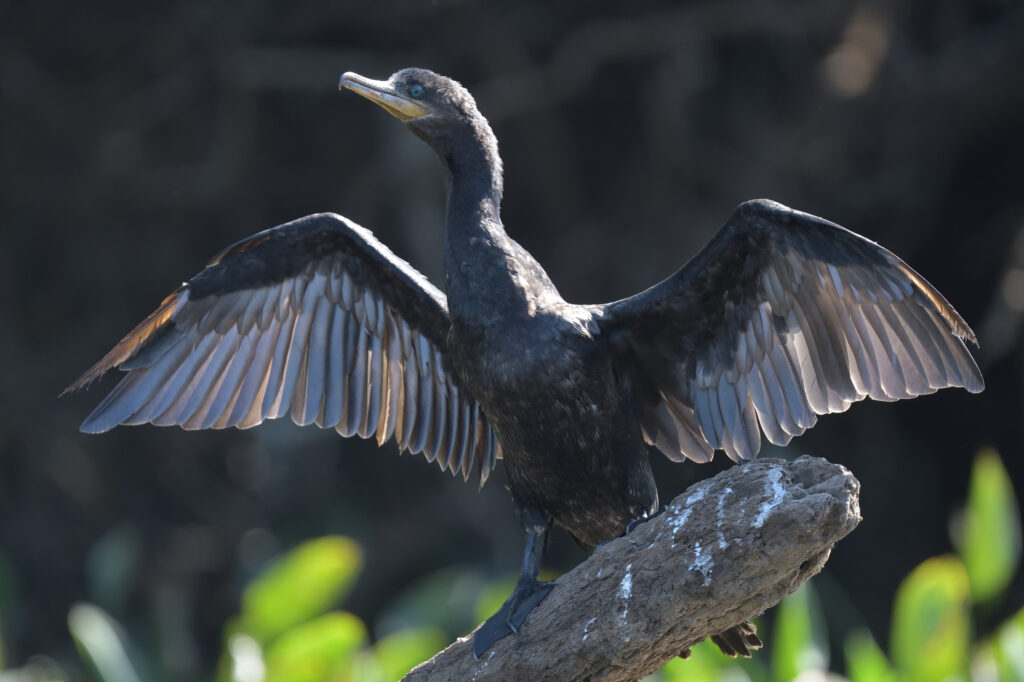
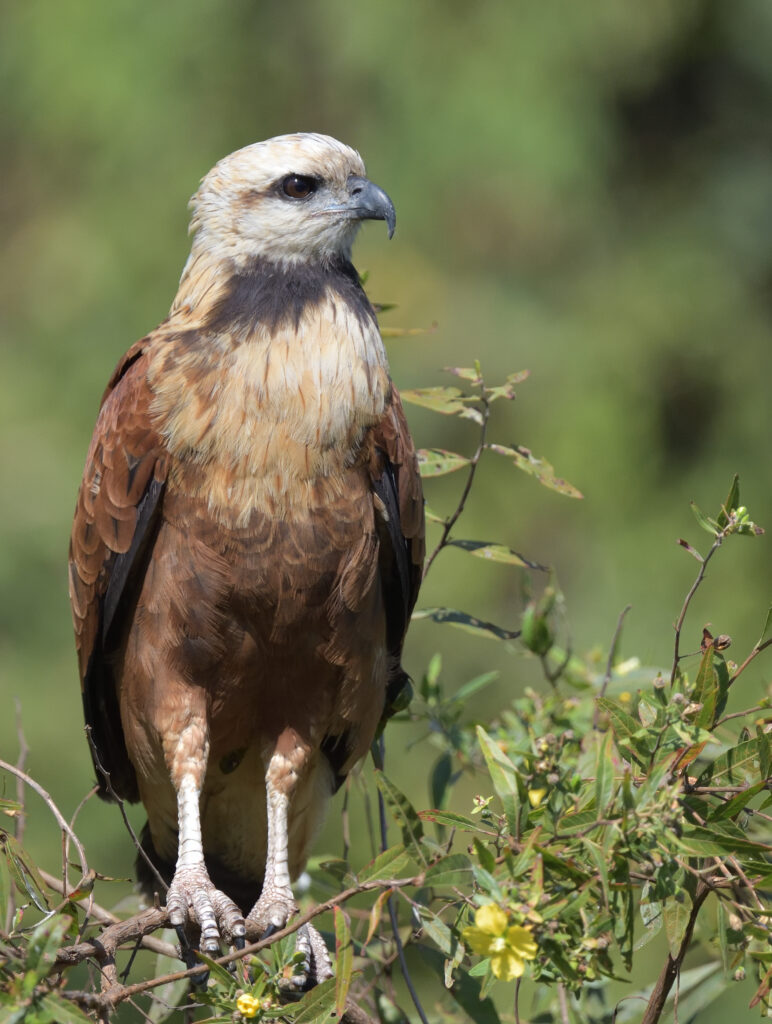
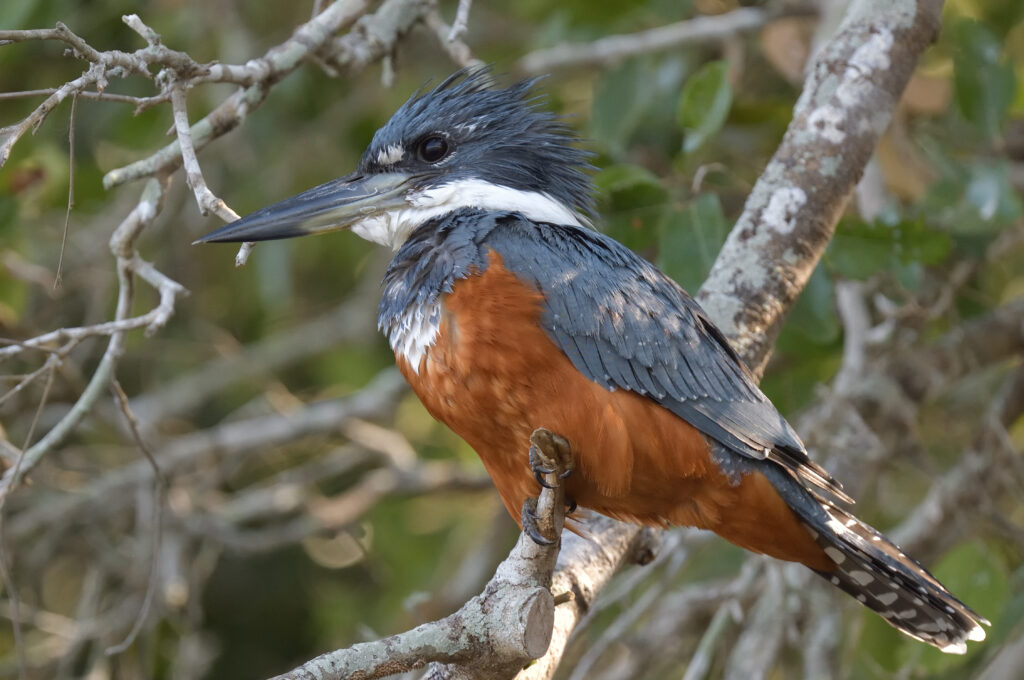
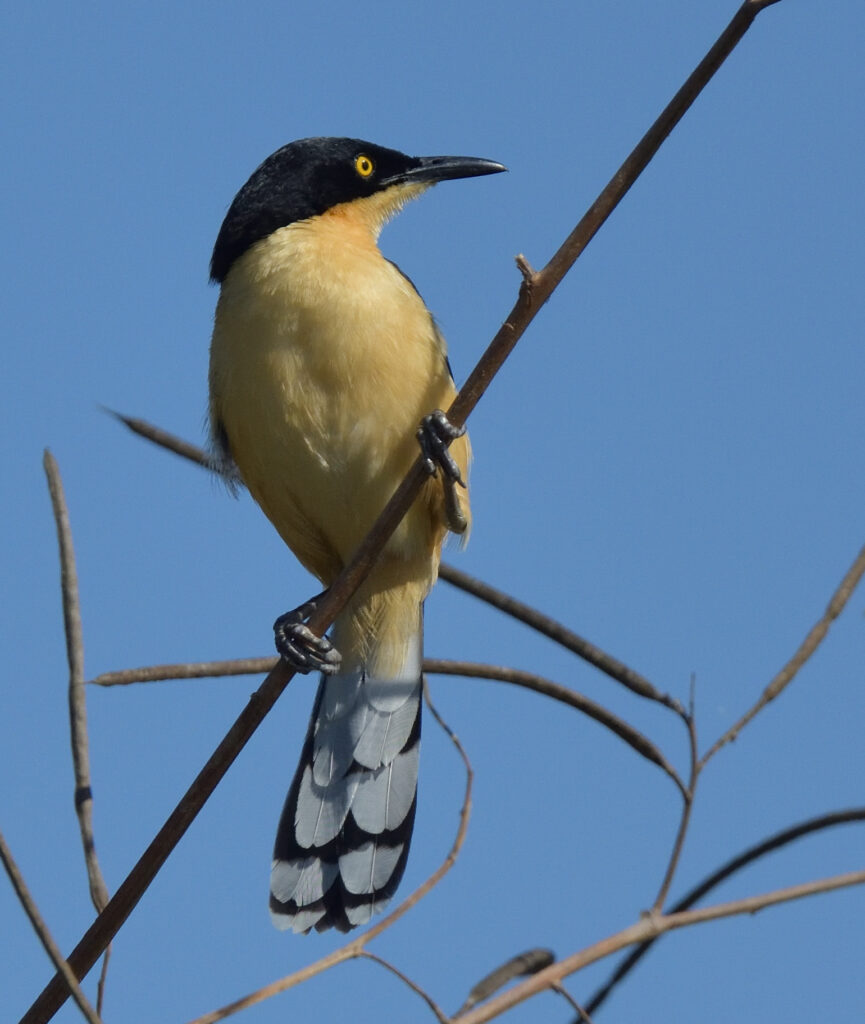
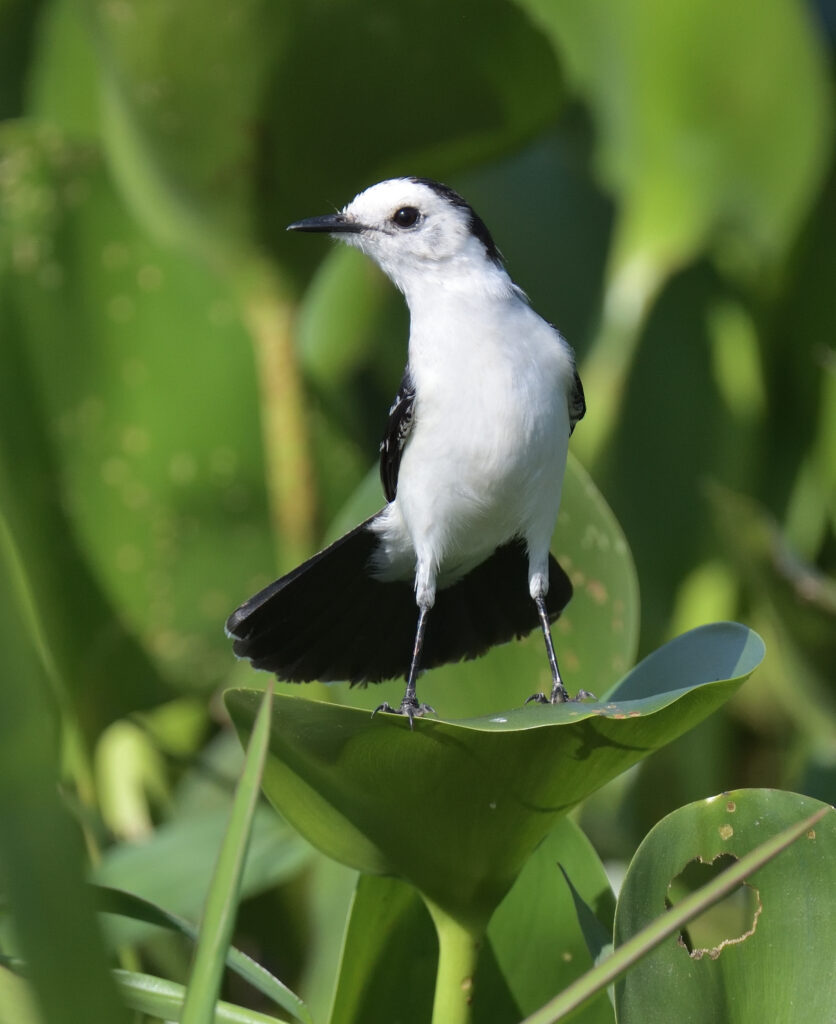
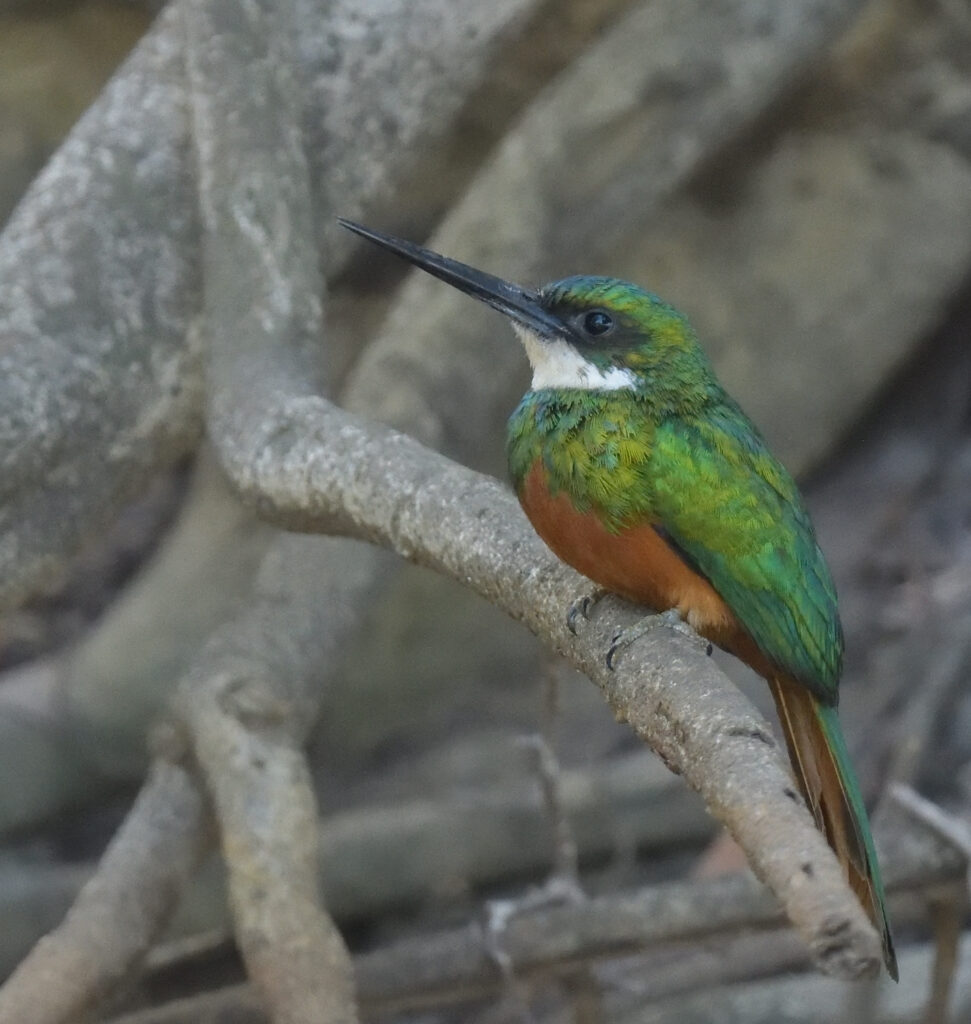
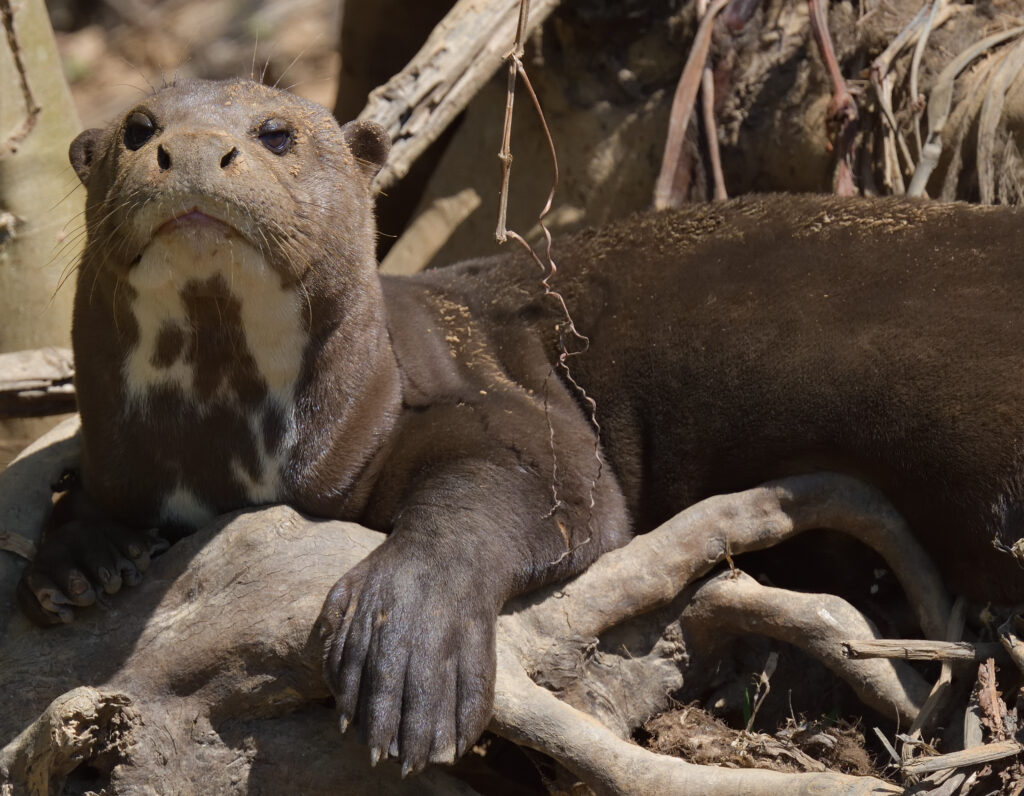
Seventeen Capybara graze the hotel lawn on our way back to the boat for an afternoon ride upriver, where we soon find a group of five Giant Otters swimming downstream with a purpose while noisily squealing to each other. Next, we spot the head of a Tiger Rat Snake peering from a hole in the riverbank. Slowly cruising along narrow tranquil channels lined with water hyacinths and caimans galore, we get good views of Cocoi and Striated Herons, Black-crowned Night Heron, Wattled Jacana, Ringed Kingfisher and a Rufescent Tiger Heron sunbathing with wings outstretched like a cormorant, while Greater Ani and Boat-billed Flycatcher are new birds for the trip. Heading back to the hotel at dusk, hundreds of Lesser Bulldog Bats create yet another spectacle as they take to the air to hawk for insects over the river.
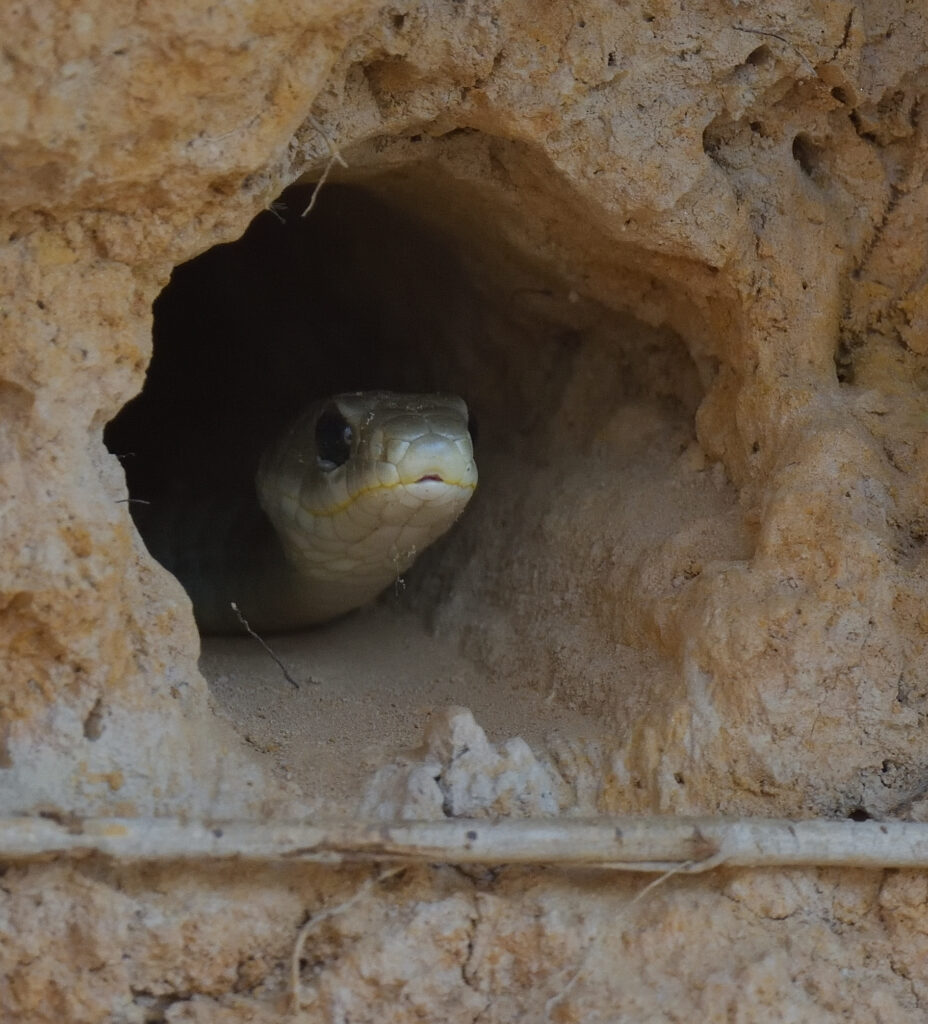

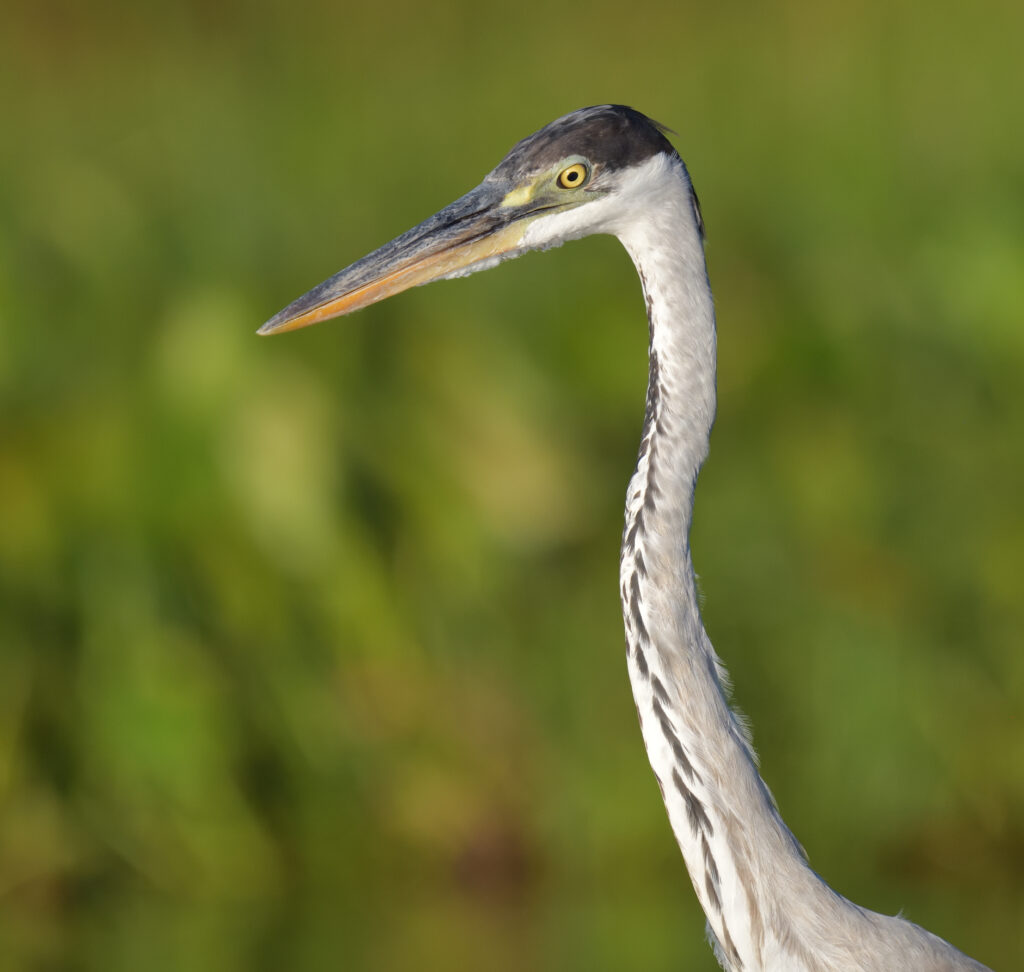
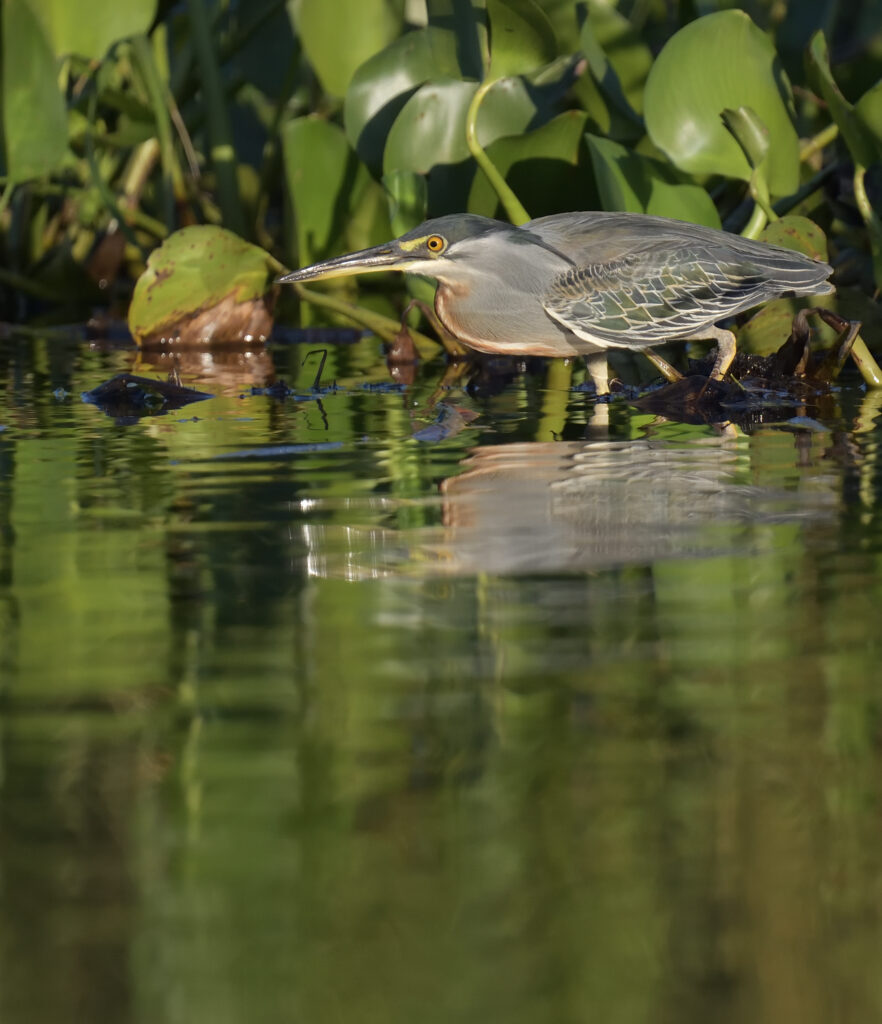
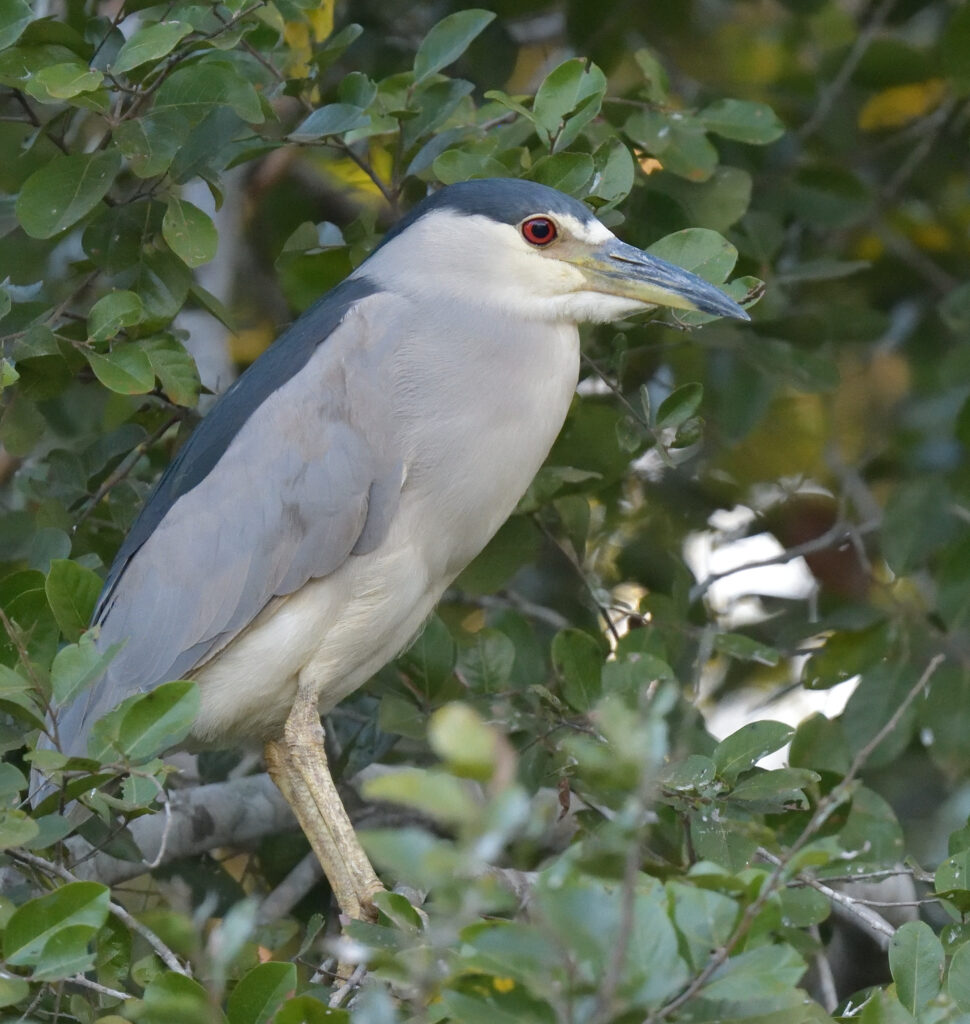

At 6.15am, we set off upriver towards a deep orange sunrise, full of anticipation for the day ahead on the river, passing White-throated Piping Guan as we go. By 7.37am, we have our first Jaguar of the day, a radio-collared male called Lausado, swimming strongly downstream along the edge of the river. After following him for around ten minutes, he climbs onto the bank, shakes himself off and slinks away into the bushes. Less than five minutes later, he reappears at the top of the bank, yawns, licks a paw and poses there for another five minutes or so before moving away. Seven minutes later, at 8.02am, a female Jaguar called Jaju strides across an open stretch on the opposite side of the river! While a Jabiru brings twigs to its nest in a nearby tree, Jaju reappears at 8.18am, walks across a sandy beach and stares at us, barely twenty yards away from the boat! We follow her for the next twenty minutes or so as she works her way along the shore before disappearing into thick vegetation. Given the close proximity of these two big cats, we wonder if the small fresh wound on Lausado’s cheek may have been inflicted by Jaju during an amorous encounter, though we will never know.

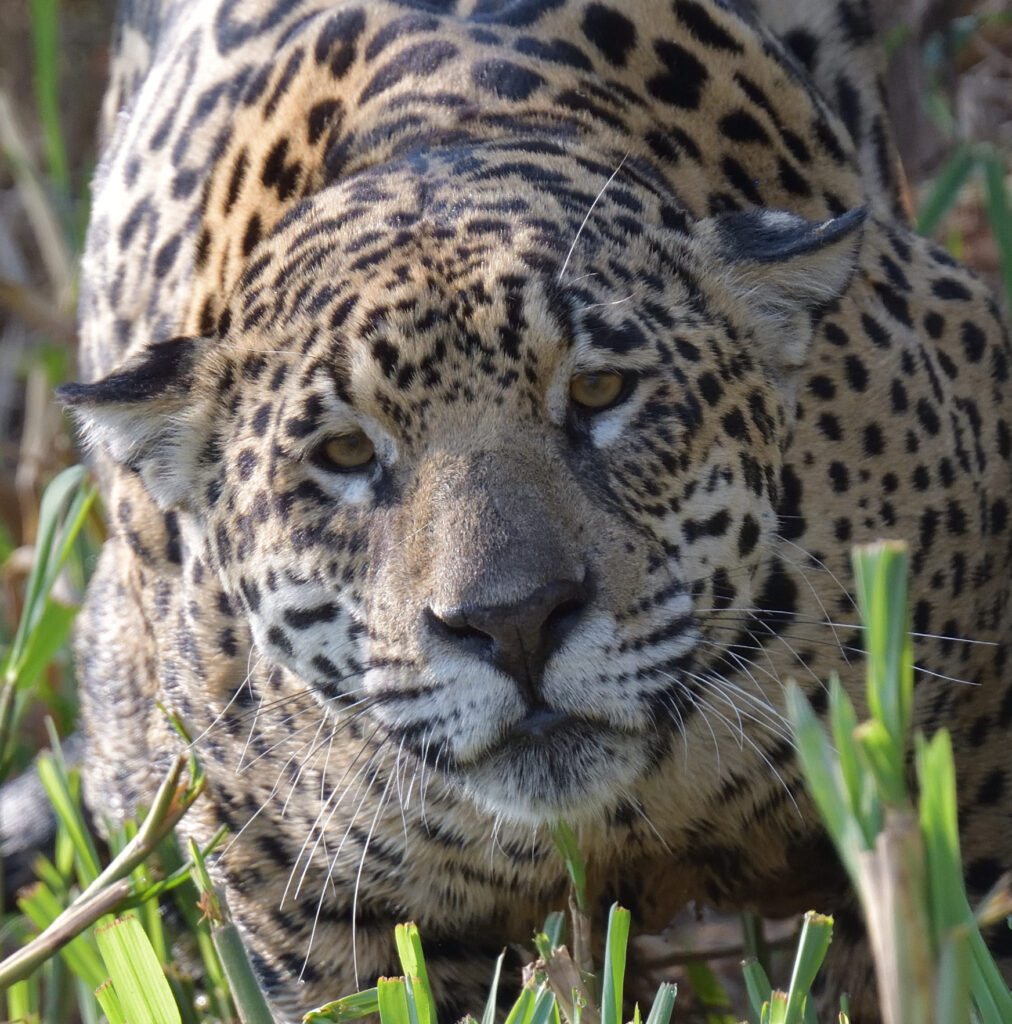
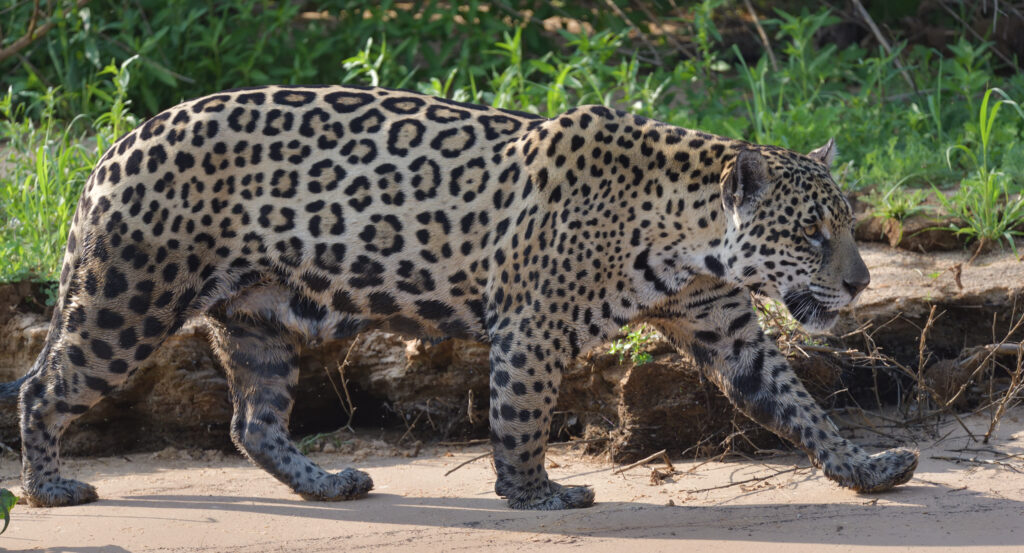
Moving on, two Squirrel Cuckoos fly across the river ahead of the boat, an Anhinga poses nicely and then at 9.36am we meet a female Jaguar called Patricia at the top of the riverbank, looking down at the river’s edge. As we watch, she creeps slowly and purposefully down the bank, inch by inch, while focused on an imperceptible target. Suddenly, she lunges headlong into the river right in front of our boat, as we gasp in amazement at her dive, for which we give an eight out of ten! She surfaces ‘empty handed’ and swims downstream for the next ten minutes, and then we move on half an hour after meeting Patricia.
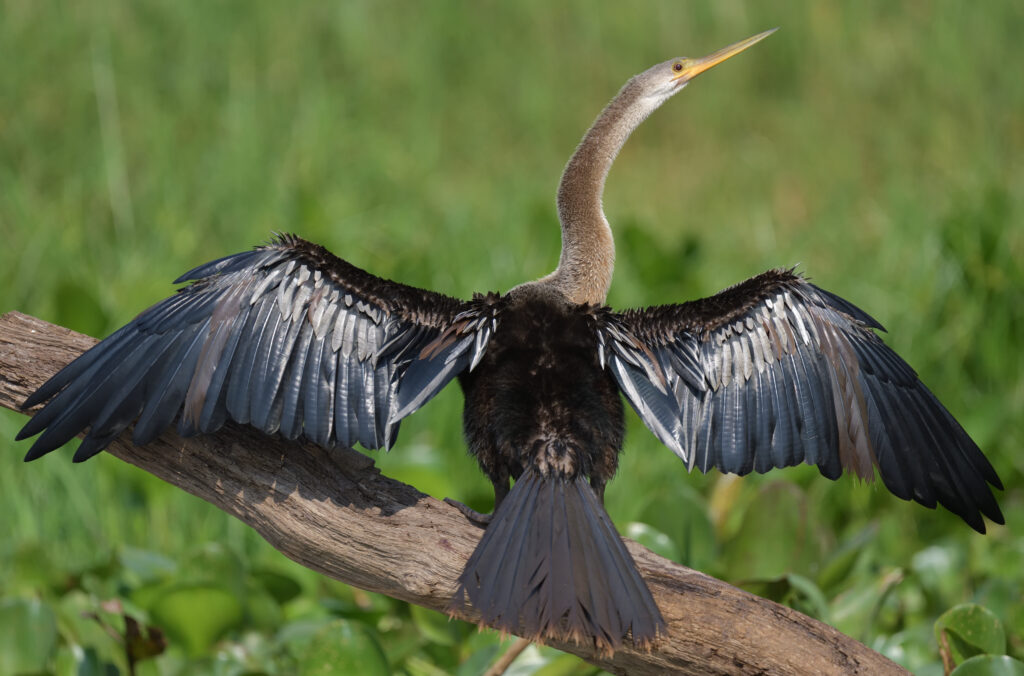

From here, we cruise a short way downstream and turn into a narrow channel where we relocate Lausado, the collared male, up to his neck in Water Hyacinths, until he decides to swim across the narrow channel ahead of our boat. Returning along the channel, we soon relocate Patricia resting under the shade of a large riverside bush, but with nothing much happening, we decide to rejoin the river and continue cruising upstream. Roughly half an hour later, we spot Jaguar number five for the trip, sitting atop the riverbank and watching something down below. Within two minutes of our arrival this big male suddenly leaps straight toward the boat, with forelimbs outstretched to disappear below the surface some fifteen feet below, with an almighty bellyflop splash, earning a nine from the judges! He surfaces like a cork, swims back to shore and a few minutes later he’s gone. How lucky was that for timing?
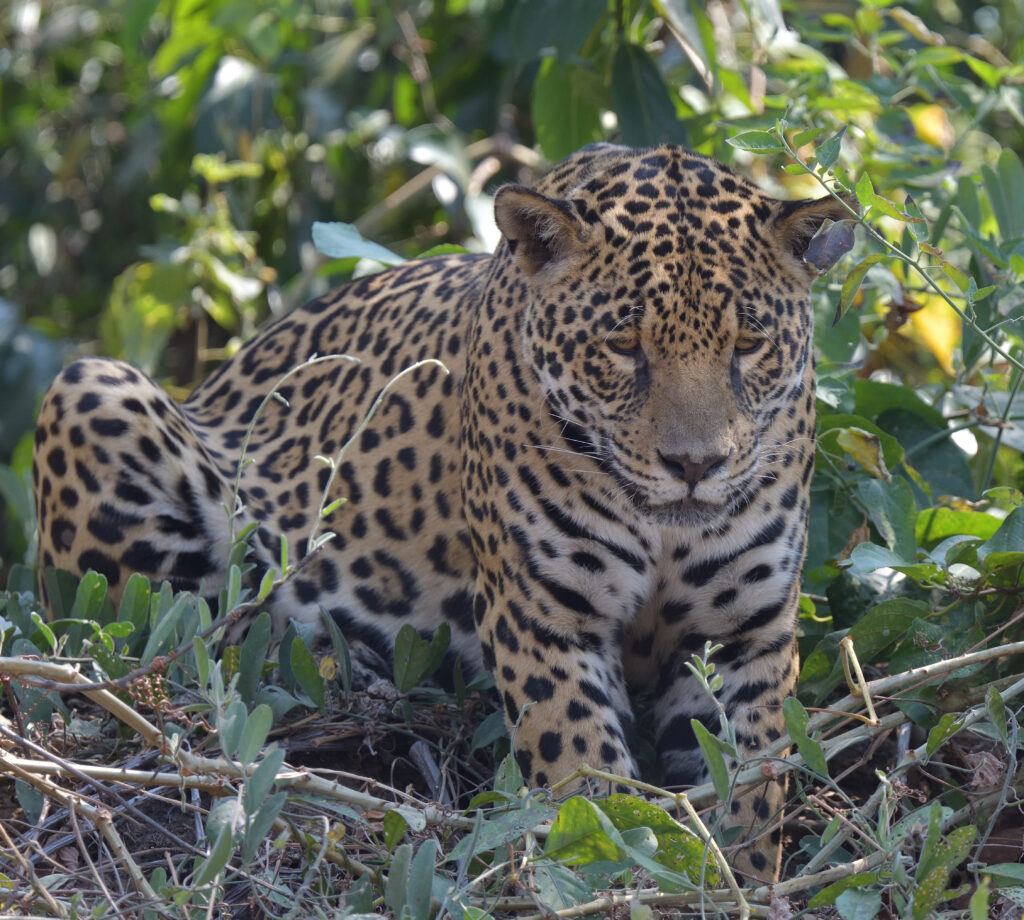
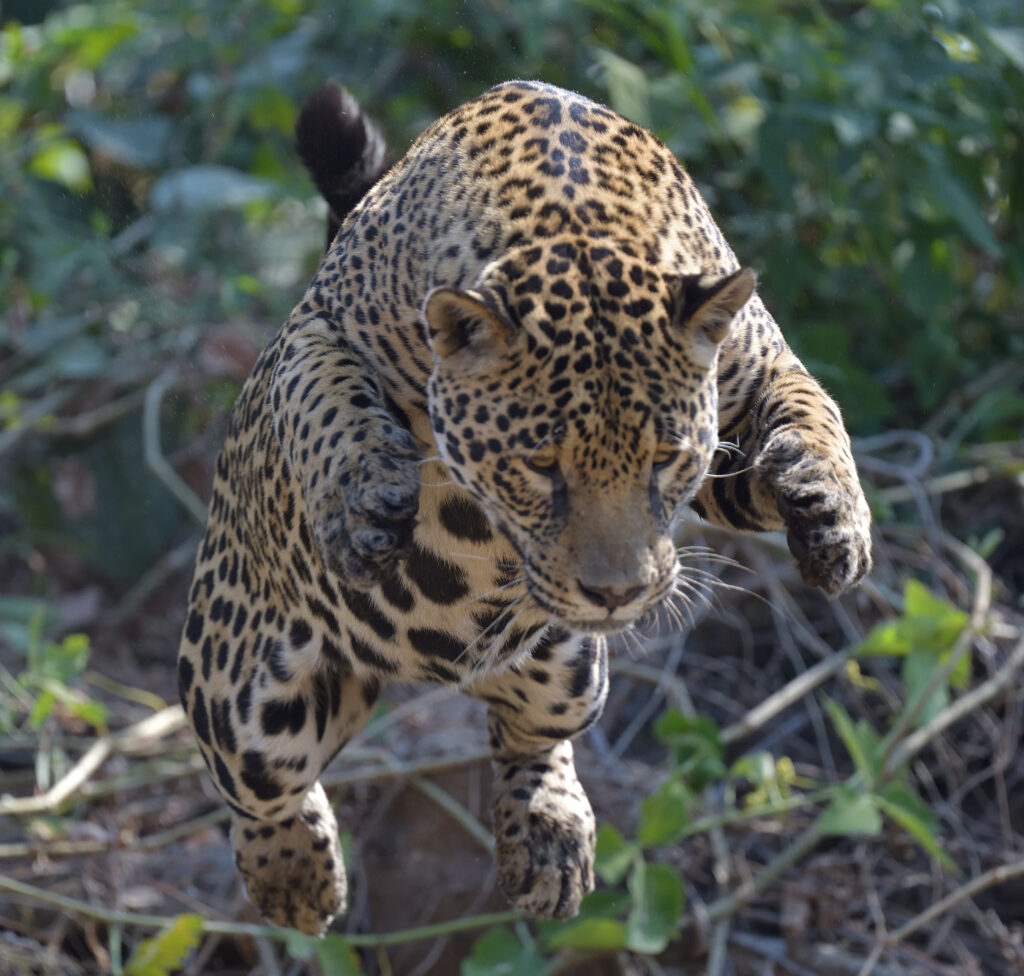
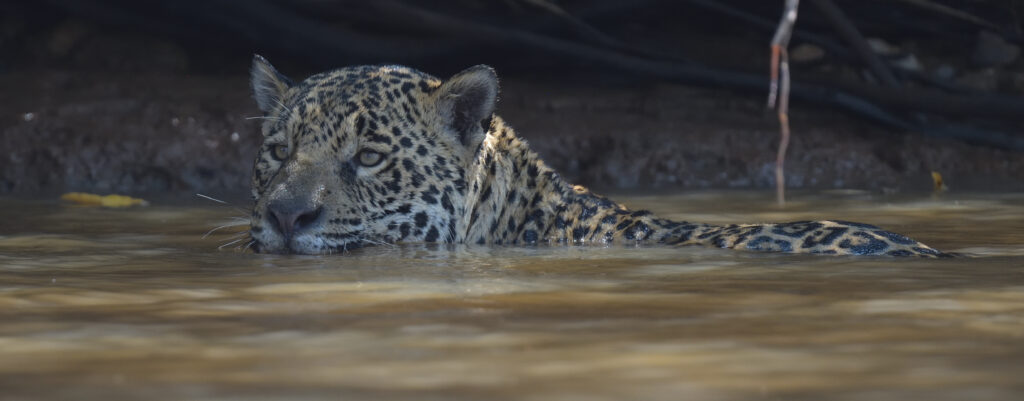
At noon, we turn into a narrow creek and get close views of Toco Toucan, Rufous-tailed Jacamar, a Green Kingfisher battering a sizeable fish, a colony of about twenty Proboscis Bats roosting against a tree trunk beside the river, and a Yellow-rumped Cacique which is new for the trip. The tranquil creek is an ideal place for our packed lunch just a few yards from several caiman and a sunbathing Anhinga.
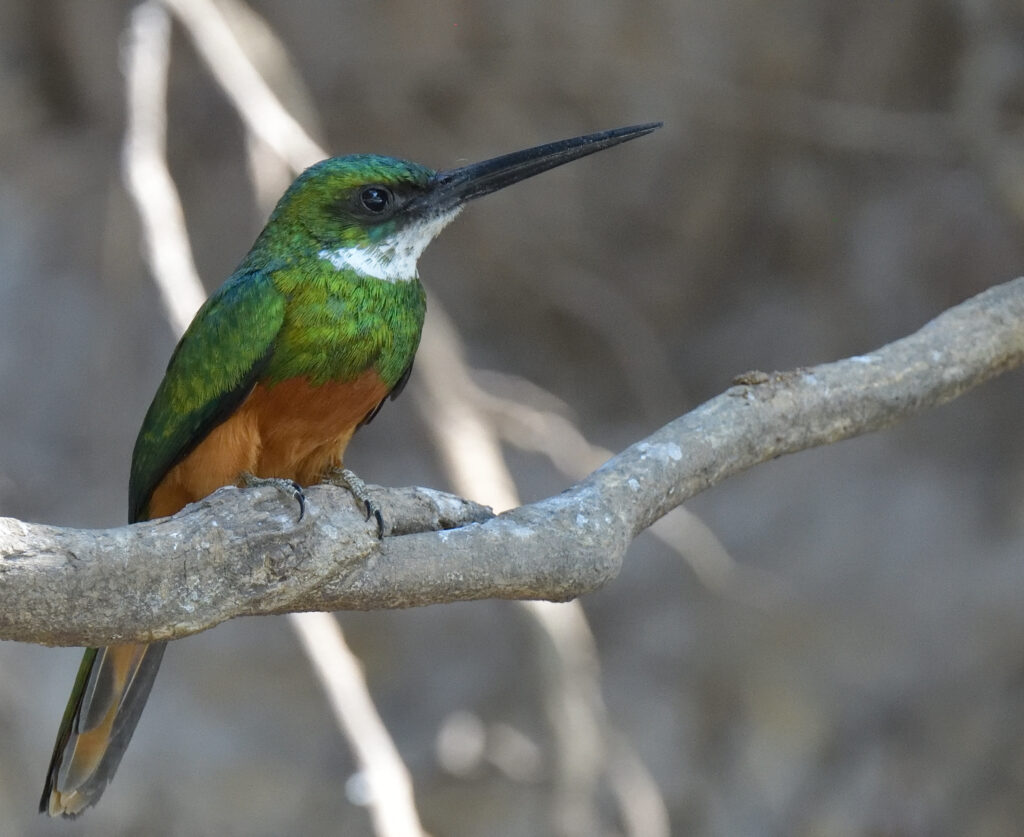
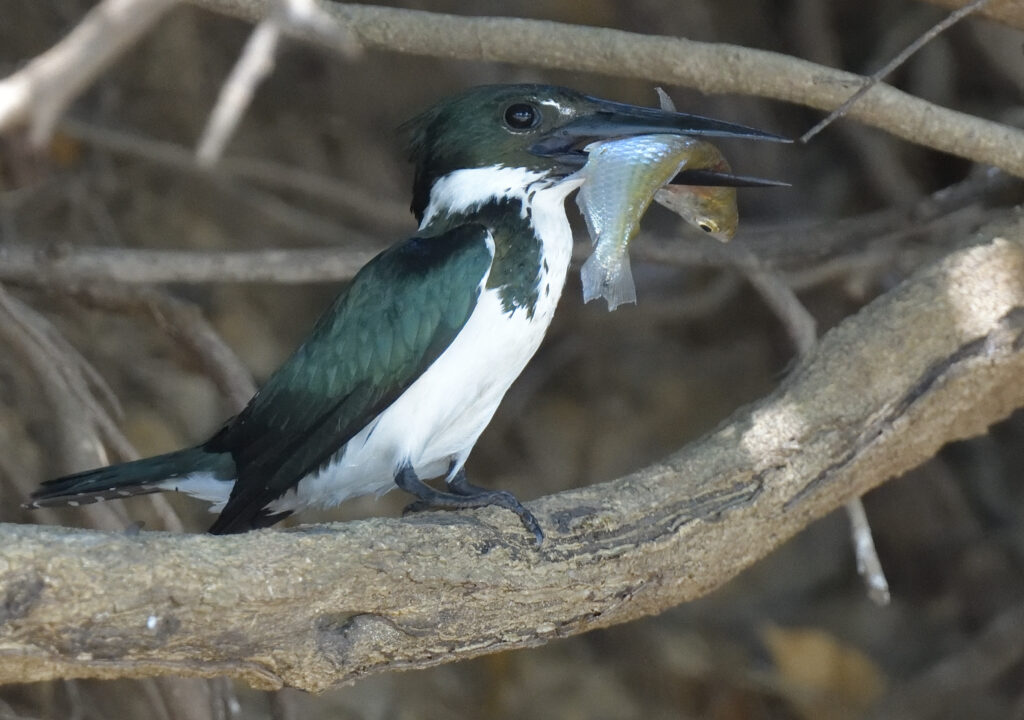
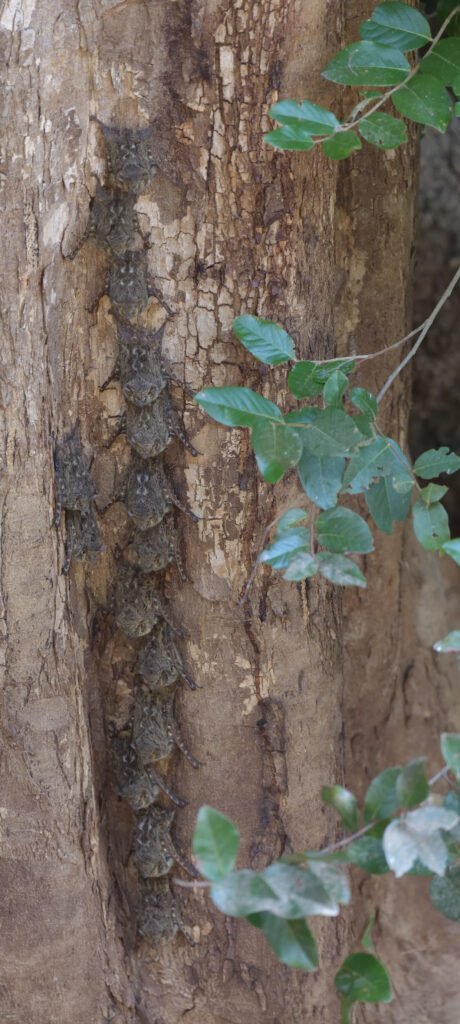
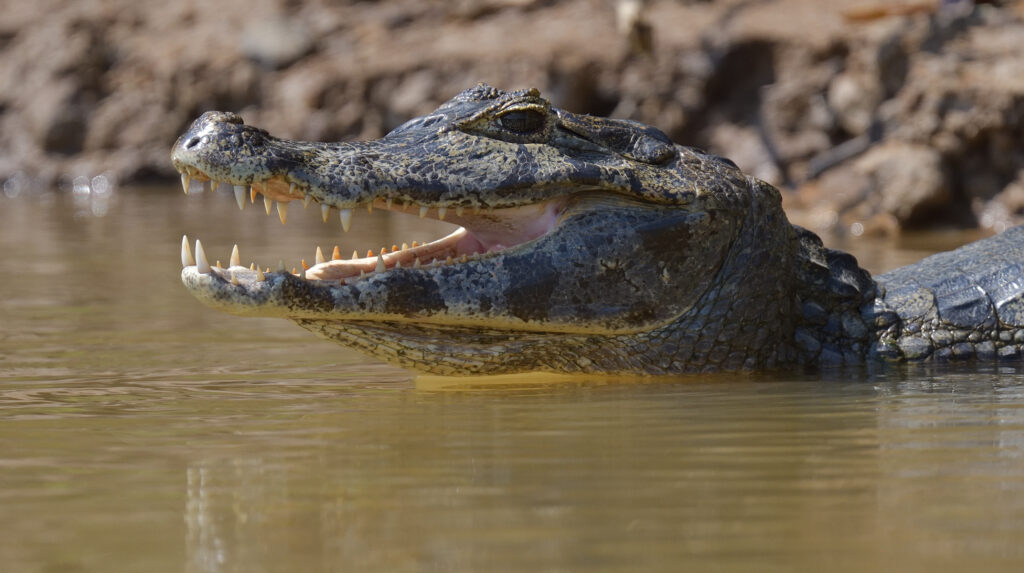
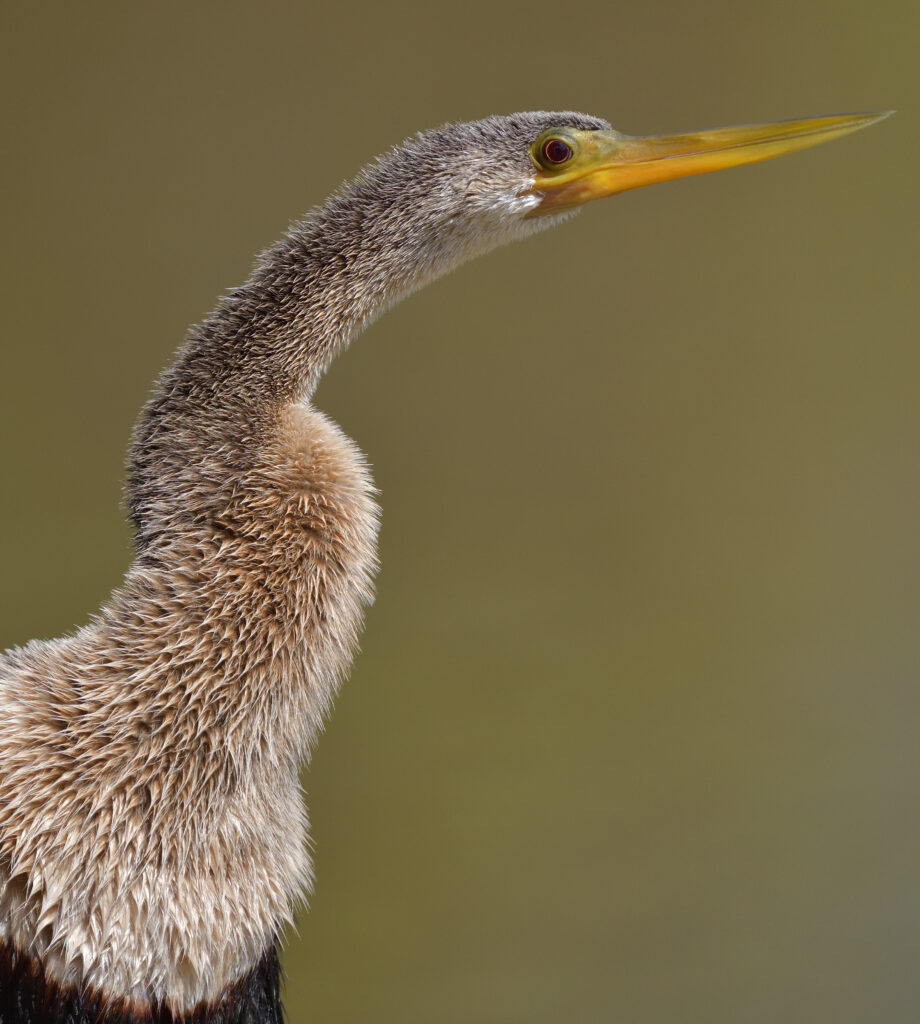
After lunch, we return along the creek when the outboard motor packs up, but at least we are up the creek with a paddle! Once back on the main river, we flag down a passing boat for assistance. Once the outboard is up and running again, we head downstream and get a second sighting of the plunge-diving Jaguar paddling along the edge, although he doesn’t stay for long. Further downstream, we find Lausado, resting on a sandy beach, while yawning occasionally, and we spend a magical twenty minutes in quiet contemplation of such a beautiful animal, so close to us that we feel obliged to whisper in his presence, until he decides to move on.
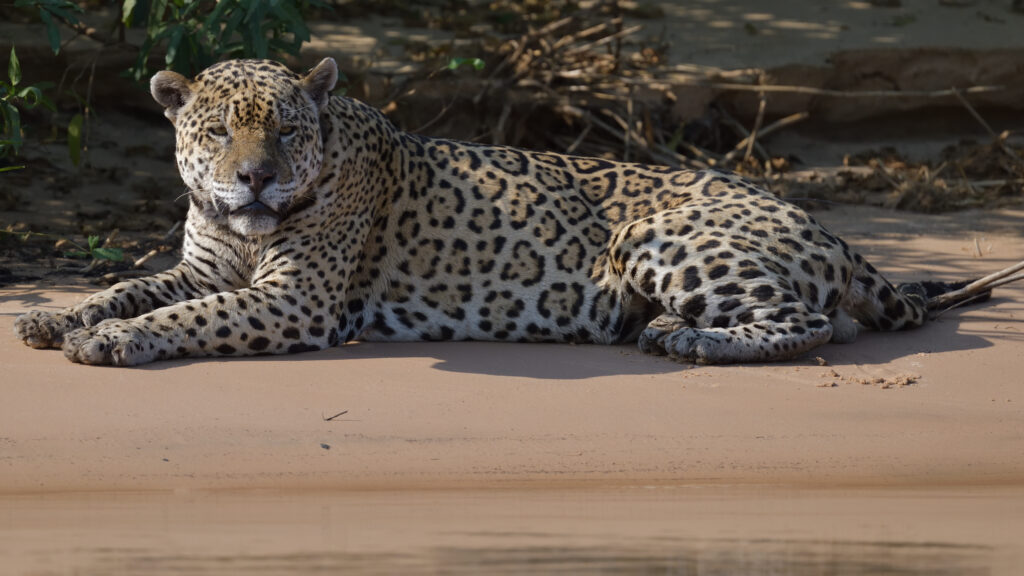
Further downstream, we revisit a productive creek and enjoy close views of Anhinga, Rufescent Tiger Heron, Wattled Jacana and Black-collared Hawk.
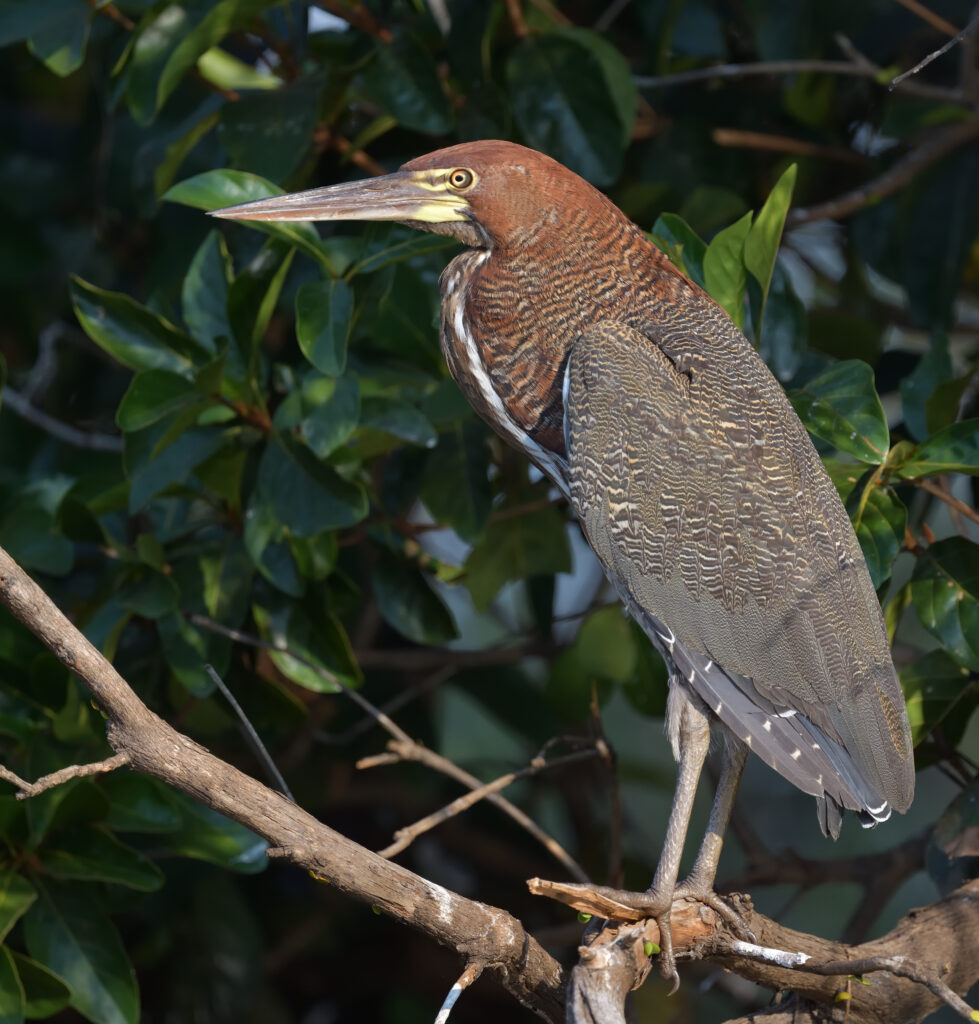
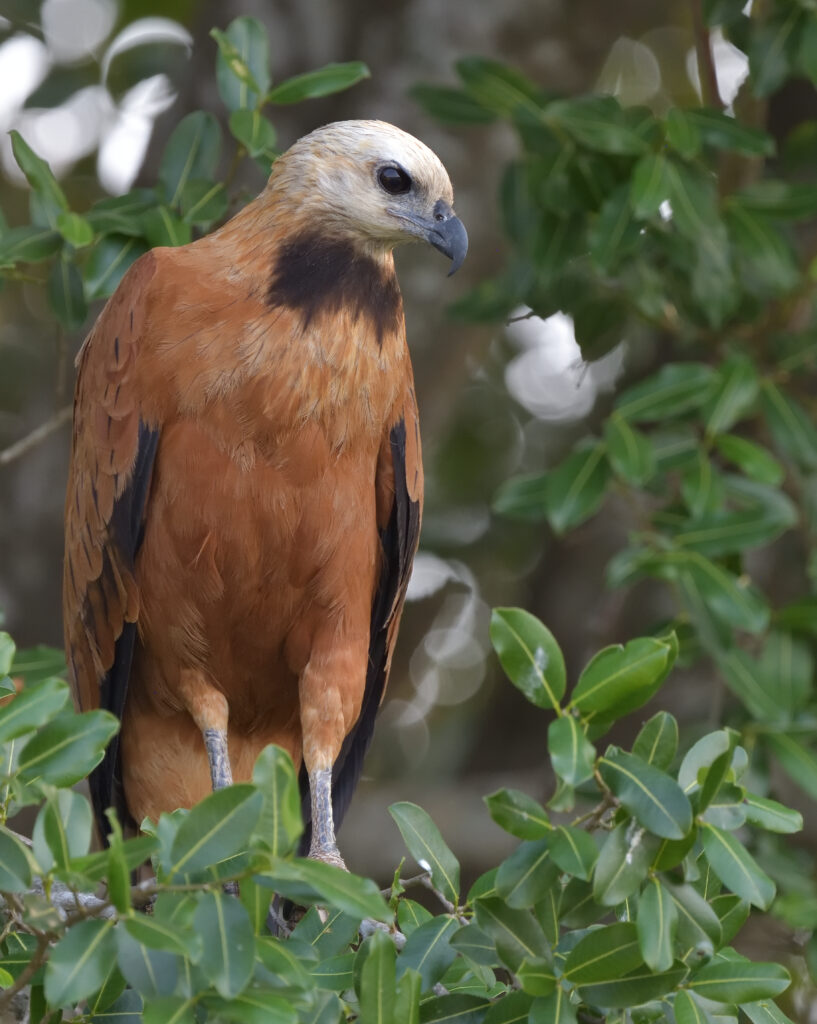
Back on the main river, a couple of Rusty-backed Spinetails are new for the trip and we end the day with another Jaguar, also resting on a sandy beach, making nine sightings of five different Jaguars today!
It’s cool and overcast this morning, with only three Capybara grazing the lawn and no sunrise to ride into as we head upriver, passing a couple of Southern Screamers a few minutes later. Further sightings include Yellow-billed Terns, a White-throated Piping Guan and a flyover Toco Toucan, and then two Black Skimmers and a Pied Lapwing on a sandbank. By 7.25am, we have our first Jaguar of the day, posing in the riverside vegetation and then slowly stalking along the bank for almost ten minutes. A little further upstream, we have a second sighting of the same Jaguar, firstly on top of the riverbank and then swimming against the strong current, showing how powerful these cats are. Then it decides to swim across the river and upstream on the opposite side, before emerging to continue stalking. After about 25 minutes watching this Jaguar, she meets up with a cub. Happy with the outcome, we continue exploring upriver, spotting Hooded Capuchins, Turquoise-fronted Parrot, a nest-building Jabiru and a posing Amazon Kingfisher along the way.
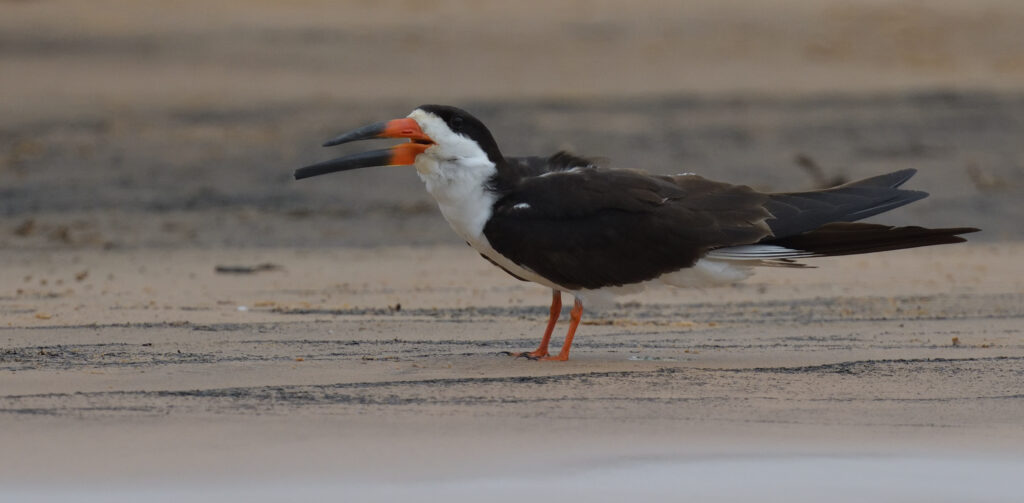
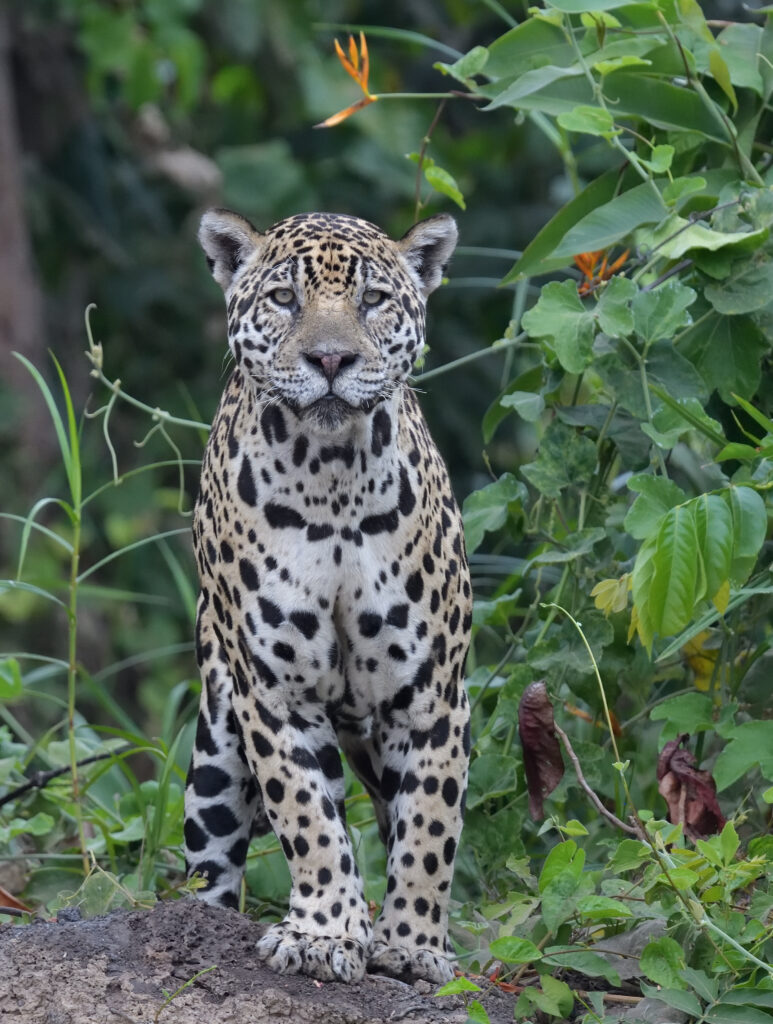
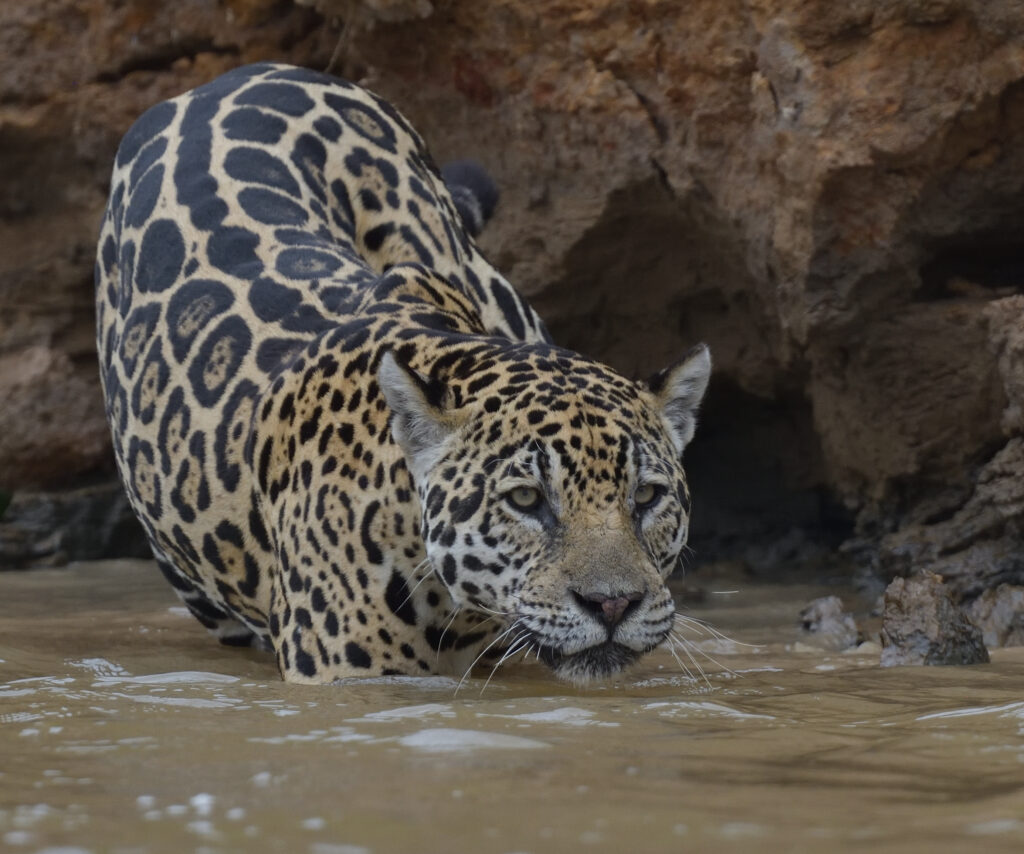
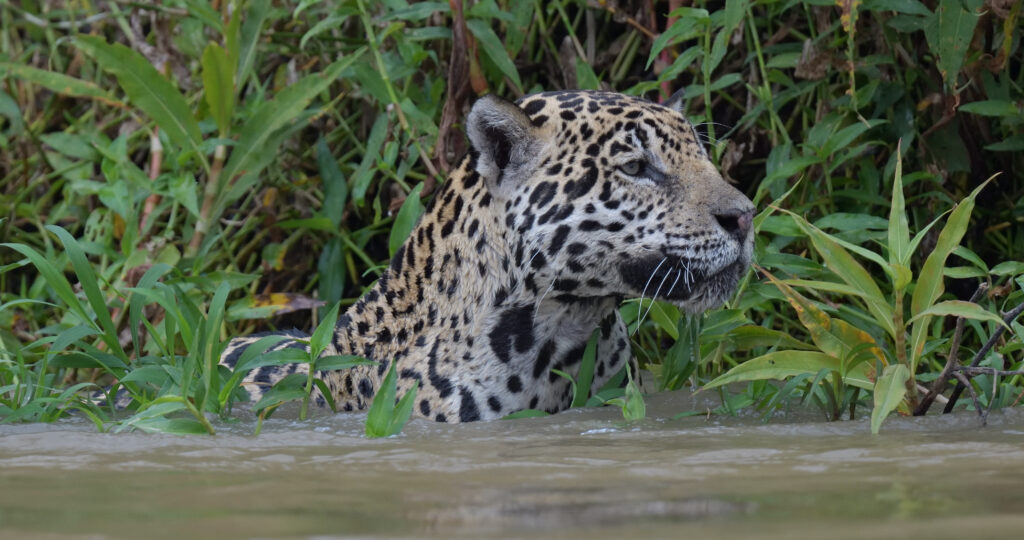
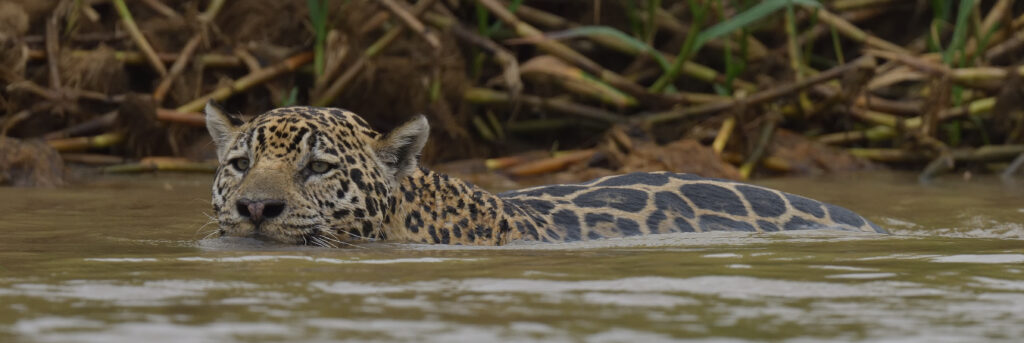

By 9.55am the sun is back and we enter a narrow creek for a very productive spell while calmly sitting in the boat alongside the emergent vegetation, enjoying close views of birds like Peach-fronted Parakeet, Amazon Kingfisher, Squirrel Cuckoo, Forest Elaenia, Vermillion Flycatcher, Yellow-chinned and Rusty-backed Spinetails, Black-backed Water Tyrant, Black-fronted Nunbird, Silver-beaked Tanager, two Lafresnaye’s Woodcreepers, two Great Kiskadees, two Common Tody Flycatchers, three Black-capped Donacobiuses, three Rufous Cachalotes and just one Solitary Cacique! Suddenly the calm is interrupted by a new Jaguar swimming across the mouth of the creek. This is Ozado, with visible teats once she emerges onto the riverbank, and we follow her progress for forty minutes as she works her way along the riverside, sometimes part submerged. At one point she emerges from the vegetation with a fish snack, possibly a catfish! With at least three Jaguars before lunch, that was a very rewarding morning.
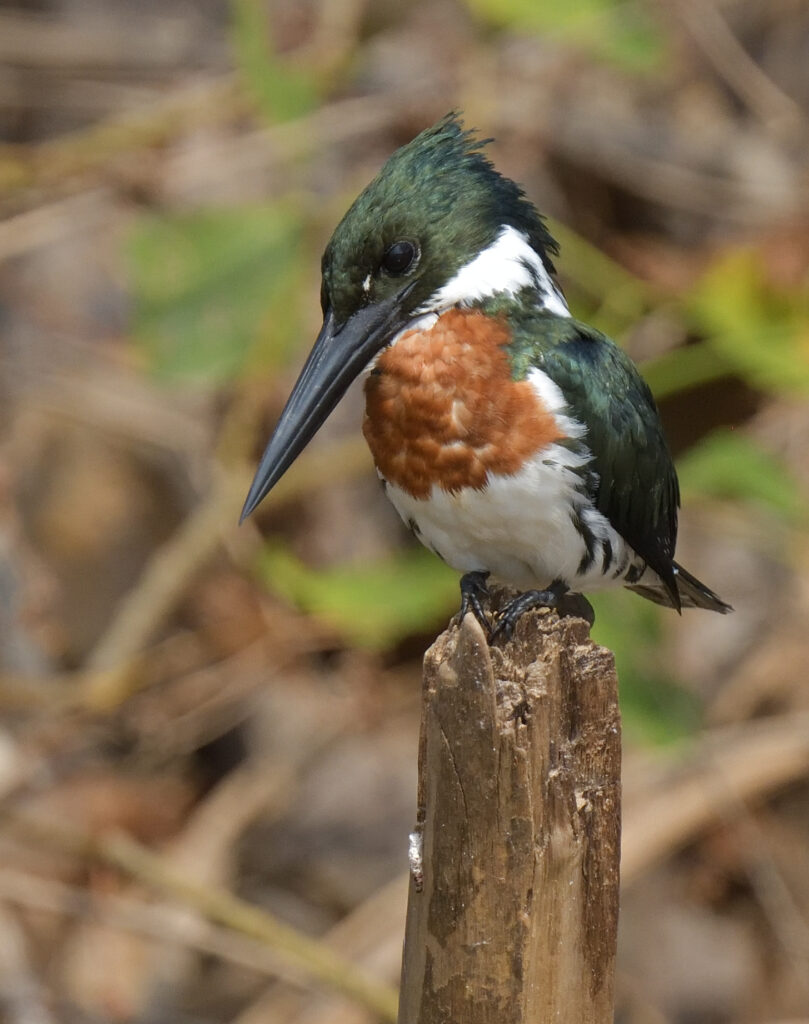
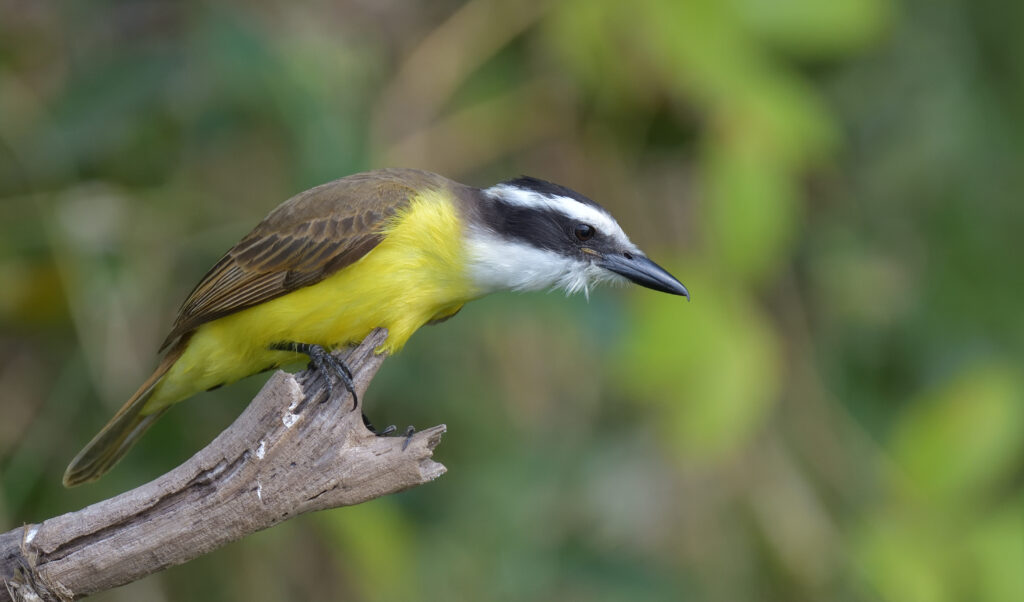

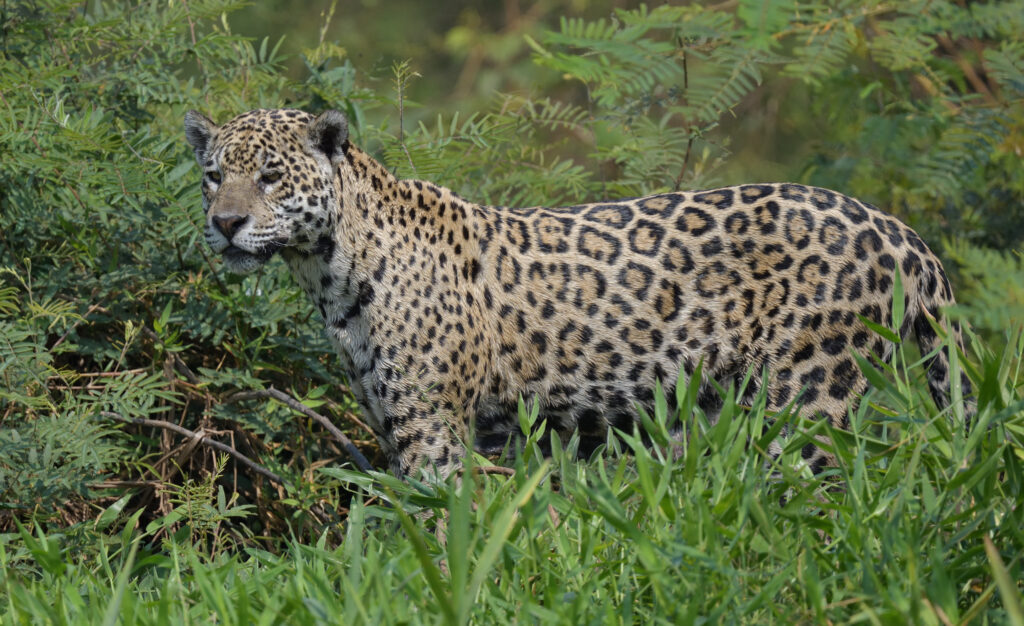
After lunch, we set off at 2.30pm for one last boat ride and this time take the right fork into ‘uncharted water’ along the Rio Piquirí, hoping to see the Mato Grosso Antbird which is endemic to the Pantanal. Although we hear it calling, it remains unseen, although we do meet a very obliging Jabiru and find a Sunbittern, as well as Pale-vented Pigeons which are new for the trip. Back at the hotel, Marco shows us White-lined Broad-nosed Bats (who came up with such a name?) roosting in a basket-style light shade outside the dining room!
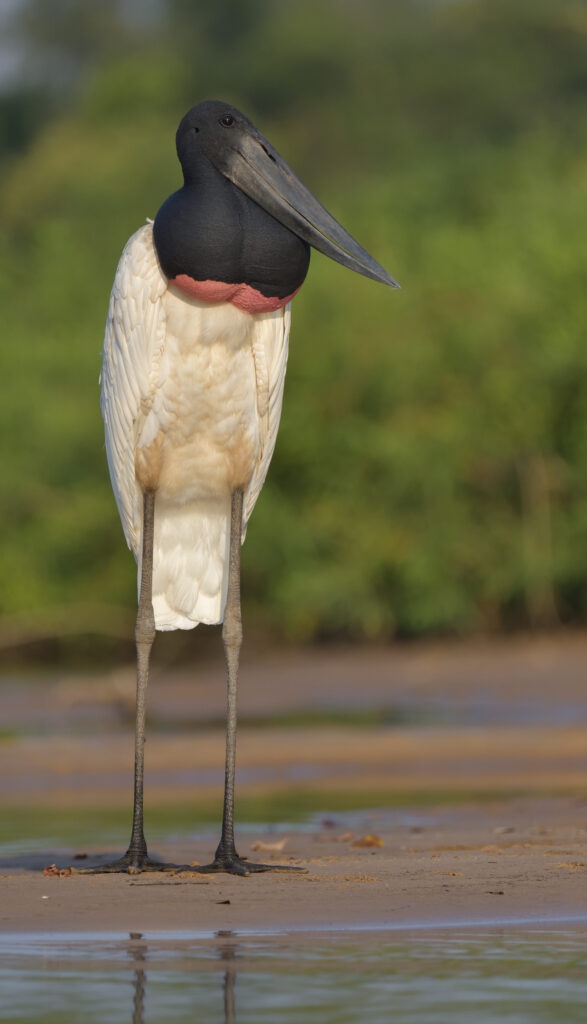
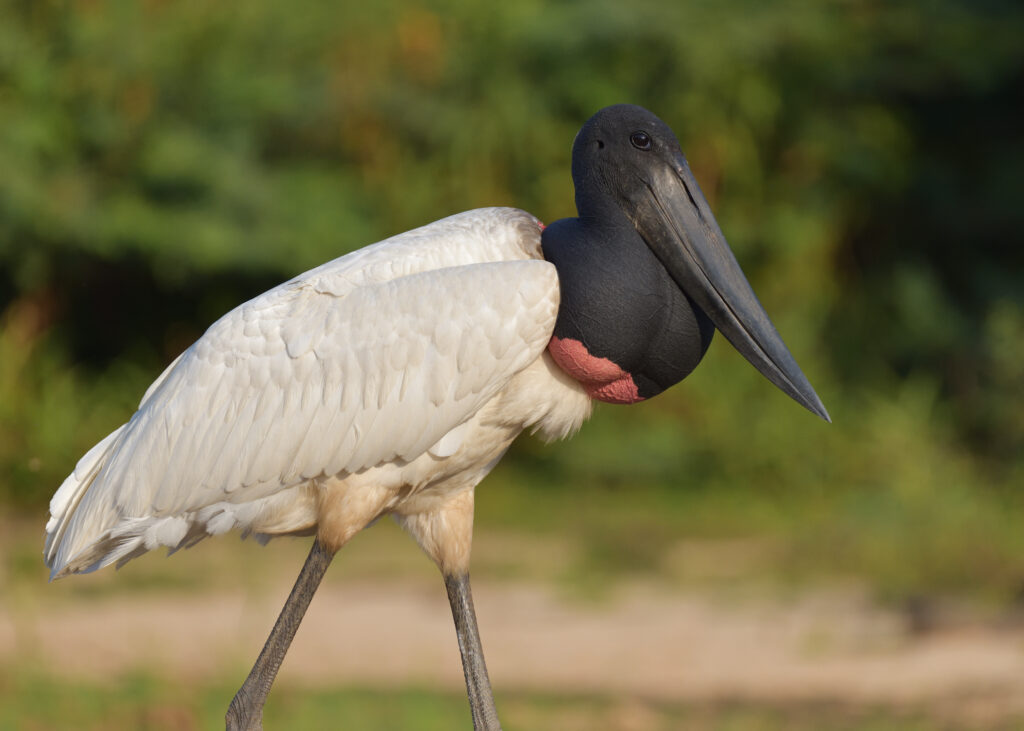
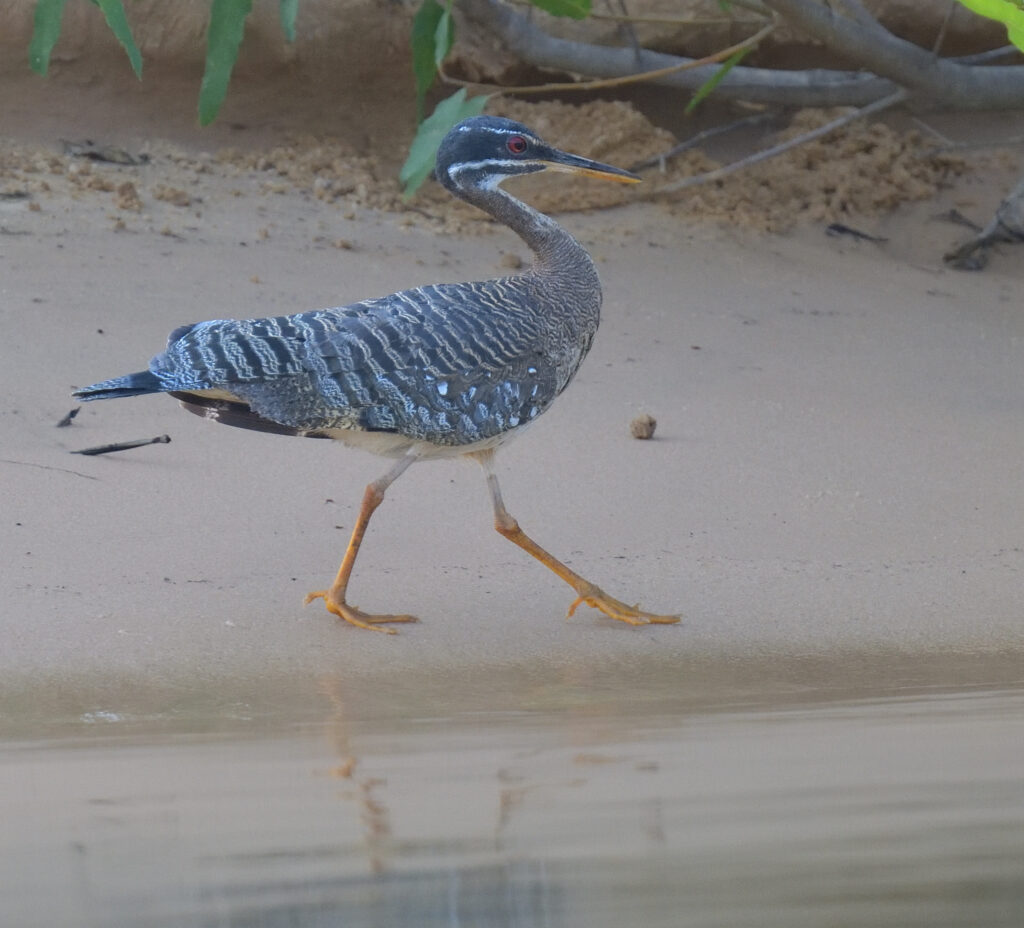

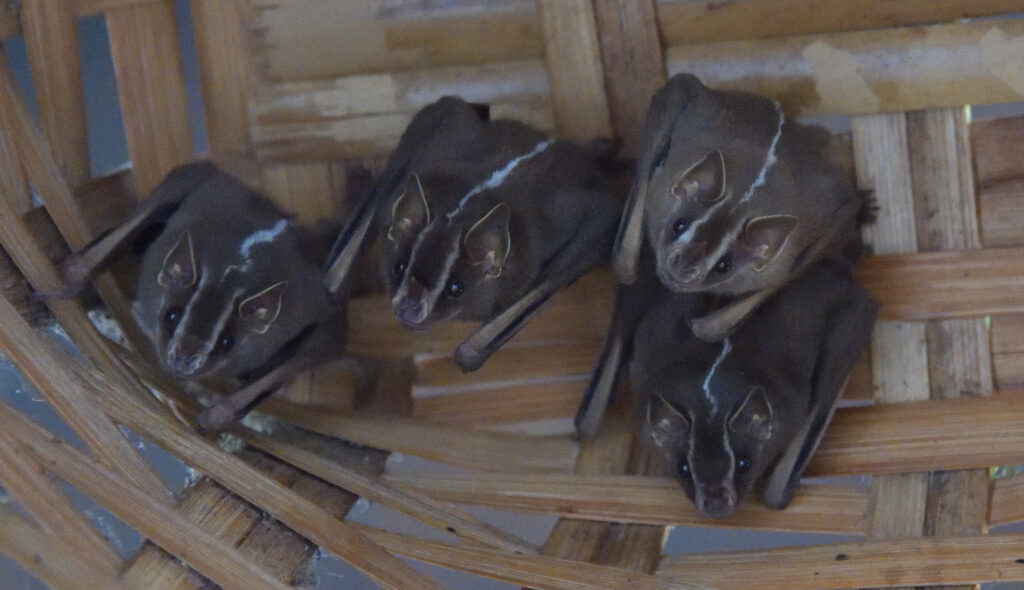
With nine different Jaguars ‘in the bag’ it’s time to leave Porto Jofre, where a quick birding session after breakfast produces birds like Buff-necked Ibis, White-throated Piping Guan, Savanna Hawk, Peach-fronted Parakeet, Picui Ground Dove, Picazuro Pigeon, Guira Cuckoo, Boat-billed Flycatcher, Rufous Cachalote, Greater Thornbird and Saffron Finch.

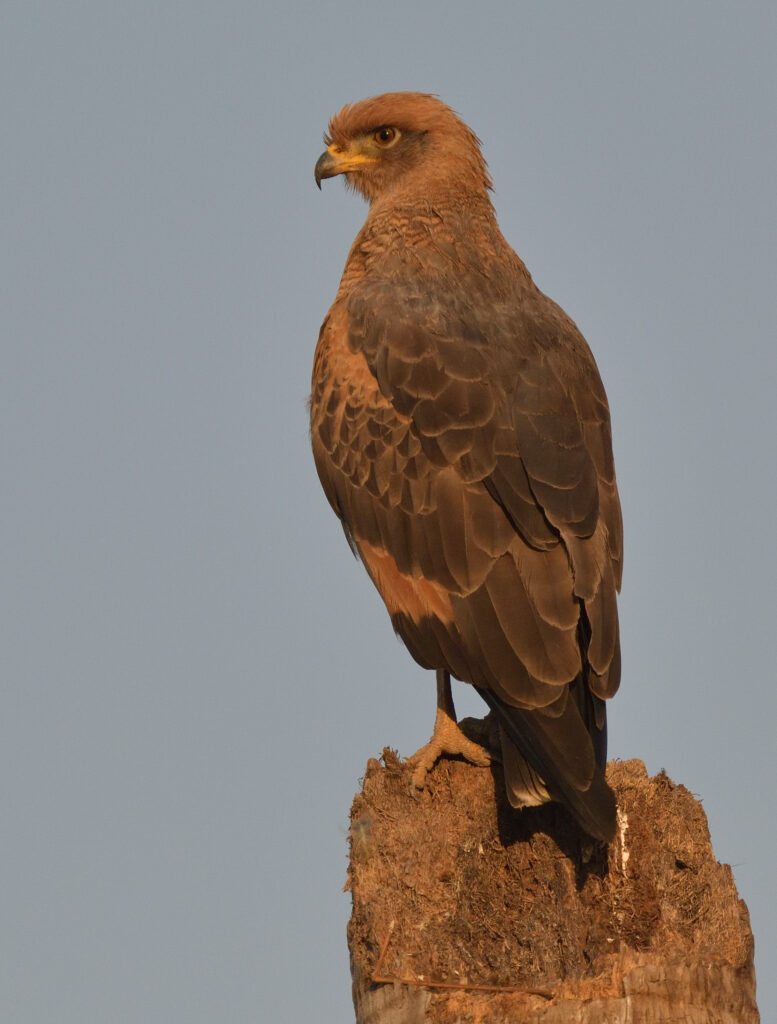
On the return drive north along the Transpantaneira, we spot another Savanna Hawk plus Snail Kite, Brown-chested and Grey-breasted Martins, White-headed Marsh Tyrant, Limpkins galore, a Southern Screamer on a nest, stag and hind Marsh Deer and best of all a scarce and elusive Giant Anteater drinking through its long snout at the side of the road! With a wedge of black on its front flanks, a long thin snout and a large witch’s broom tail this is a remarkably bizarre creature. From the same spot, we also see White-lored Spinetail and a Black-collared Hawk swooping down to grab a fish.
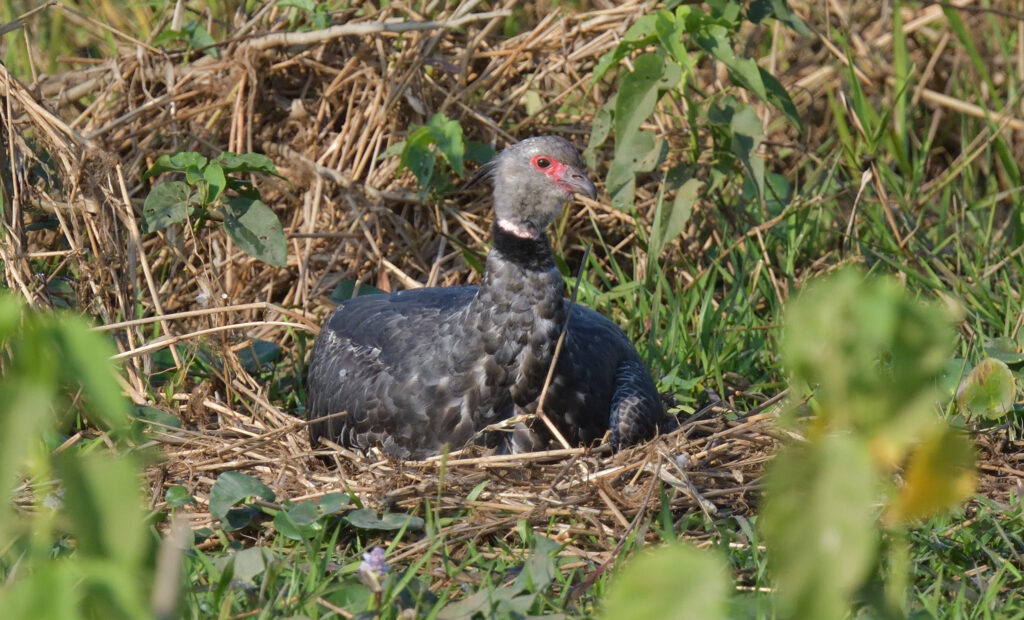
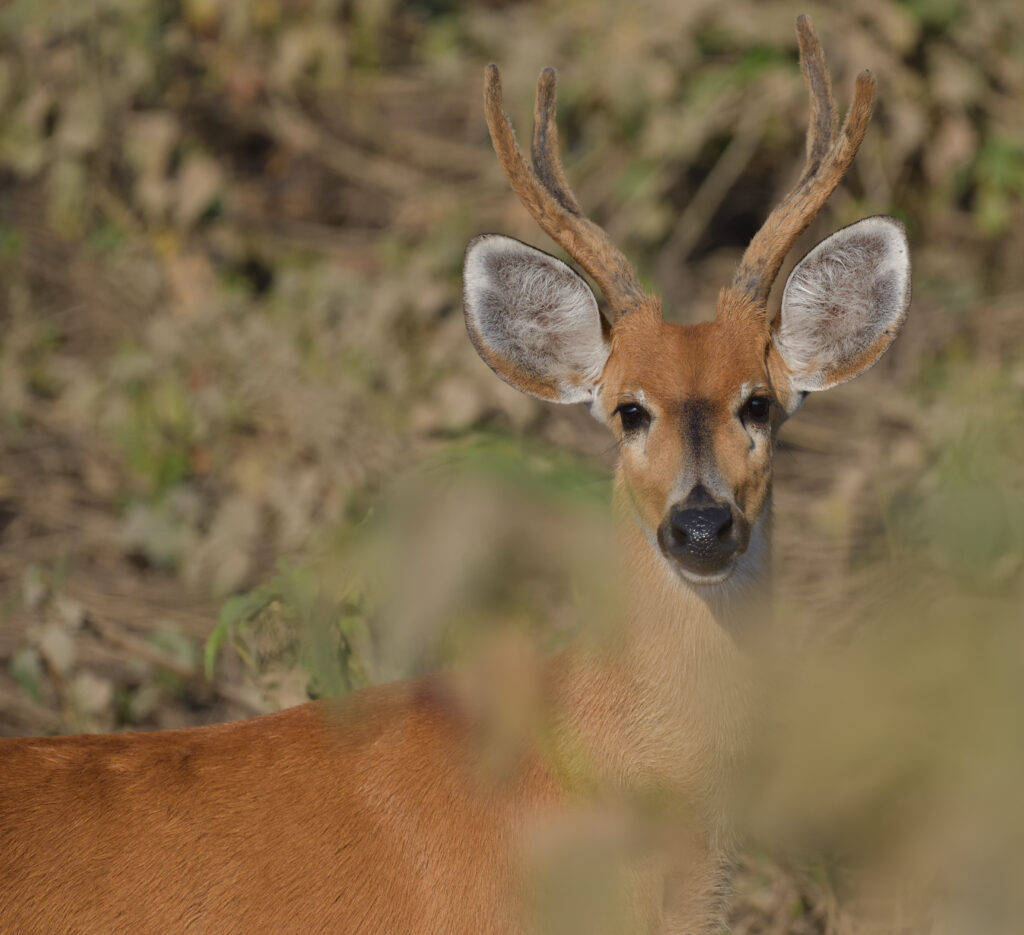

Further north along the dirt road, we spot a group of beautiful Hyacinth Macaws flying in to feed on palm fruits in the gardens of a small group of houses. Imagine having the world’s largest macaw on your garden bird list, along with Chaco Chachalaca, Chestnut-eared Araçari, Rufous Cachalote, Rufous Hornero, Creamy-bellied Thrush and Silver-beaked and Palm Tanagers!
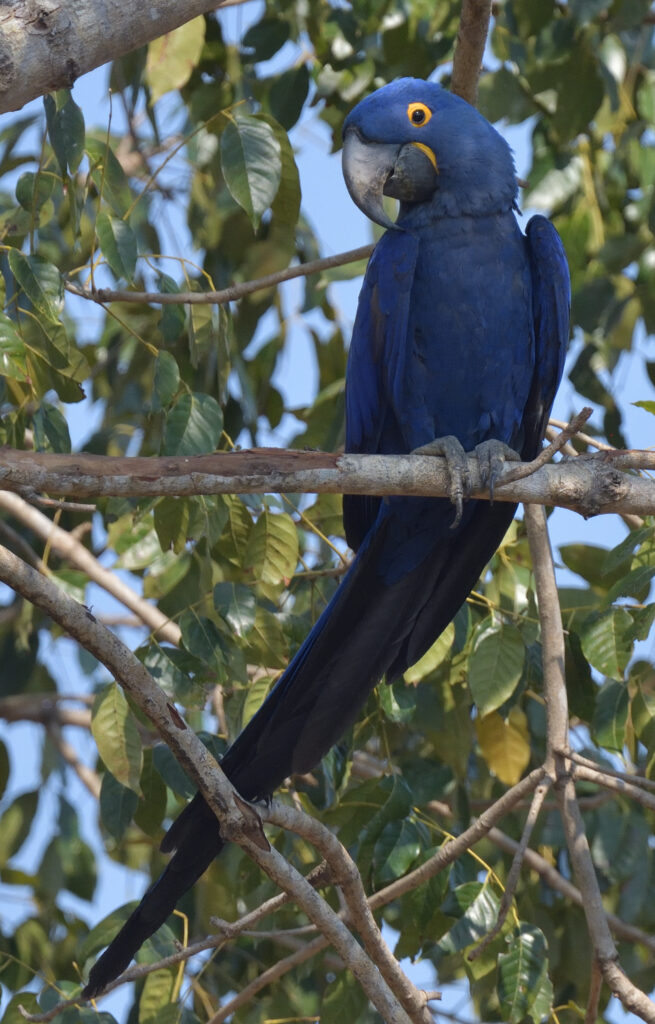
Continuing north, we turn off the Transpantaneira at a sign for Pousada Rio Claro, where the trees in the lodge grounds are home to noisy Black-hooded Parakeets, as well as Little Woodpecker, Narrow-billed Woodcreeper, Yellow-billed Cardinal, Purplish Jay and Saffron Finch. After lunch here we also spot three very smart Campo Flickers on the way back to the ‘main road’.
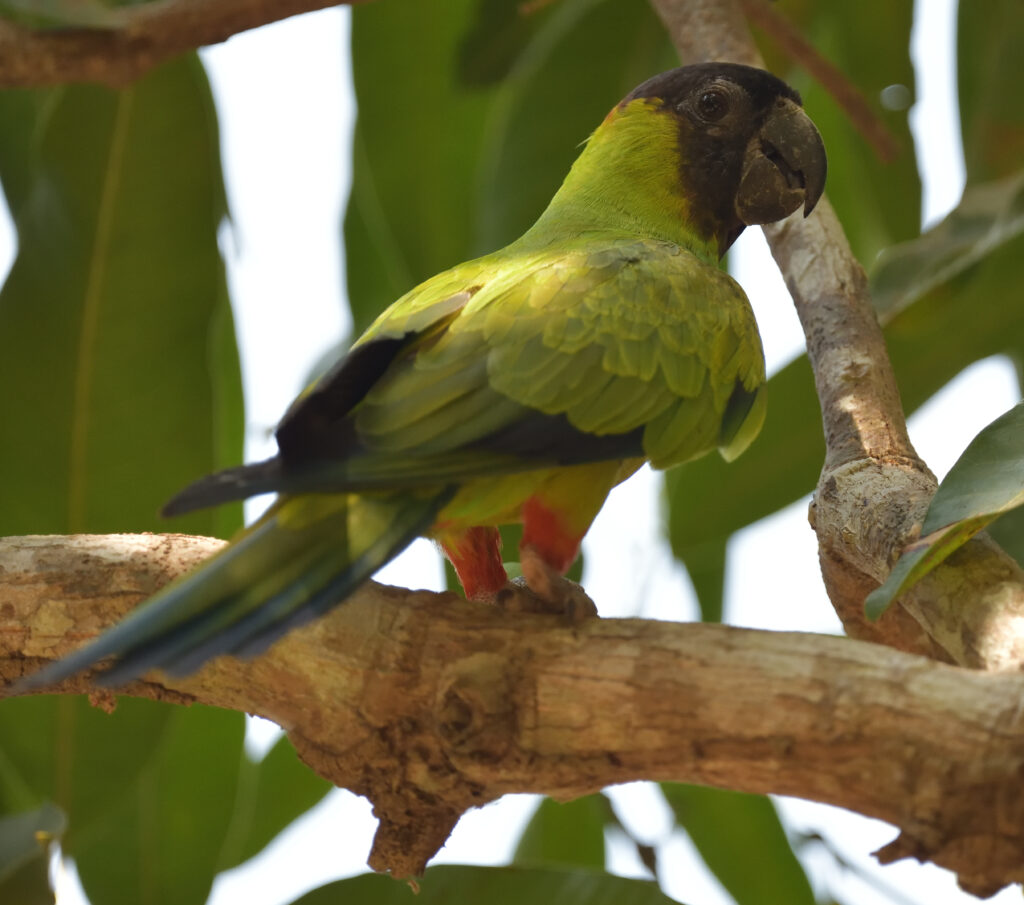
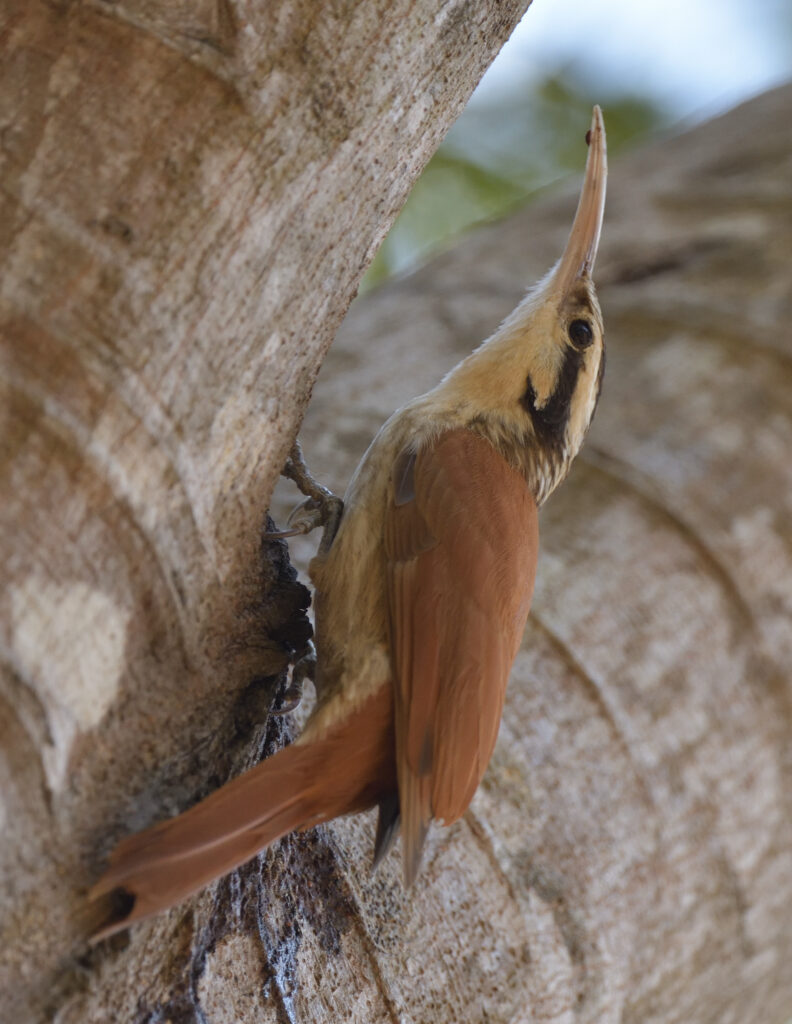
10km from the start of the Transpantaneira, we turn right into the Pousada Piuval ranch and almost immediately find three Red-legged Seriemas. These are tall, long-legged strutters, which appear to be the South American equivalent of Africa’s Secretary Bird. They also have a very unusual call, emitted from skyward pointing bills, which sounds like someone laughing heartily after hearing a hilariously good joke!
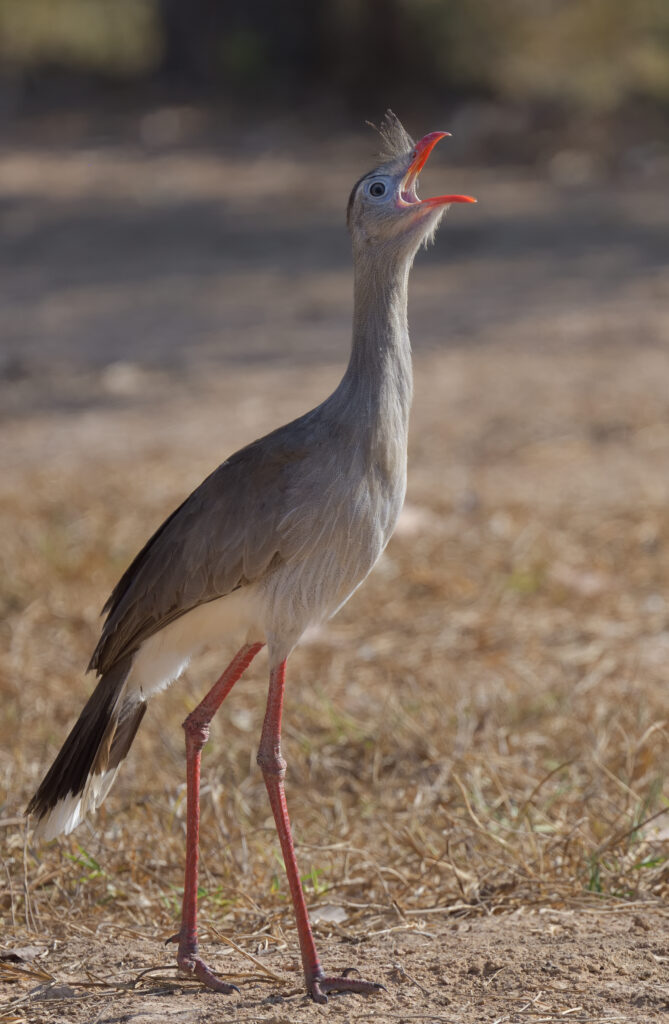
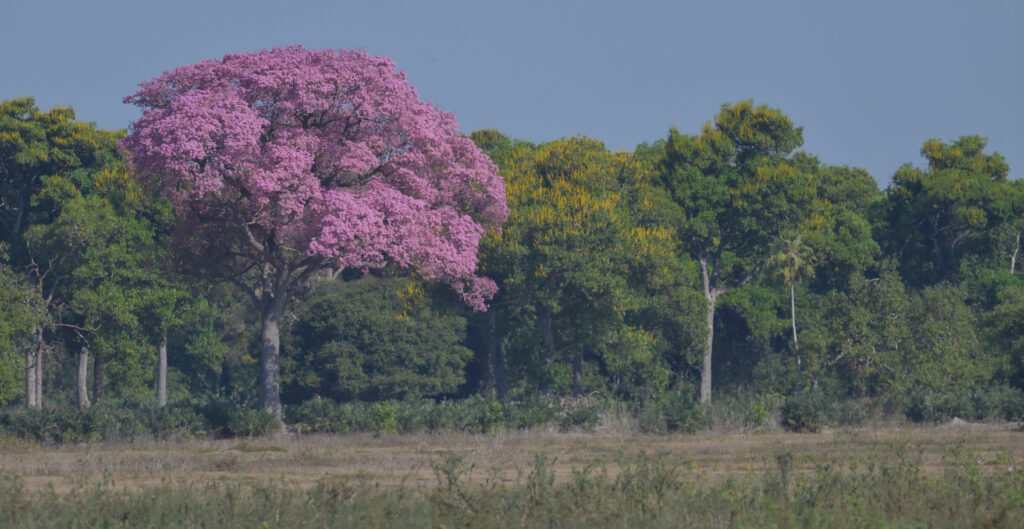
After checking in to this lovely lodge, we set off on another safari with our old driver friend Oziel, for a tour of this beautiful open landscape, scattered with forest ‘islands’ of pink and yellow-blooming Ipê trees and small concrete-like pinnacles built by millions of termites. Along a small flooded ditch, we find Bare-faced Ibis, Muscovy Ducks shining green in the sunshine, and not one but two Solitary Sandpipers! Next, we find an adult Great Horned Owl, along with a well developed fledgling, as well as another Campo Flicker, some Giant Cowbirds and Nacunda Nighthawks, a group of 17 Greater Rheas, and a pair of Burrowing Owls. Suddenly, one of the owls stands bolt upright, having spotted something, and then flies over 100 yards to dive bomb a passing Black-and-white Tegu lizard which is far bigger than the owl in both length and weight! Further sightings include Chaco Chachalaca, Bare-faced Currasow, Grey-cowled Wood Rail and Southern Lapwing, plus White-backed Stilt and White-rumped Monjita which are both new for the trip.
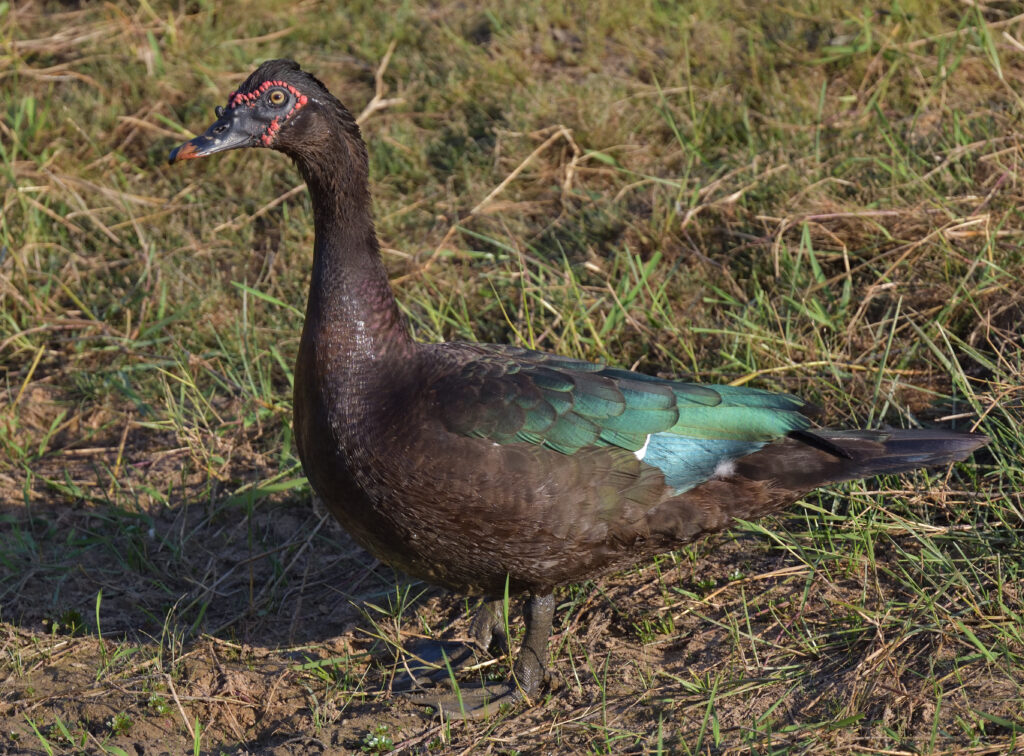
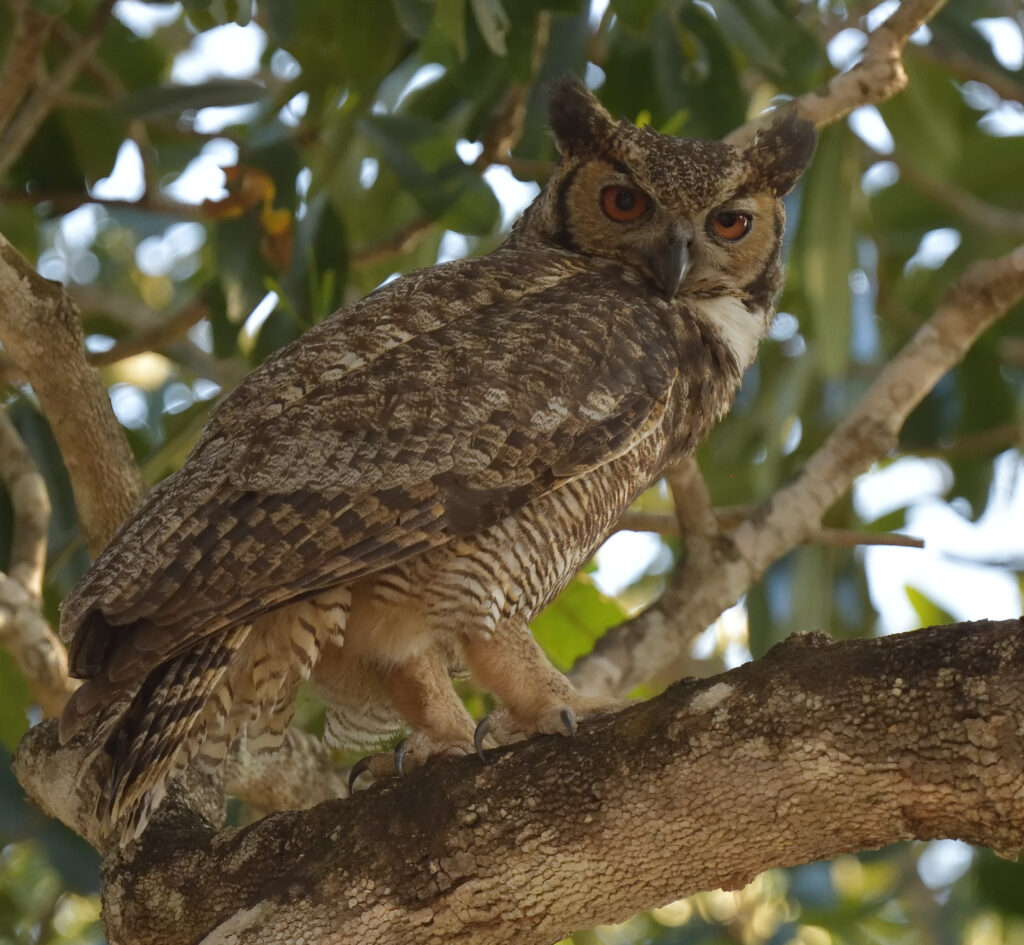
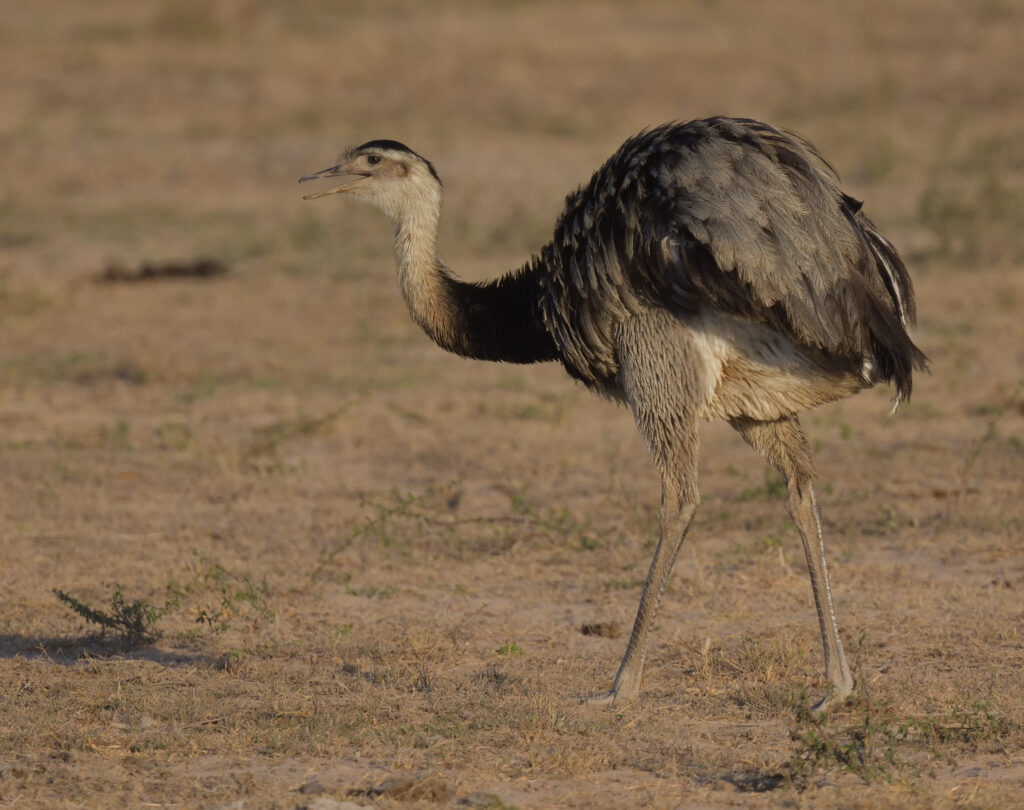
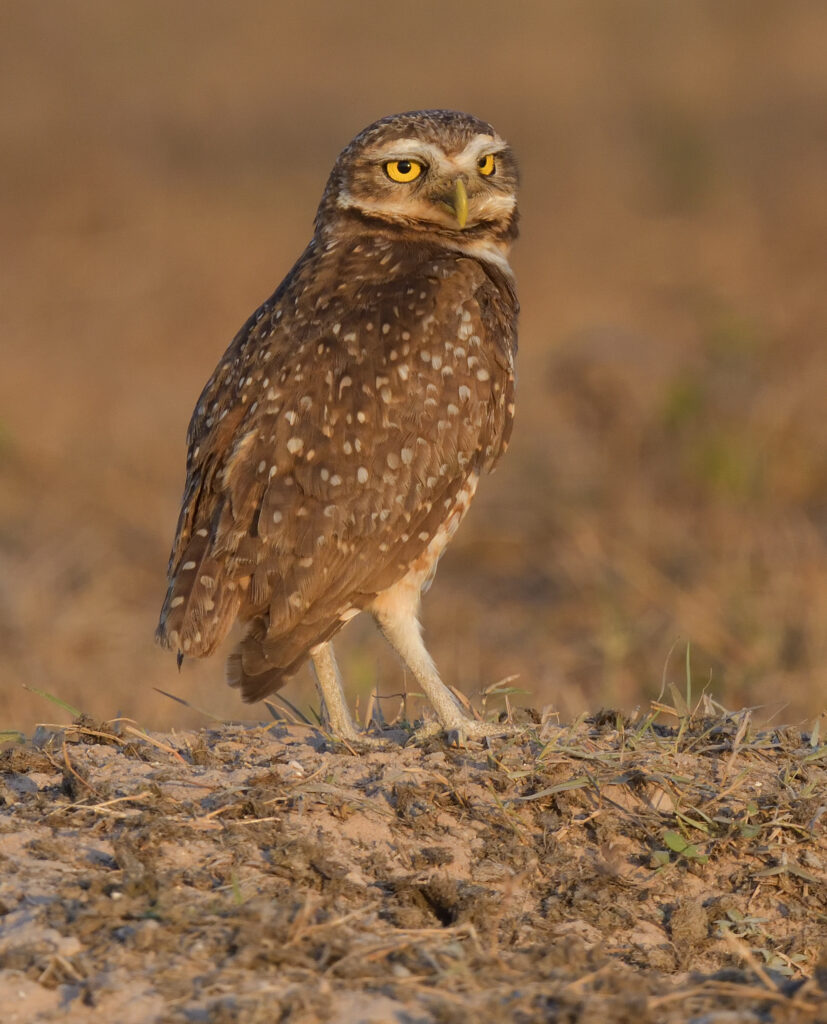
We set off at 6am on a pre-breakfast safari, with beams of sunlight filtering through a partly cloudy sky, and by 6.35am we have a Giant Anteater trundling across the savanna, with its long brush of a tail trailing behind. The timing is remarkable as there is also a Lesser Anteater, aka a Southern Tamandua, curled up asleep in a nearby tree! During the drive, we also spot Green and Bare-faced Ibises.
After breakfast back at the lodge, we set off again in the open-topped jeep at 8am, passing a small wet area not far from the lodge where a selection of waterbirds includes Large-billed Tern, Black Skimmer, Limpkins galore, White-backed Stilt, Roseate Spoonbills busy spooning, three Lesser Yellowlegs which are new for the trip and Plumbeous and Buff-necked Ibises, making this another four ibis day. Beside the water we also get close views of several Guira Cuckoos and a Crane Hawk which is another new bird for the ever-growing list.
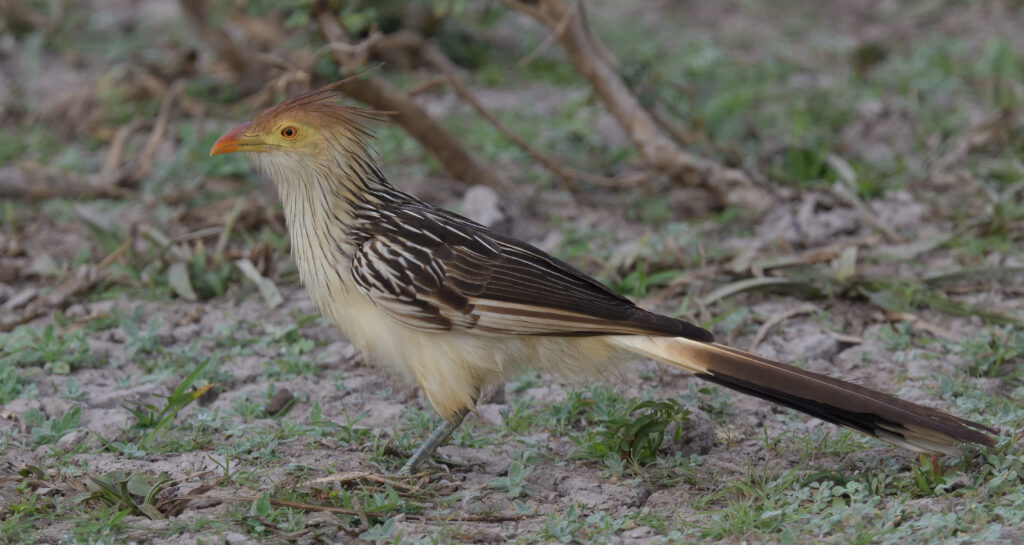
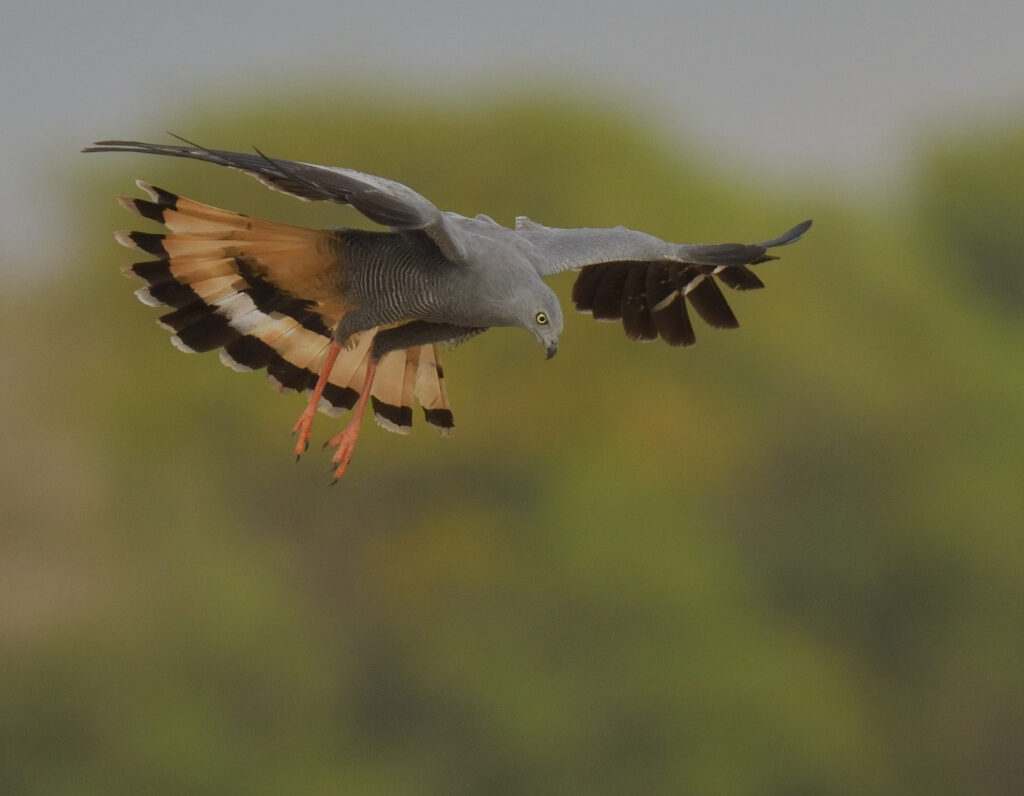
Moving on into the trees, we next find a Pale-crested Woodpecker, a female Blue-crowned Trogon and a very raucous group of Hyacinth Macaws, including a pair going in and out of a nest hole in a big old tree trunk. From here, we visit an enormous nest built by a pair of Jabiru Storks, with a young chick showing above the rim of the nest. These storks have very noisy neighbours, as dozens of pairs of Monk Parakeets have moved into the ‘basement’ of the untidy pile of sticks which must be over ten feet high from top to bottom! Not far away, we also meet a group of five Black-and-gold Howler Monkeys, comprising three black males and two golden females. Next, Marco has one last treat before lunch, as he points out a Great Potoo, sitting motionless on a tree branch, and remarkably well camouflaged thanks to the cryptic patternation in its plumage which looks exactly like the tree bark it’s perched on.
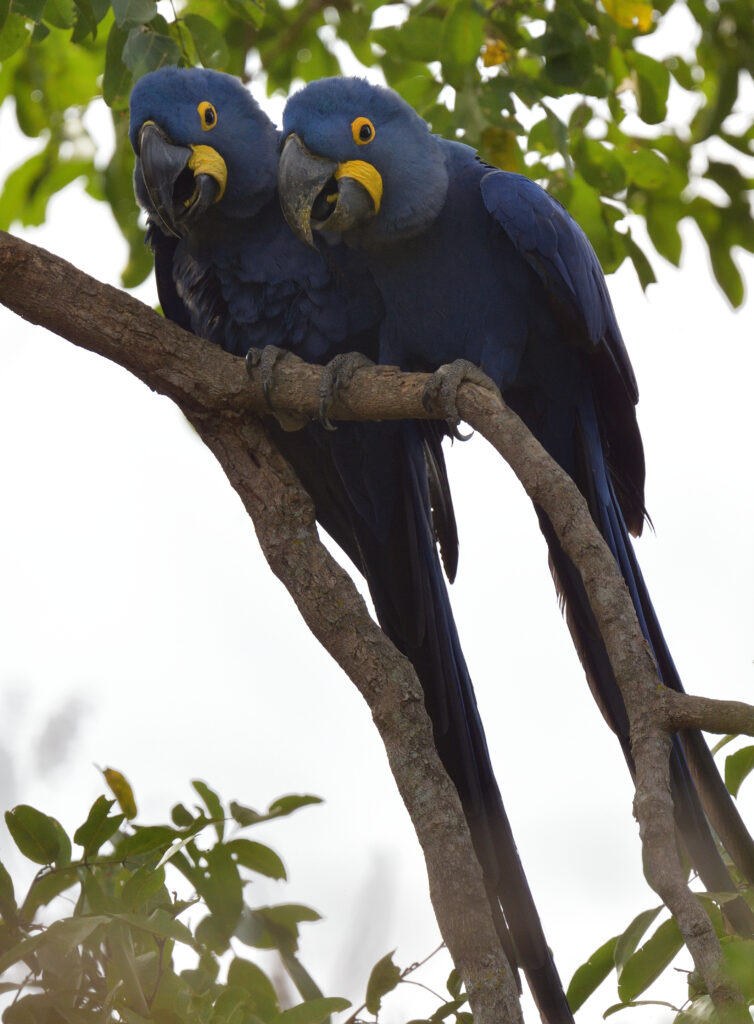
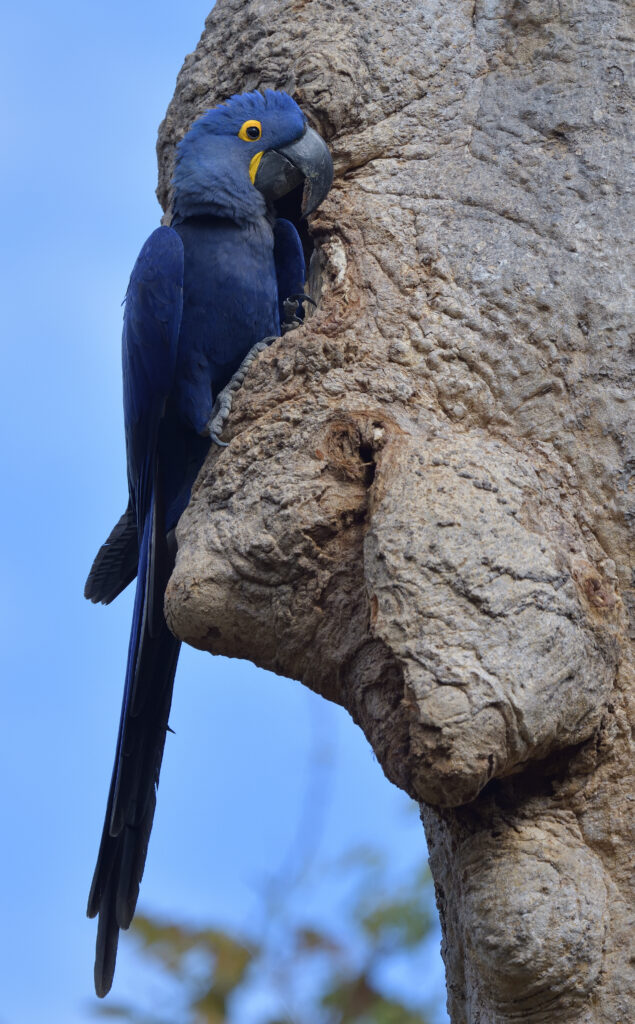
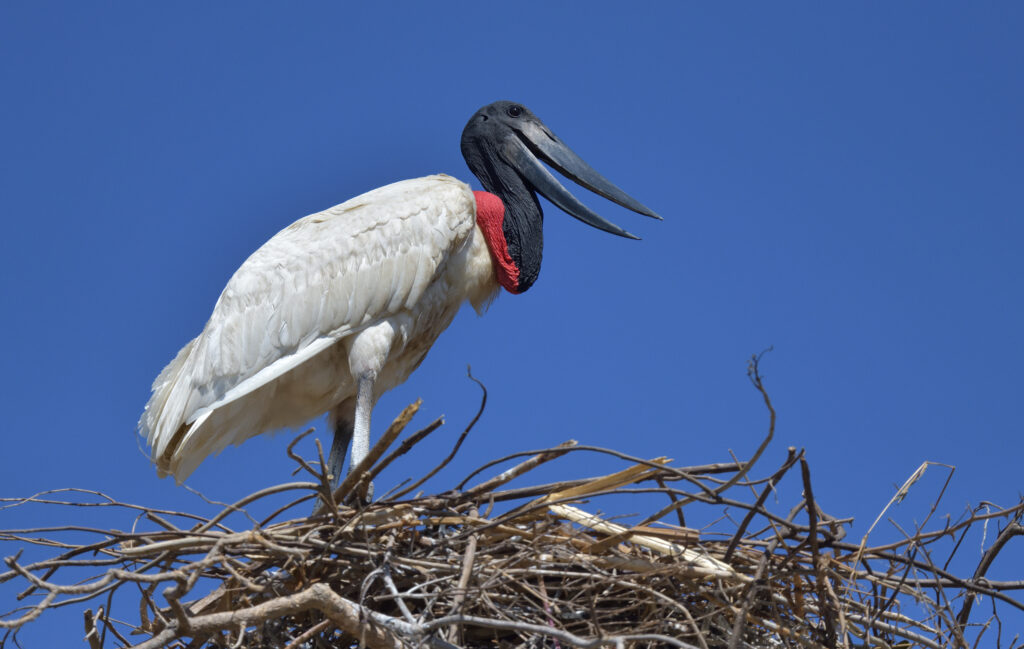

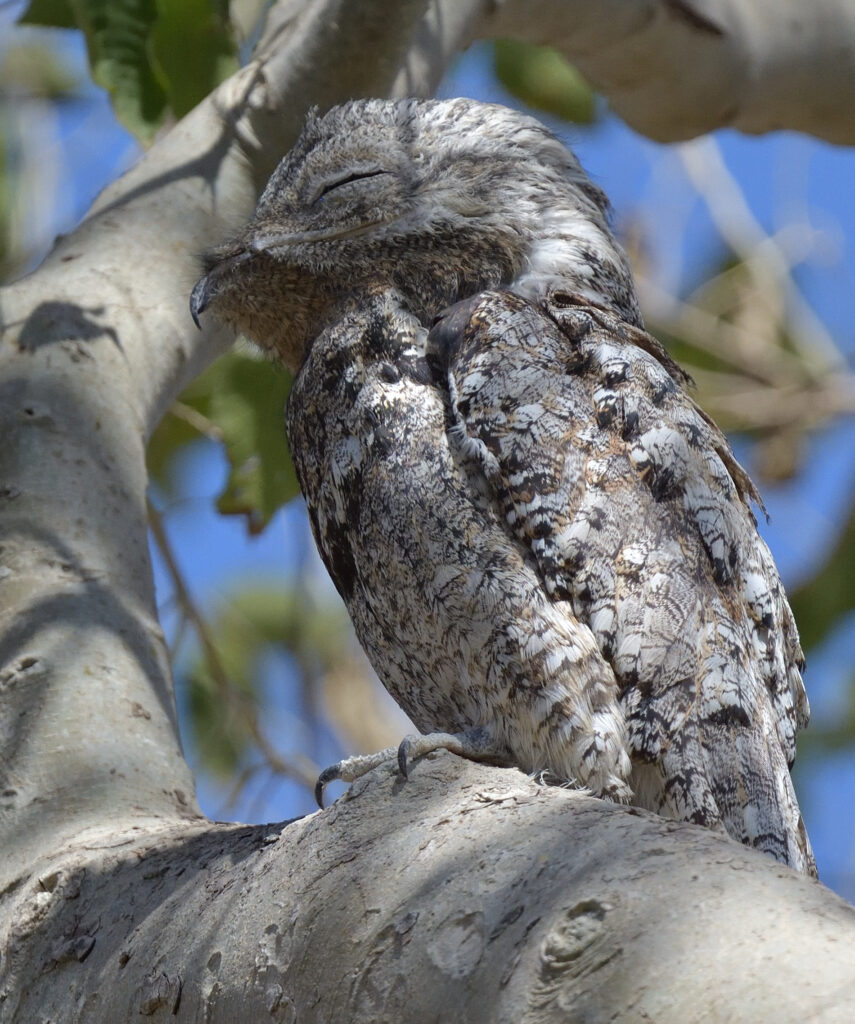
At 3pm, we set off again in the jeep. Notable sightings this afternoon begin with a Bare-faced Ibis not far from the lodge, followed by Rufous Casiornis and then Rufous Cachalote. Next, we find a striking male Crimson-crested Woodpecker at its nest hole, and then a Turquoise-fronted Parrot and a pair of mating Black-and-white Tegu Lizards which are rudely interrupted by our passing, whereupon the smaller female slowly slinks away, and then the male charges off in a huff at breakneck speed! A Savanna Hawk poses on a nearby fence post, and we also get very close views of two more Red-legged Seriemas. Next, a small waterhole produces a Sunbittern, with a troop of Hooded Capuchins feeding in the adjacent trees. Finally, on the way back to the lodge we spot a Red Brocket Deer, some Yellow-chevroned Parakeets and another White-rumped Monjita.
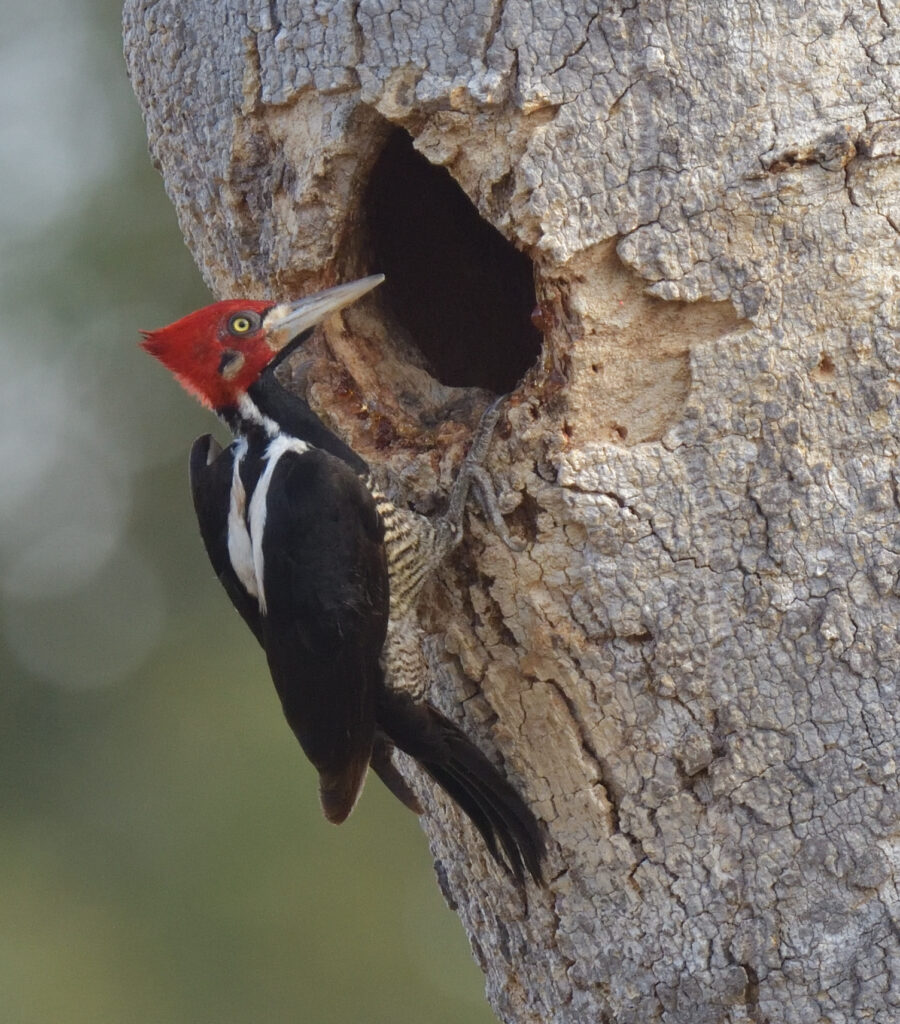
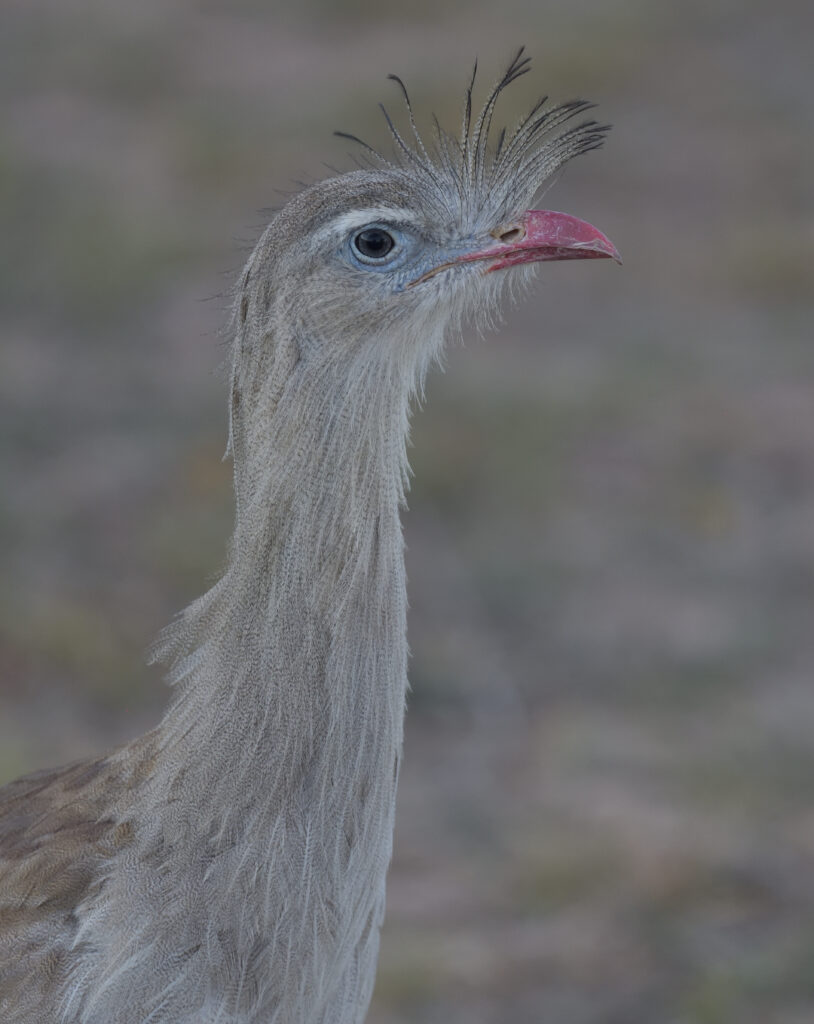
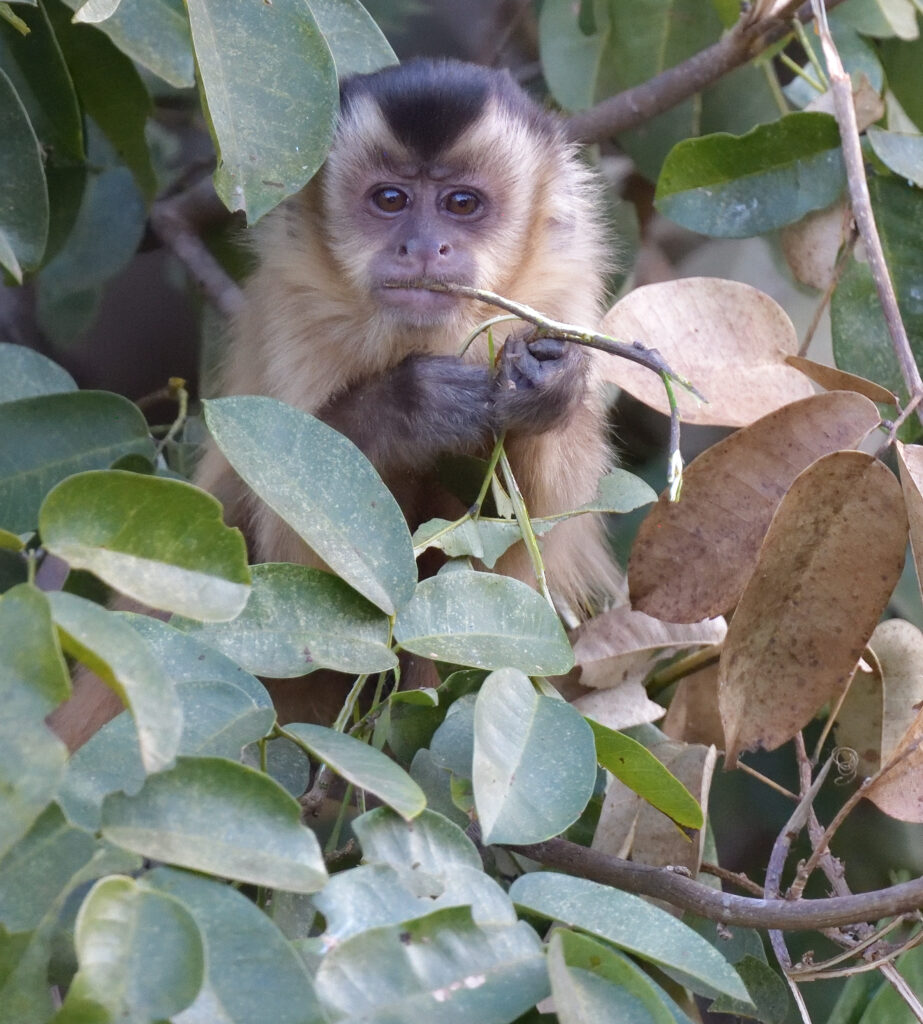
After dark, we get a room visit from a Snouted Tree Frog, which according to the guide book is, ”found in bathrooms and sinks”, and is called the Bathroom Tree Frog in Portuguese!
At 6am this morning, just after first light, we make a bee line in the jeep for an area with the densest concentration of termite mounds, hoping for better views of a Giant Anteater and we are not disappointed with the outcome. Ten minutes from the lodge, there it is, a full grown six foot long giant, snuffling along with its long slender snout and trailing a long thick brush of a tail, just fifty yards away. With such an odd-looking body, you just couldn’t make it up! During the anteater watch, we also spot a pair of Aplomado Falcons. 45 minutes later, it’s time to leave this amazing creature, with a two foot long sticky tongue and no teeth, in its endless search for termites, and head back to the lodge for our own breakfast!
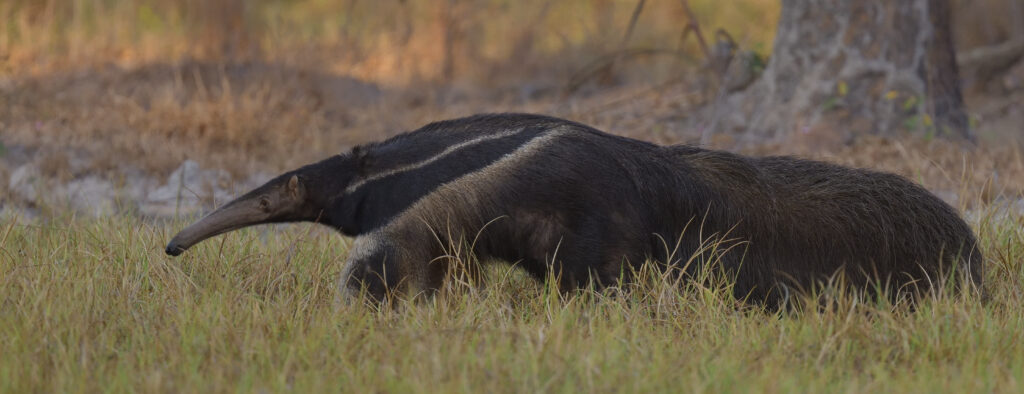
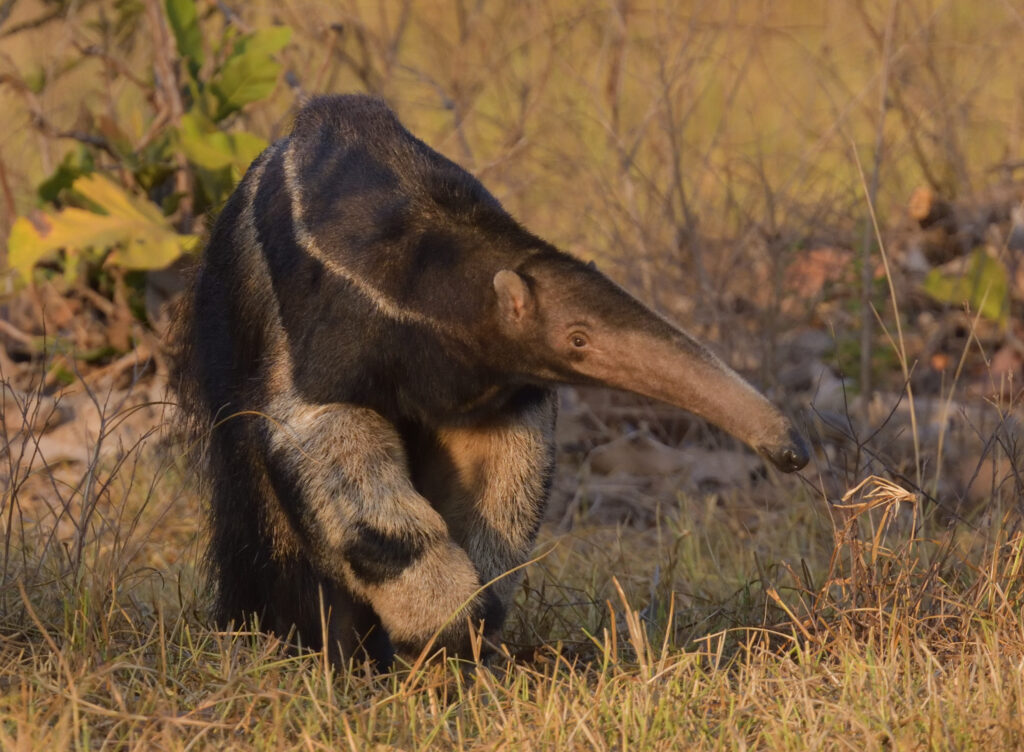
At 8.10am we drive off again, spotting Green and Bare-faced Ibises, followed by a male Lineated Woodpecker and a Sunbittern in flight, revealing the stunning ‘butterfly’ pattern on its wings. Further sightings include a couple of Grey-cowled Wood Rails, a Snail Kite, a Pale-legged Hornero which is new for the trip, and family groups of Black-tailed Silvery Marmosets and Black-and-gold Howler Monkeys.
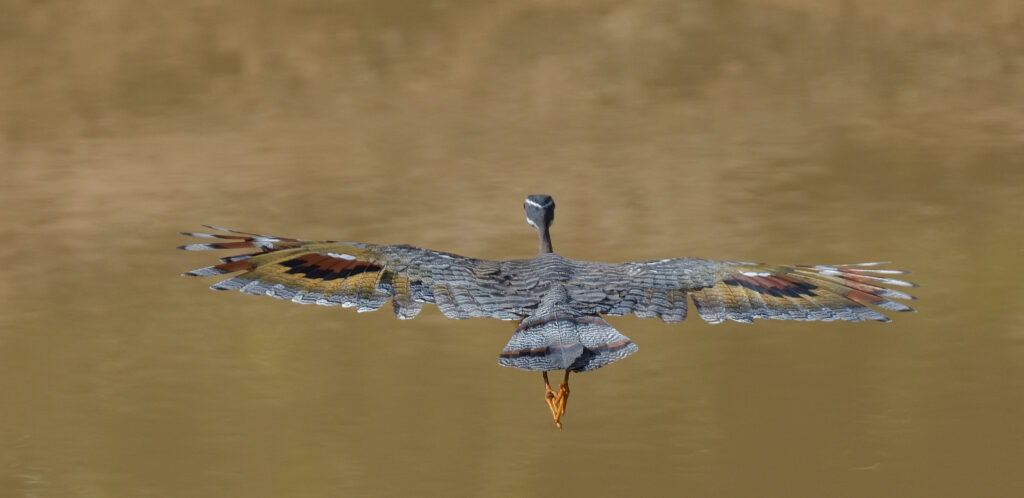
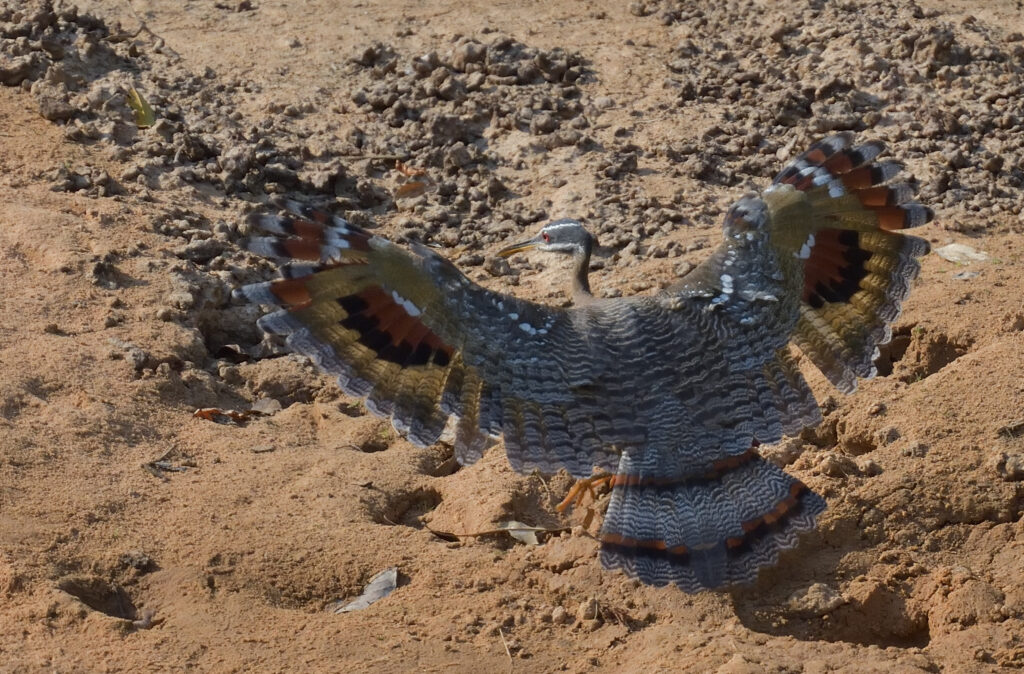
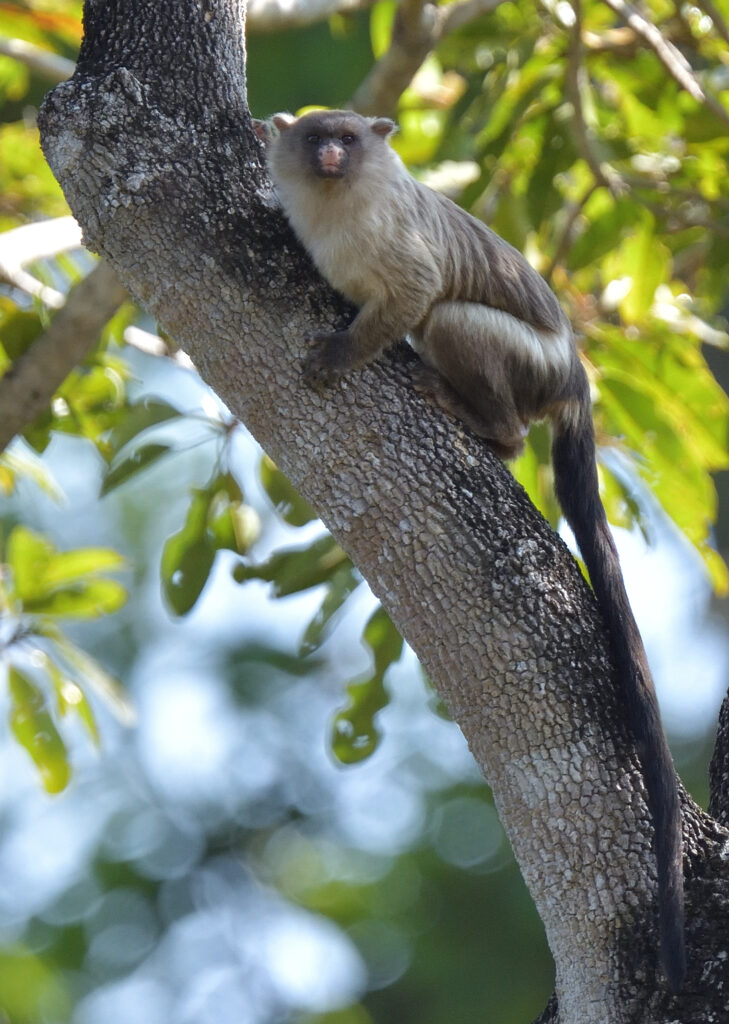

After lunch, the resident pair of Red-legged Seriemas strut right past our rooms and even step onto the tiled walkway outside the terrace of the lodge! The Capybaras are equally confiding, while snoozing on the lawn outside our rooms and even walking beside the swimming pool! What a lovely place this is.
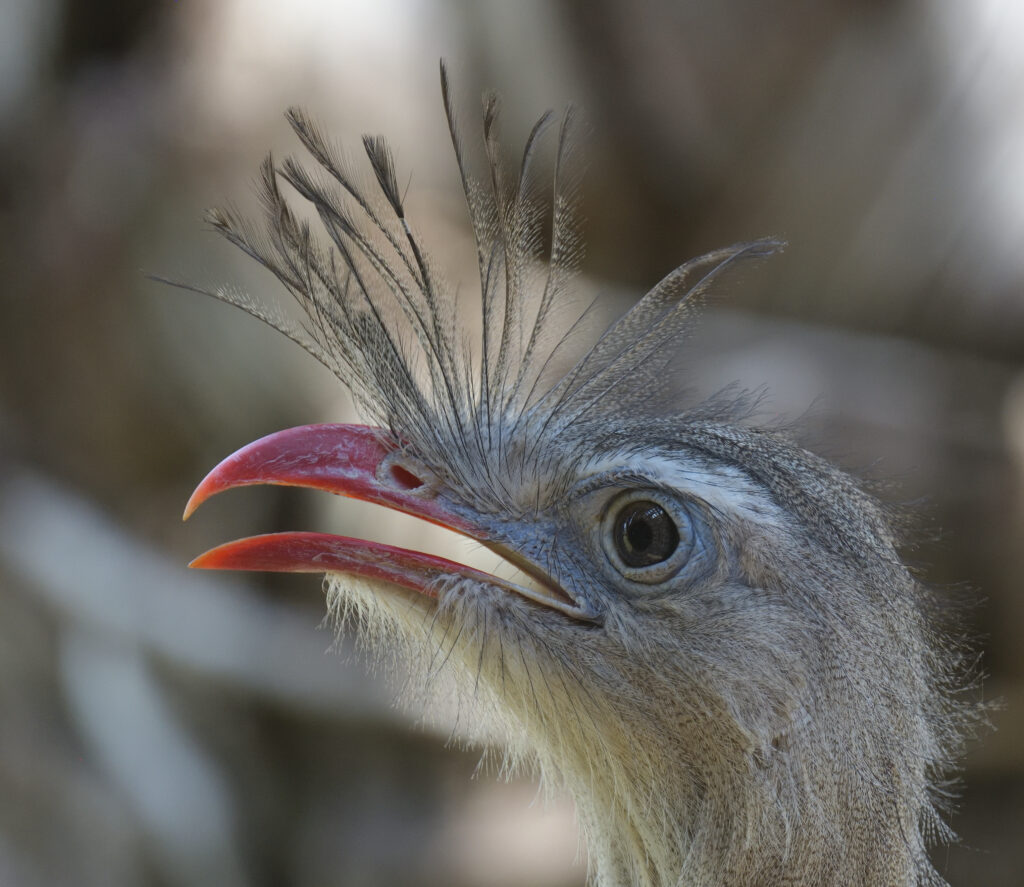
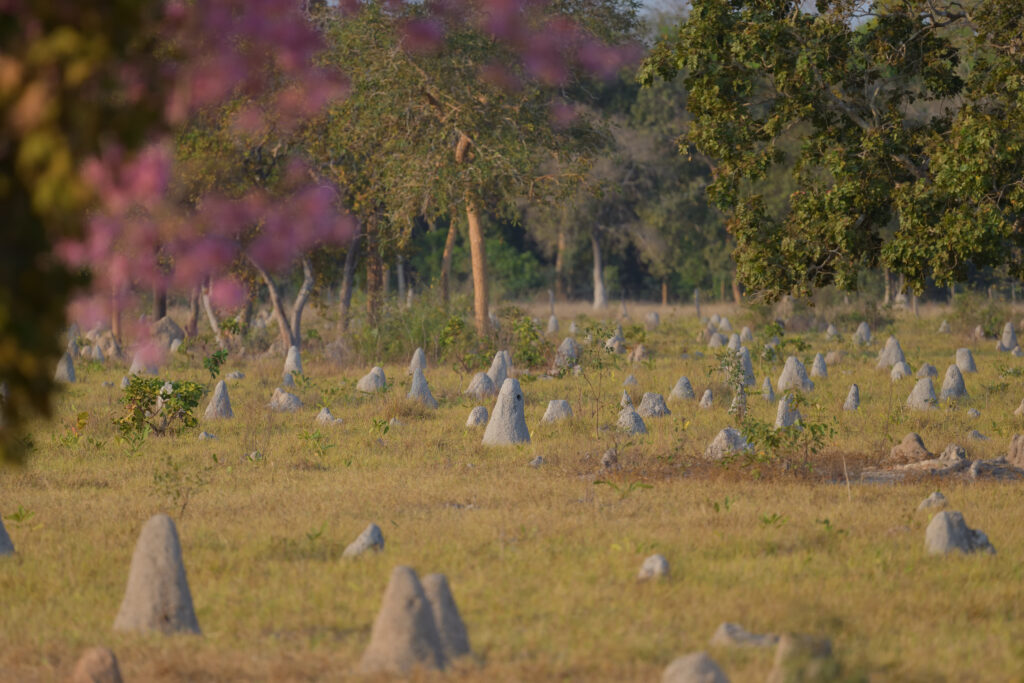
This afternoon at 3pm, we have one last jeep safari, starting with Chalk-browed Mockingbird, Vermillion Flycatcher, Chestnut-bellied Guan and White-throated Piping Guan. Further from the lodge, we also get closer views of White-rumped Monjitas, enjoy more views of Hyacinth Macaws and find the handsome Chotoy Spinetail which is new for the trip.
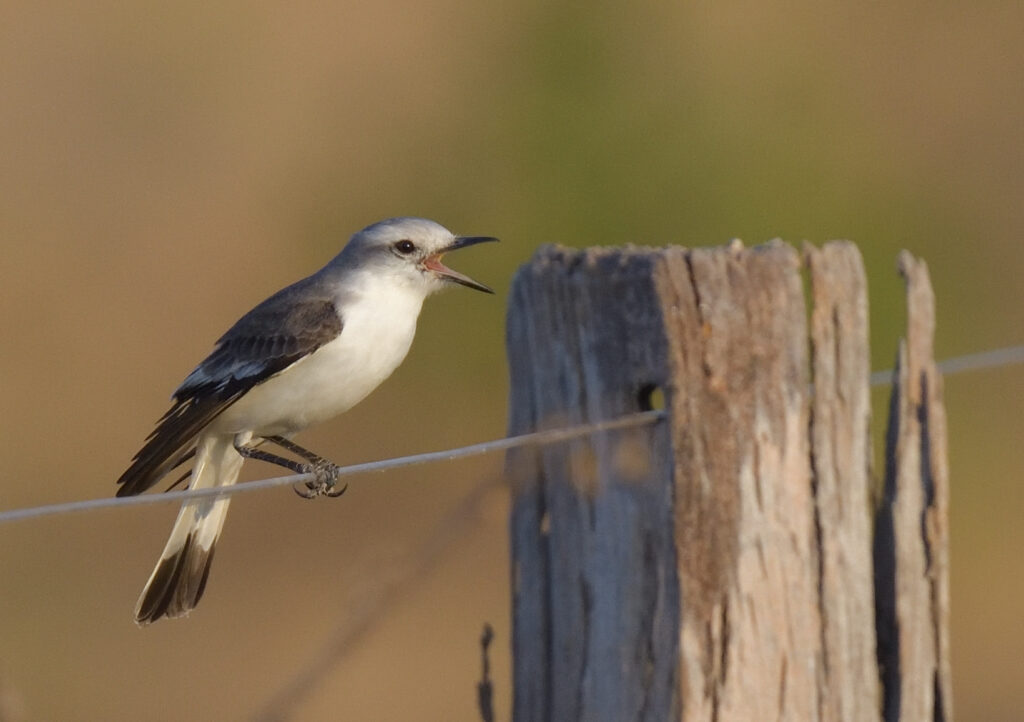
Today, we leave Pousada Piuval at first light, with a super orange glow above the horizon to the east, as we head back to Cuiabá airport and sadly say goodbye to Marco who had been such a fun guide. From Cuiabá we take a flight to Foz de Iguaçu, via São Paulo, where new guide Marcelo is there to meet us. From the airport, we cross the border into Argentina and check in to the nearby Hotel Selva de Laurel, not far from Puerto Iguazú.
This morning, we drive to the nearby Iguazú National Park, where early birds are Scaley-headed Parrots, Green-headed Tanagers and a tuneful Chopi Blackbird. Once inside the park, we take a narrow gauge train to visit Iguazú Falls, the world’s largest waterfall system! The views of the high and mighty falls, consisting of hundreds of cascades spanning almost two miles wide, are absolutely amazing, especially with hundreds of circling Black Vultures. The highlight is the ‘Devil’s Throat’, a narrow chasm where the Rio Iguazú plunges over 350 feet, throwing clouds of spray high into the air. Along the walkways between the various cascades, we meet smart Plush-crested Jays, a singing House Wren, a rare Black-fronted Piping Guan, and numerous very tame Coatis around our ankles! With water falling also from the sky today, this must have been the wettest place in Argentina!
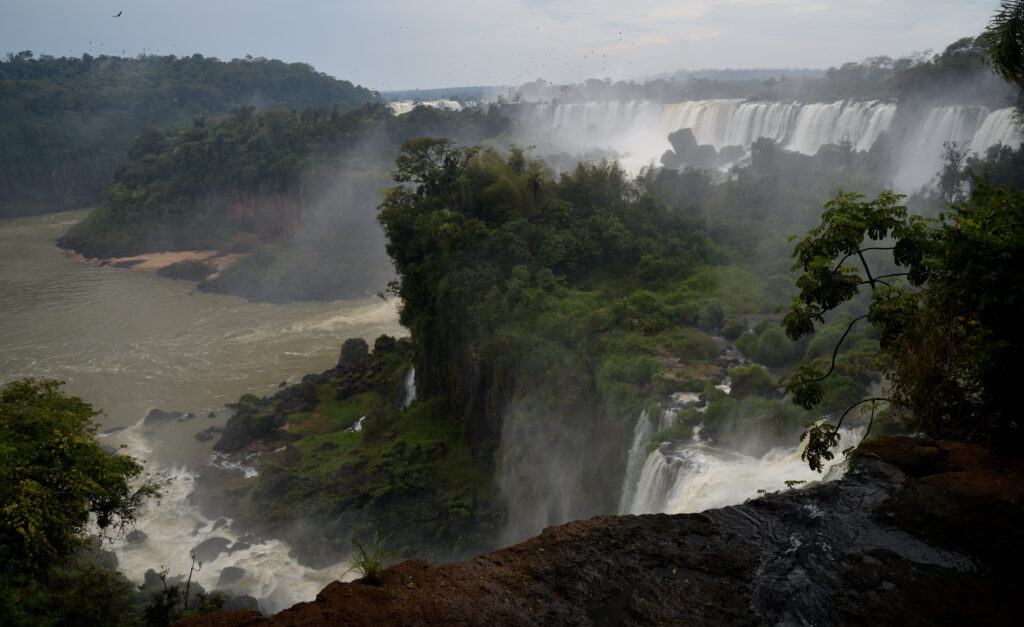
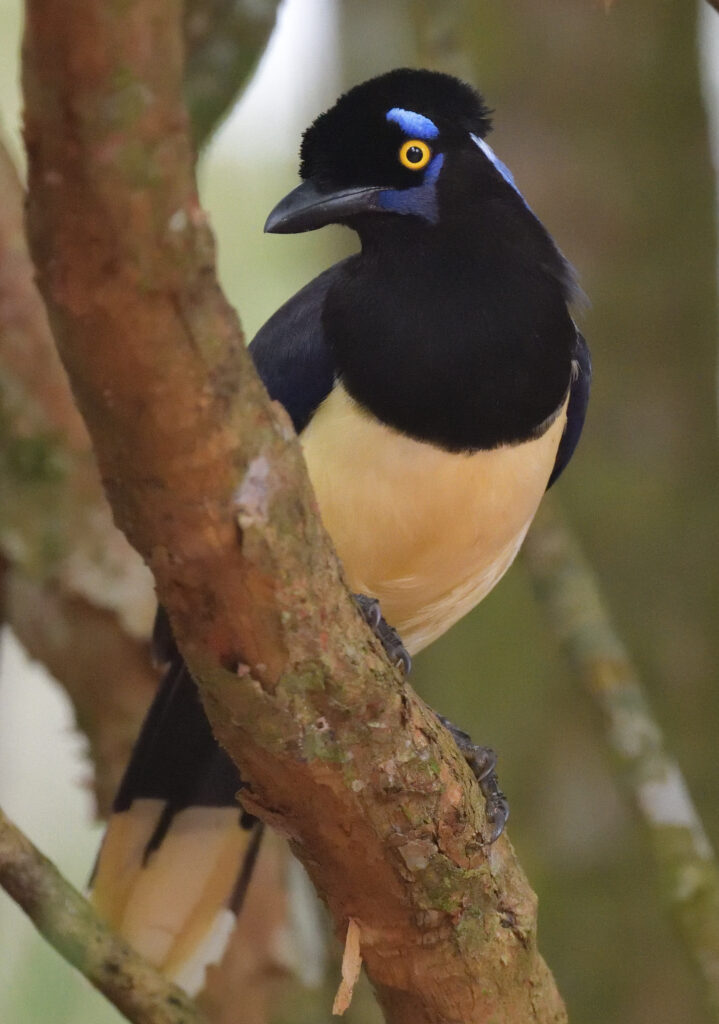
During lunch back at the hotel, we watch a pair of nest-building Chestnut-bellied Euphonias outside the dining room and then spend the afternoon exploring the local area, where a string of new birds includes, in order of appearance, Eared Dove, Pied-billed and Least Grebes, Blue Dacnis, Rufous-collared Sparrow, Brazilian Teal, Common Gallinule, Social Flycatcher, Ruby-crowned and Guira Tanagers and Golden-crowned Warbler, despite the dull overcast conditions with sporadic showers and rumbles of thunder.
After heavy rain in the night, we set off in the dark at 6am and drive to Urugua-i Provincial Park, with a stop at a ‘gas station’ for breakfast. It’s 8am by the time we arrive at the park entrance where we spot several birds like Black-goggled Tanager, Surucua Trogon, White-browed Warbler, White-spotted Woodpecker, a tiny male Ochre-collared Piculet and a flycatcher called a Sibilant Sirystes, and all new for the trip. Following a trail through the reserve, more new birds include Ochre-breasted and Buff-browed Foliage Gleaners, Swallow Tanager, Variable Antshrike, Rufous-capped Spinetail, Riverbank Warbler, Bertoni’s Antbird, an Ornate Hawk Eagle and a pair of Robust Woodpeckers, in addition to previously seen birds like Black-fronted Piping Guan, Lineated Woodpecker and Tropical Parula.
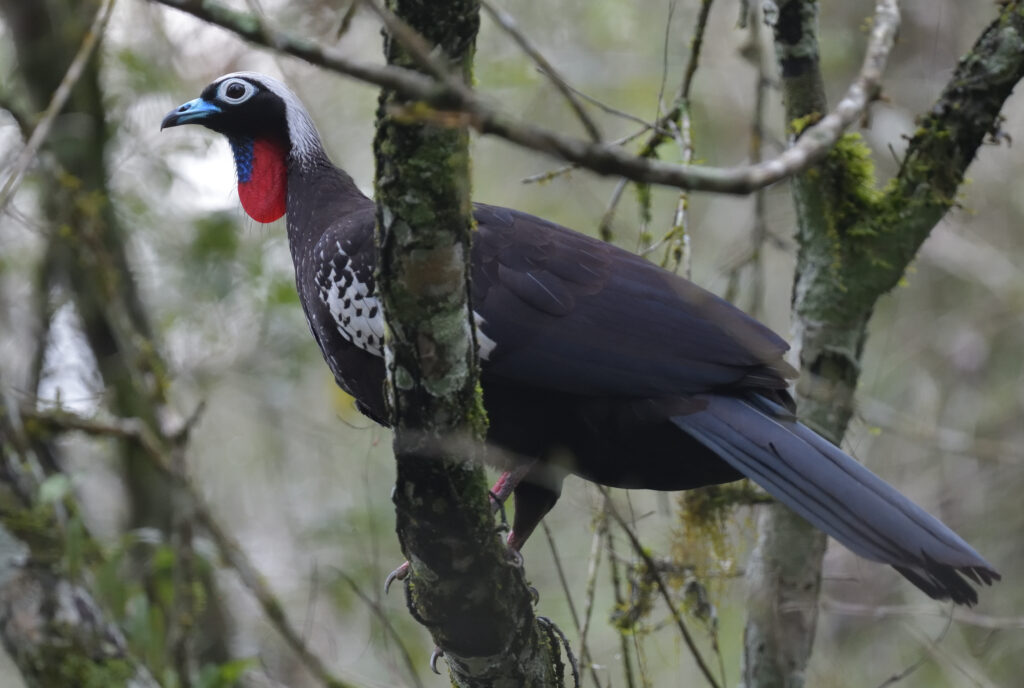
After lunch back at the hotel, we visit the nearby ‘Hummingbird Garden’ in Puerto Iguazú. This small urban back garden buzzes with the frenetic activity of hundreds of hummingbirds, at such close range that one can feel the air vibrate as they whizz past one’s head, twittering as they go! The action is mind-boggling and keeps us enthralled for over an hour and a half, while we marvel at very close views of seven different species of ‘hummers’. The most numerous of these tiny dazzling gems is the Versicoloured Emerald, alongside Black Jacobin, Violet-capped Woodnymph, Planalto Hermit and Gilded, Swallow-tailed and White-throated Hummingbirds. Other garden birds here include Eared Dove, Bananaquit, Blue Dacnis, Sayaca Tanager, Purple-throated Euphonia, Red-rumped Cacique, Variable Oriole and the eye-catching Yellow-fronted Woodpecker. What a spectacular show that was.
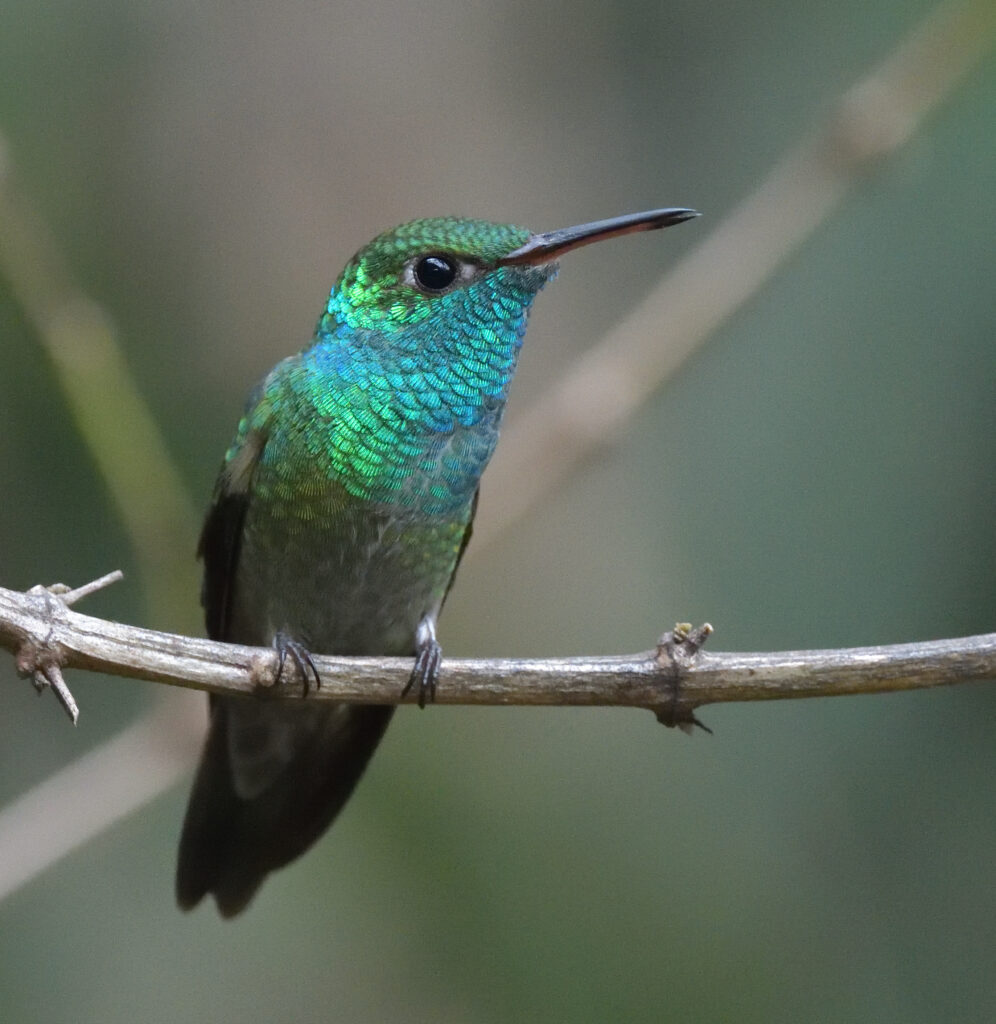
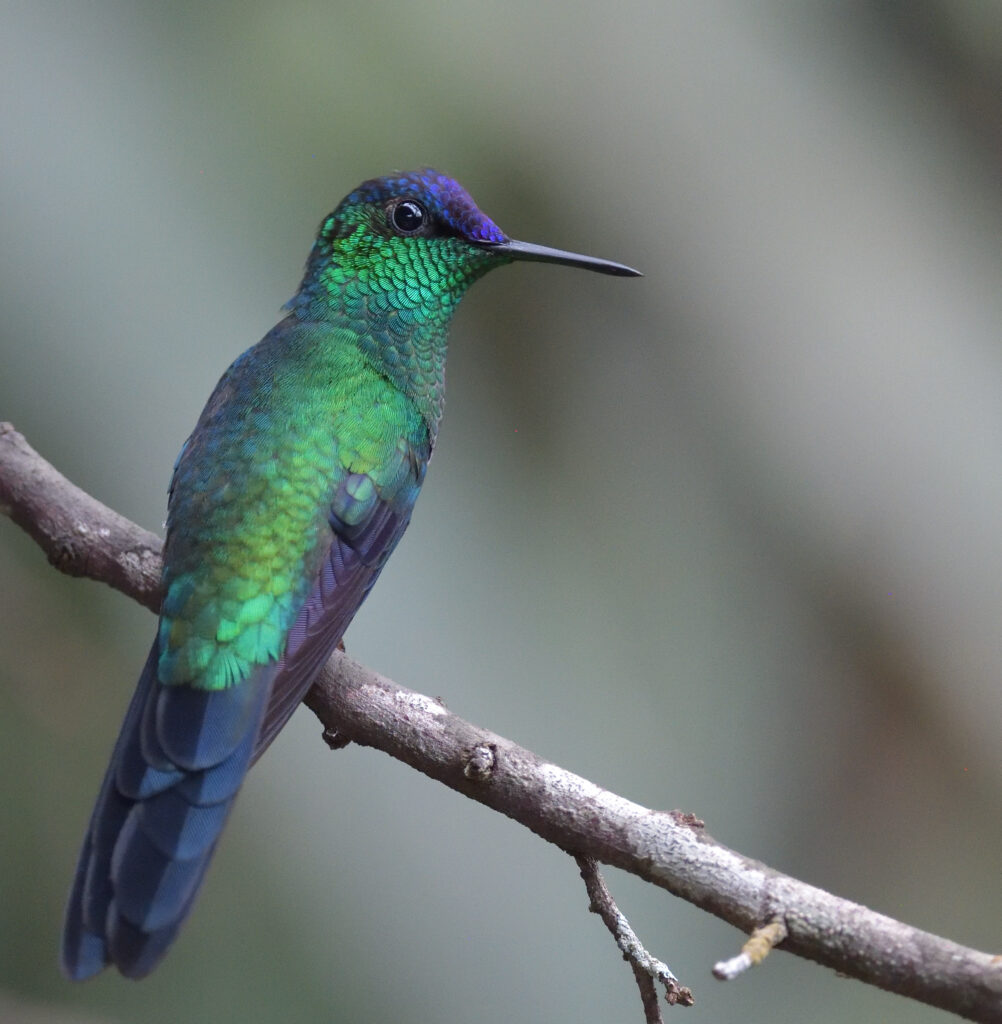
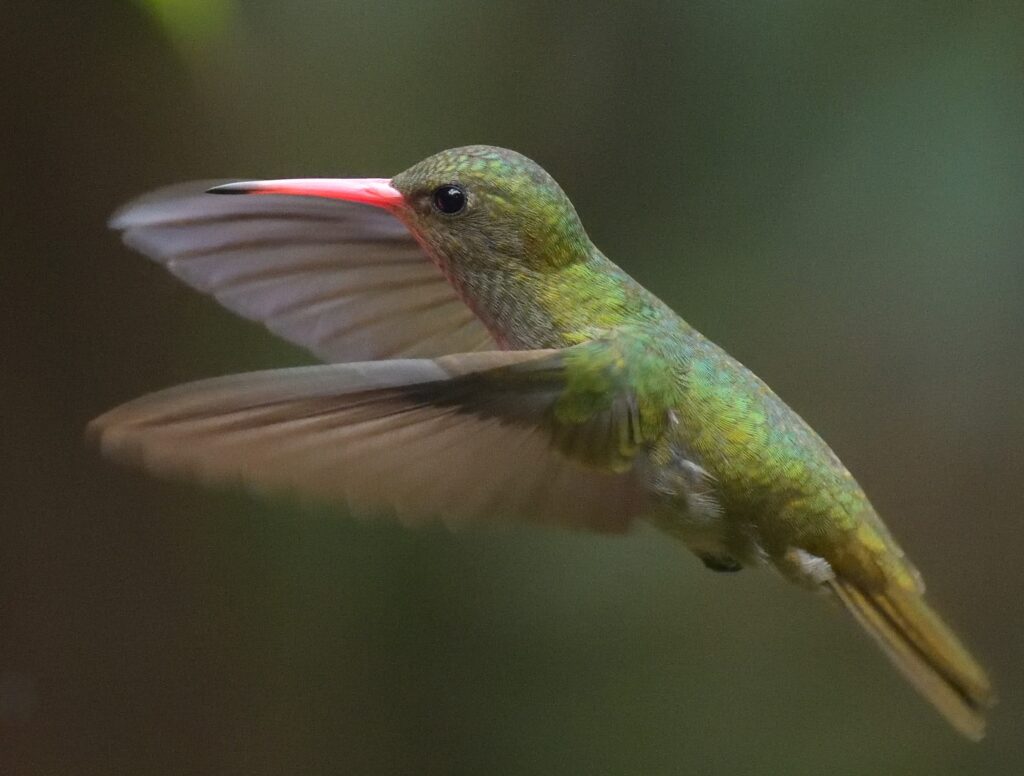
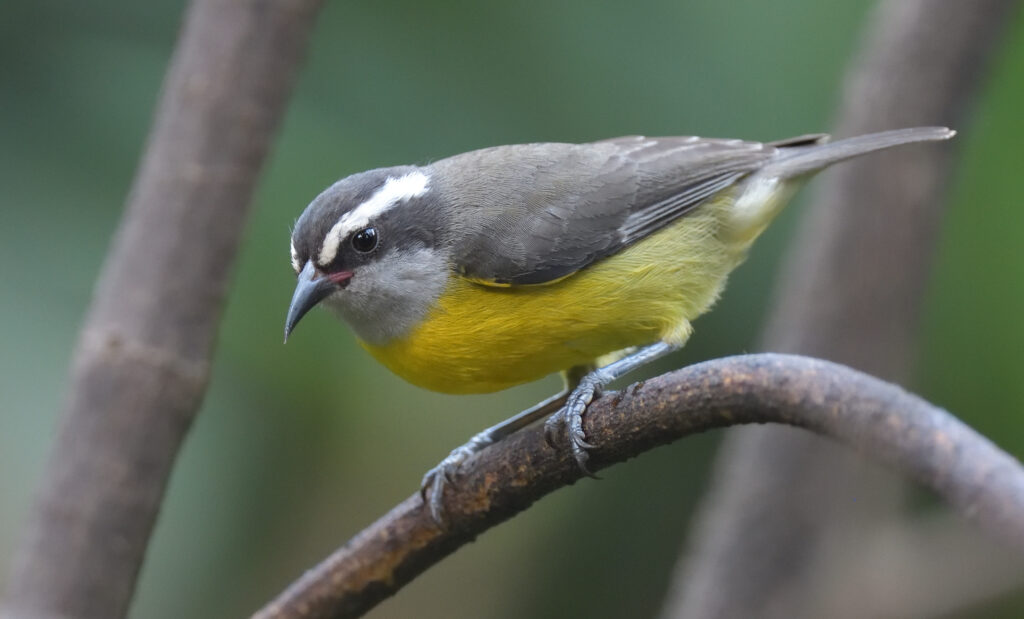
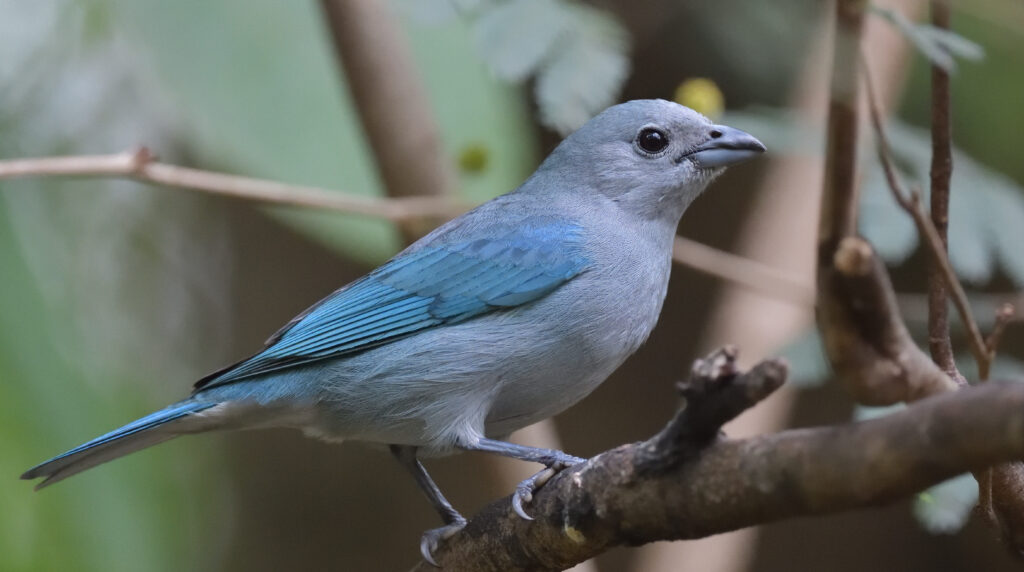
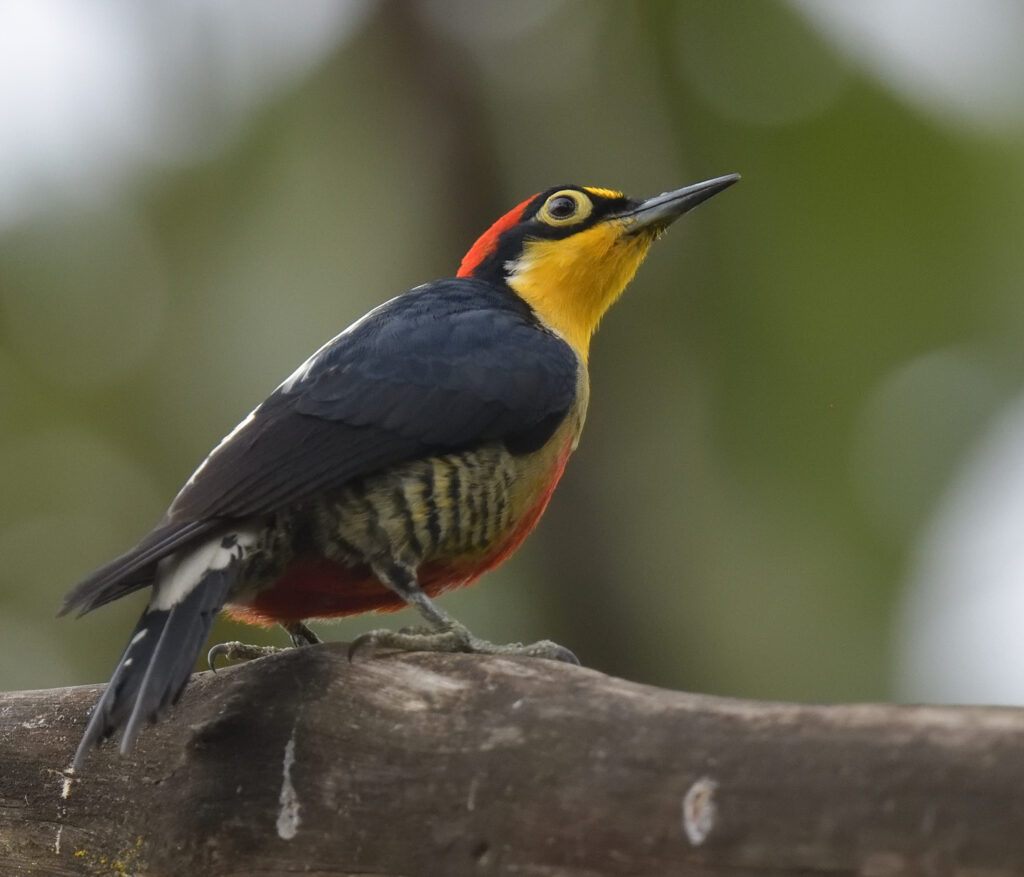
It’s our last day in the field and there’s a beautiful clear blue sky, ideal for sightseeing, so we begin with a visit to the three frontiers viewpoint, overlooking the confluence of the Paraná and Iguazú rivers, where we look north from Argentina across the waters, towards Brazil to the east and Paraguay to the west, where we spot a Great Egret on the riverbank and two Southern Lapwings flying from Paraguay across to Brazil. From here, we cross the river back into Brazil, spotting a House Sparrow on the Argentinian side and a Burrowing Owl on a grass verge right next to the road on the Brazilian side!
We spend the rest of the morning viewing the magnificent Iguaçu Falls from the Brazilian side which gives a much wider panorama than from Argentina, stretching across 260° of cliffs amongst the lush green rainforest, and the cascades look particularly stunning with the sun behind us, creating complete rainbows where spray rises from the river. No wonder this is one of the world’s New Seven Wonders of Nature. Jostling our way through the vain hordes taking selfies in ridiculous poses, Anny drops her lens cap, which lands on a rock beside the torrent about twelve feet below the walkway. Marcelo summons the Fire Brigade, whereupon a helmeted Bombeiro, laden with mountaineering clips, lowers himself on a rope to retrieve it! Standing at the end of the walkway, drenched in cool spray, below such a powerful cascade that it creates its own wind, is an exhilarating experience. Besides these spectacular falls, there are Great Dusky Swifts, and a fantastic diversity of colourful butterflies, many of which hitch rides on our hats!
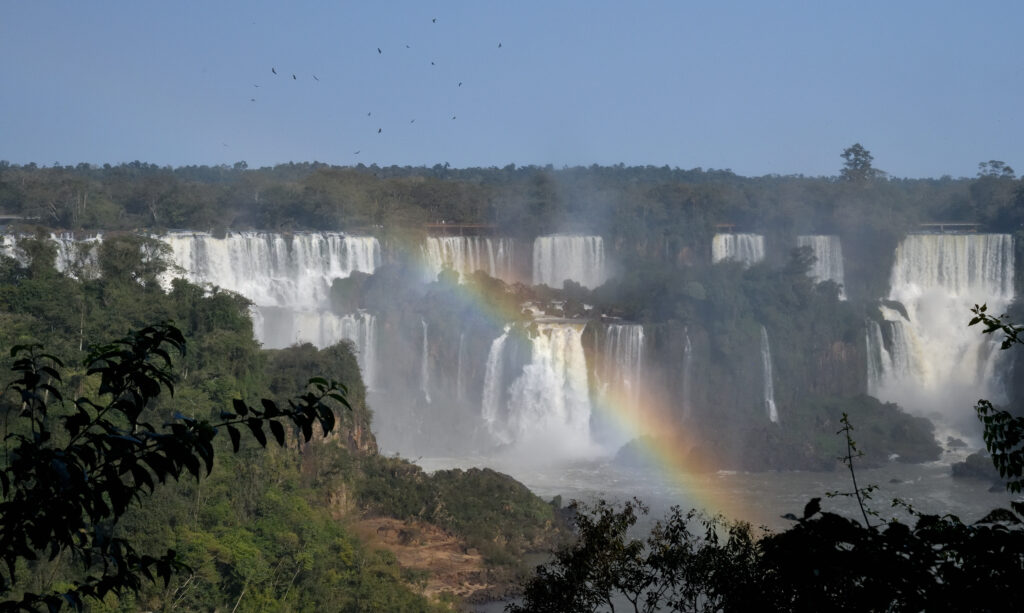

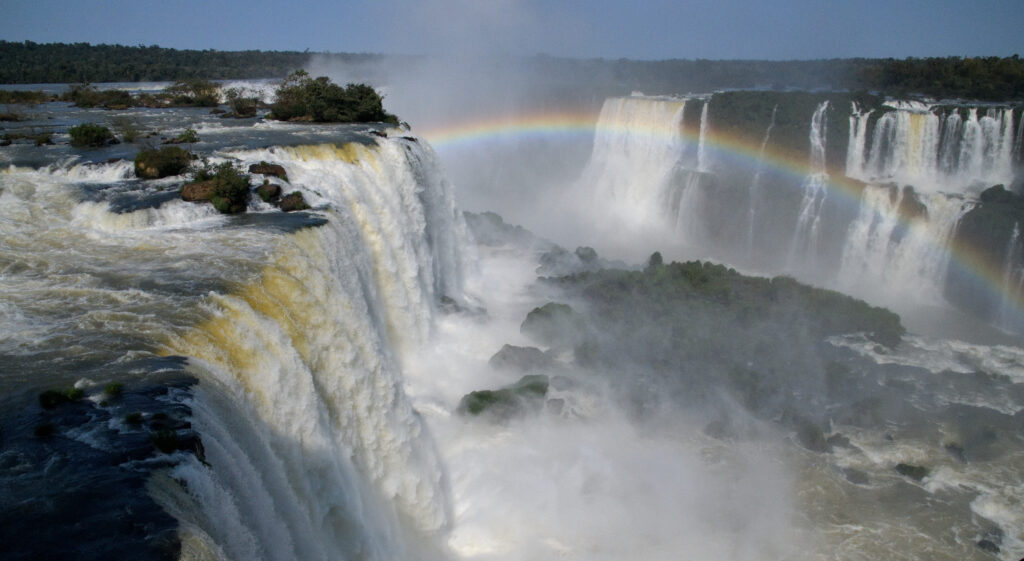
After lunch beside the river above the falls, we return to the airport, say “adeus” to Marcelo and begin the journey home, with so many memorable highlights to contemplate from this amazing trip.
